Posts Tagged: Korean
Samgyetang
What is samgyetang?
Samgyetang is ginseng chicken soup. “Sam” for insam (인삼), the Korean word for ginseng; “gye” refers to chicken; “tang”(탕) is a soup. It is a hearty and delicious soup that tastes great during chilly months. It is also surprisingly popular during the hottest days of the year in Korea where eating steaming hot food is believed to have a cooling effect on the body.
My first time…
The first time I ate this soup was on a chilly afternoon in Seogwipo City on Jeju Island. Hungry and cold, I was wandering around an area known for restaurants. It was the off-season so many restaurants were closed and most others were serving Jeju black pig samgyeopsal, something that is difficult to eat on your own. Feeling defeated, I decided to go to a nearby convenience store to at least buy some kimbap. On my way I spotted a small house with a sign that simply said “삼계탕” (samgyetang) but this little house didn’t look like a restaurant at all.
When I cracked the door open to peek inside, I was surprised to see an older woman sitting on the floor in front of her sofa, watching TV. I quickly apologized and tried to leave, but she got up and gestured for me to come inside. Hardly knowing any Korean, I simply said “samgyetang”? She nodded and gestured for me to sit on the sofa. She unfolded a small square table in front of me and then disappeared. I sat alone in this room, watching TV and silently wondering if I had made some kind of a mistake. But, a few minutes later, she came back smiling and put 2 or 3 dishes of simple banchan on the table in front of me. And, a little after that, she came back with a steaming black earthenware bowl containing a single small chicken in a bubbling broth.
I ate this delicious steaming meal as fast as I could without burning my mouth. The woman seemed pleased when she saw all the empty plates. I gestured to pay, she accepted my money with a nod and a smile and I was on my way.
That meal seems like a mystery to me to this day. Was it really a restaurant? Was it a dream? It seemed like some kind of a magical chapter in a book. Someday I will return to investigate. These are the best kinds of travel experiences. There is something deeply lonely about traveling by yourself, but I think that it also opens many doors that may not have otherwise materialized at all. Like the door to this little house where I first ate samgyetang on a chilly afternoon on Jeju Island, perched on the edge of a sofa watching TV.
Ingredients
I made this recipe in a single large pot with a small whole chicken to eat family style. If you prefer, you can also make 2 separate portions out of this using the same amount of ingredients and 2 Cornish hens instead. It looks prettier when you serve each person their own whole bird and it is a lot less messy. Chickens are quite a bit less expensive and easier to find than Cornish hens so this is what I usually use.
- 1 small to medium chicken (or 2 cornish hens)
- 15-20 whole cloves of garlic
- 2 fresh ginseng roots
- 4 dried red dates (jujubes/daechu)
- 1 cup short grain rice (you can substitute with glutinous rice/chapssal)
- 2 green onions
- salt and pepper
I am always able to find fresh ginseng at Asian grocers. Same goes for red dates: you may see these called Chinese red dates, jujubes or daechu (대추).
***At the end of the soup recipe there is a recipe for dipping sauce to go with it. Scroll to the bottom for that one. You can make it while your chicken is cooking.
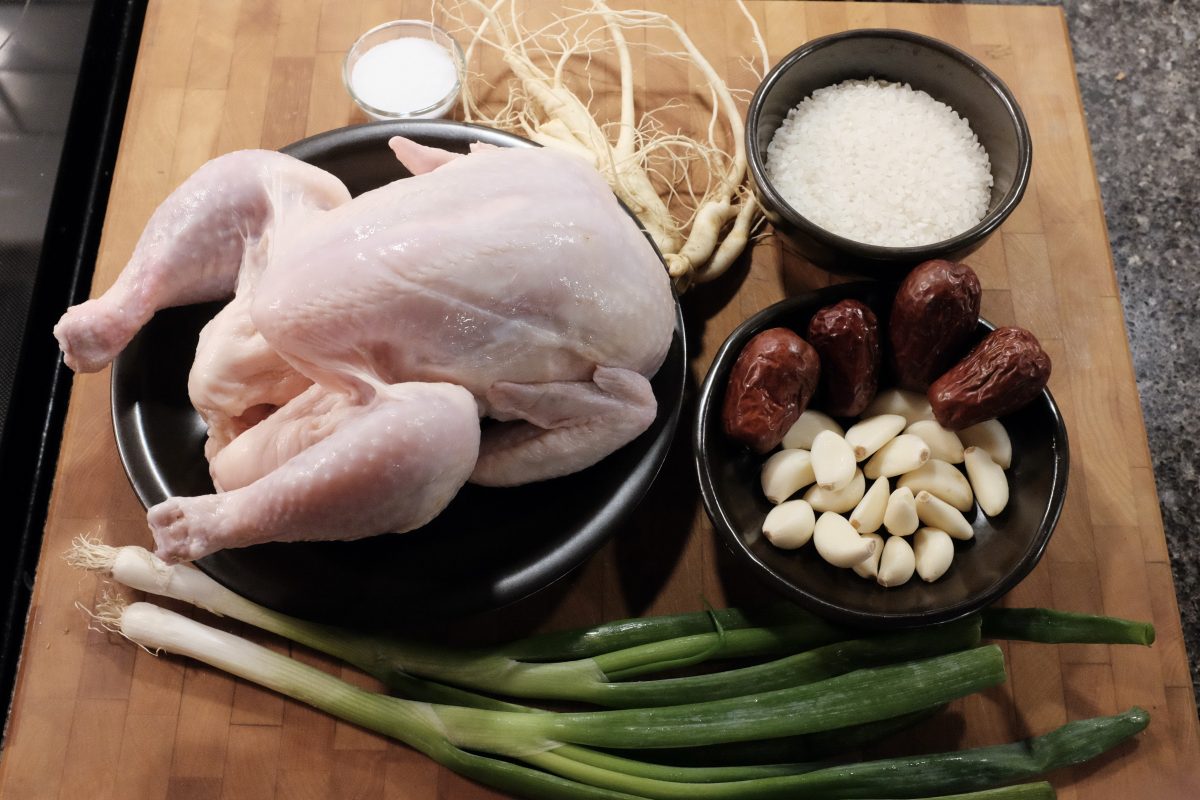
Process
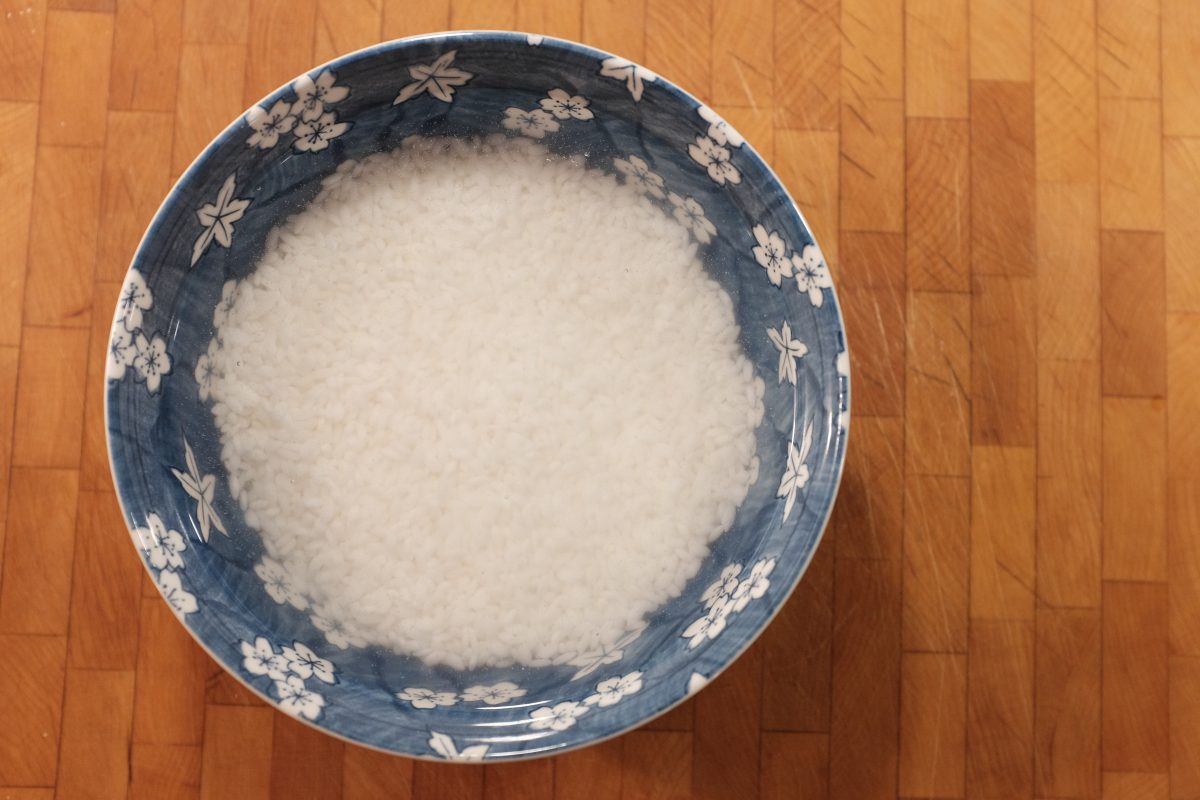
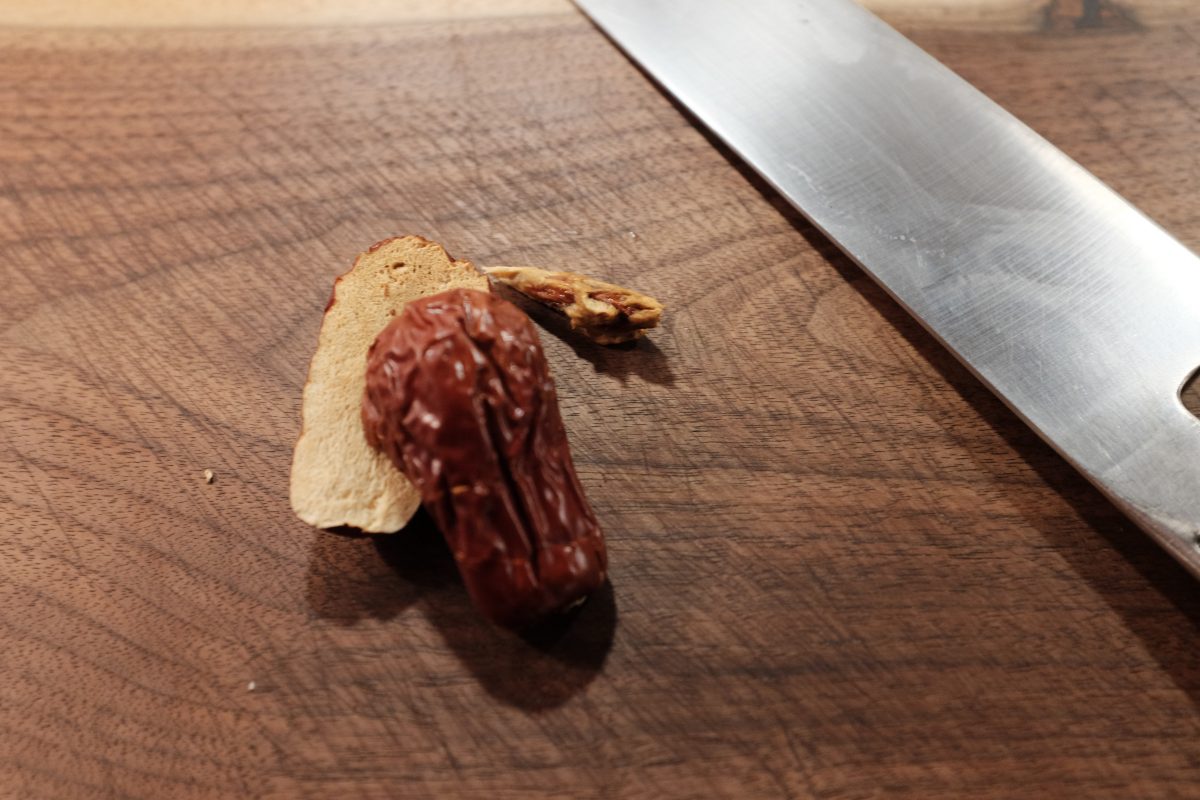
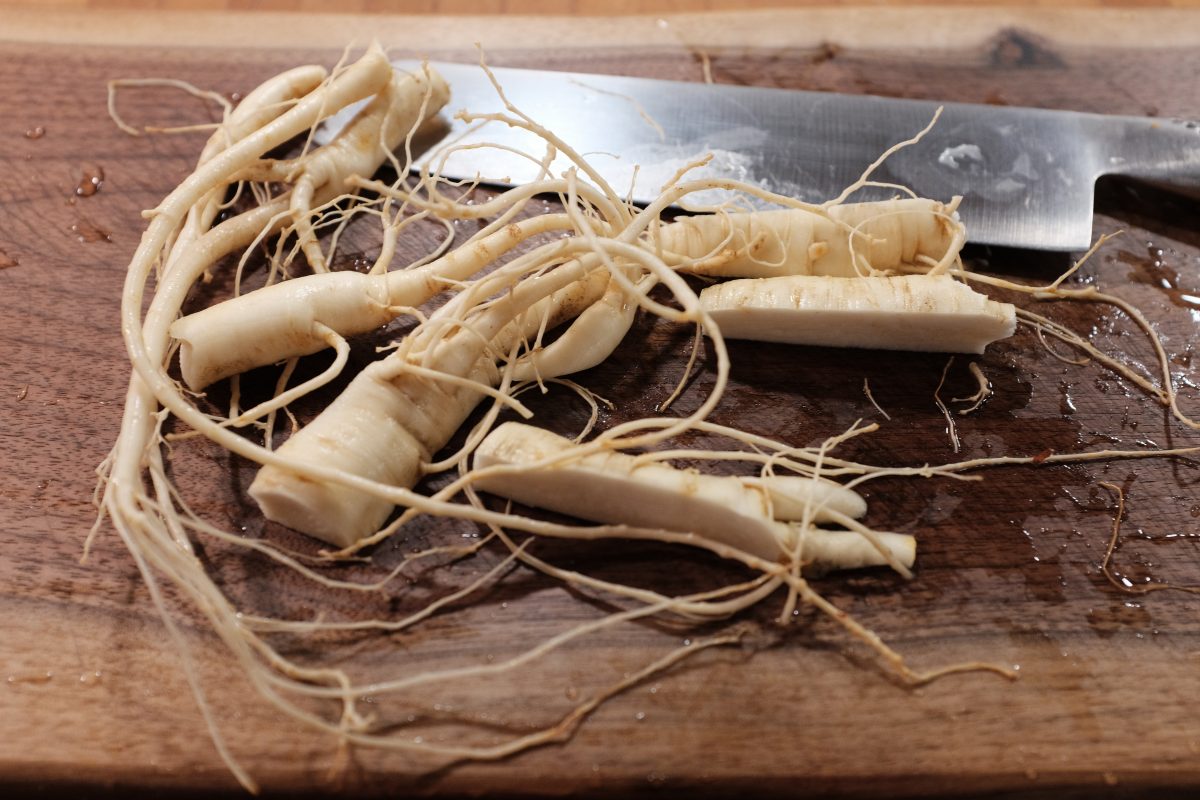
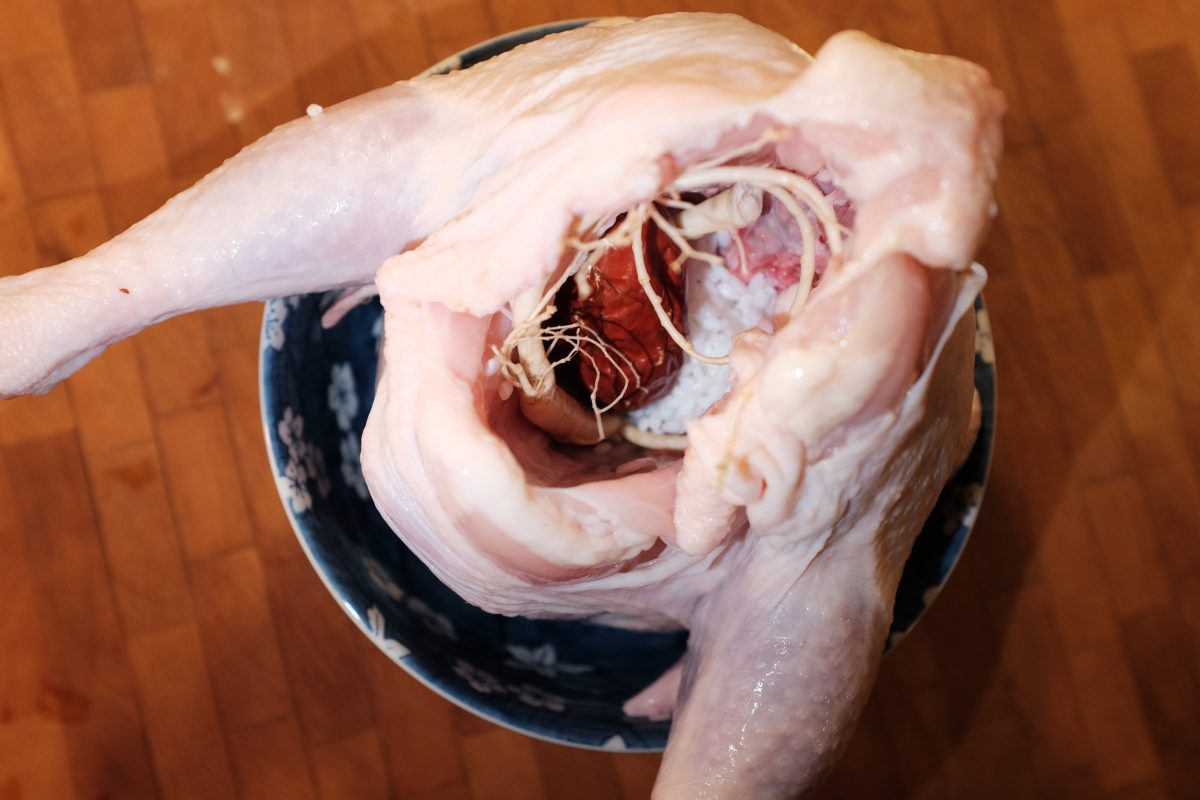
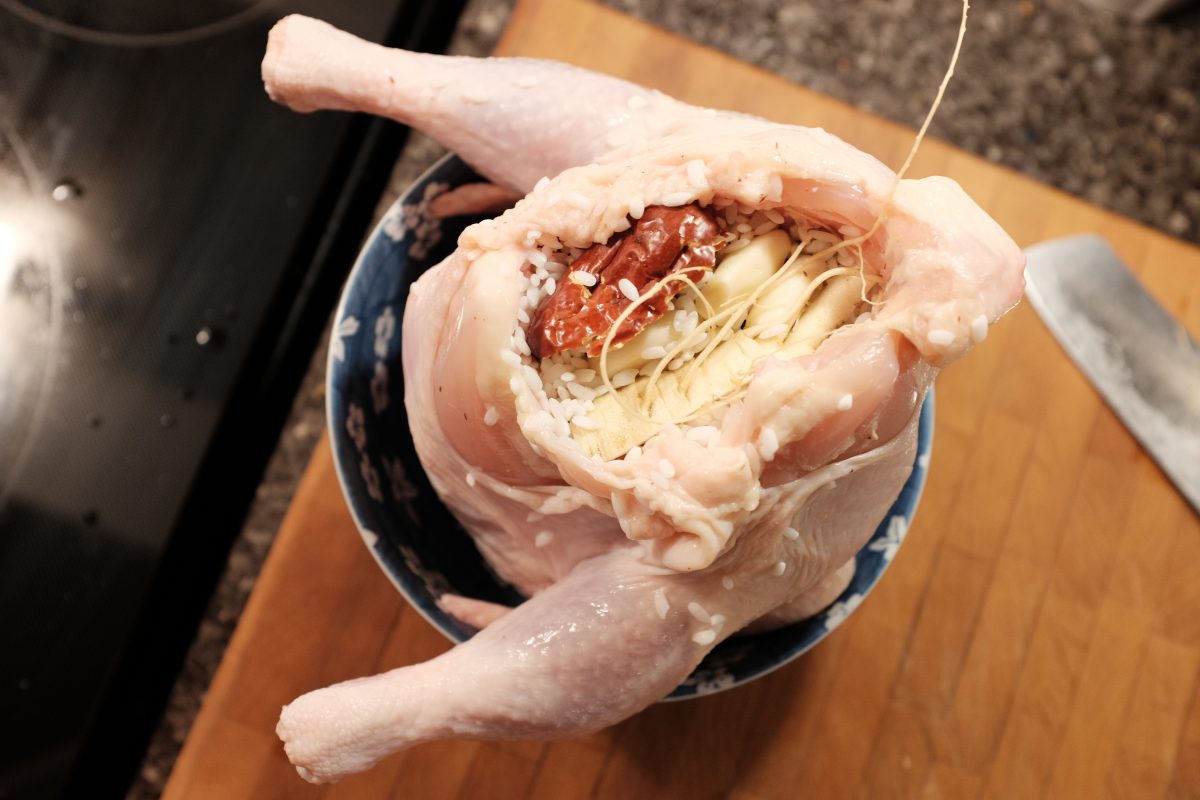
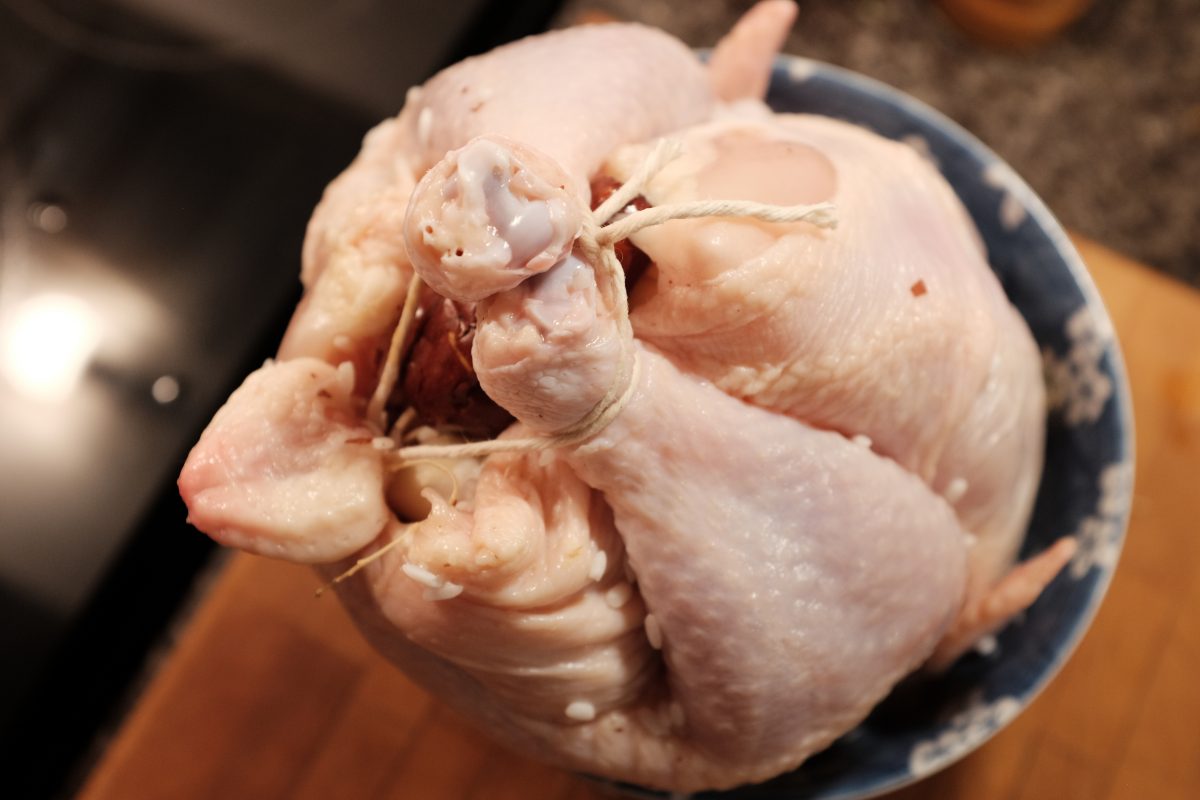
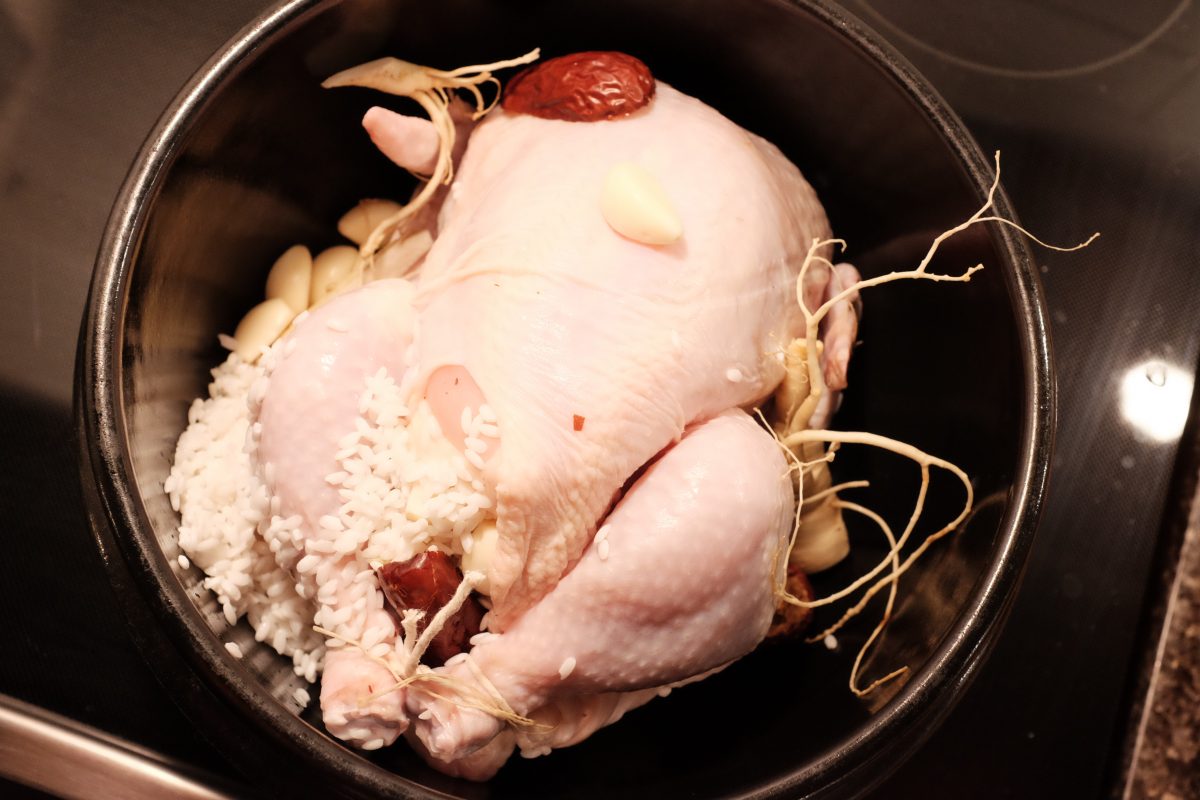
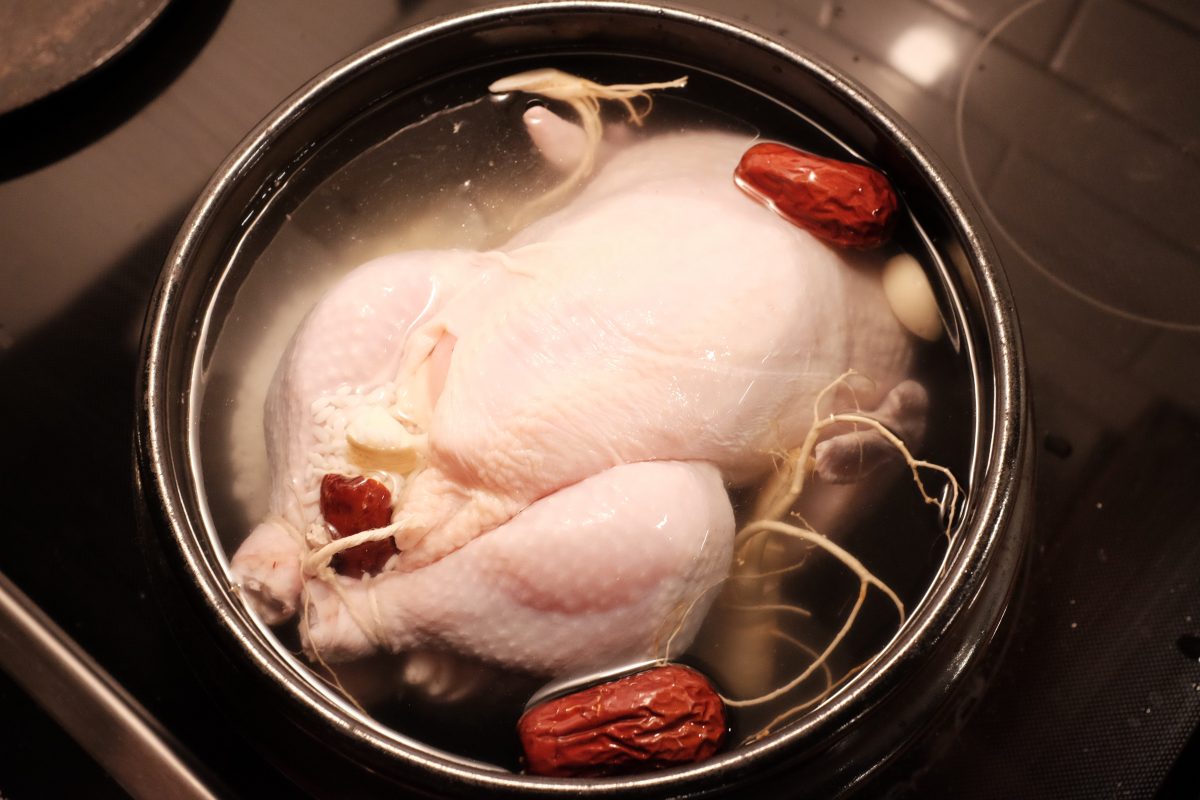
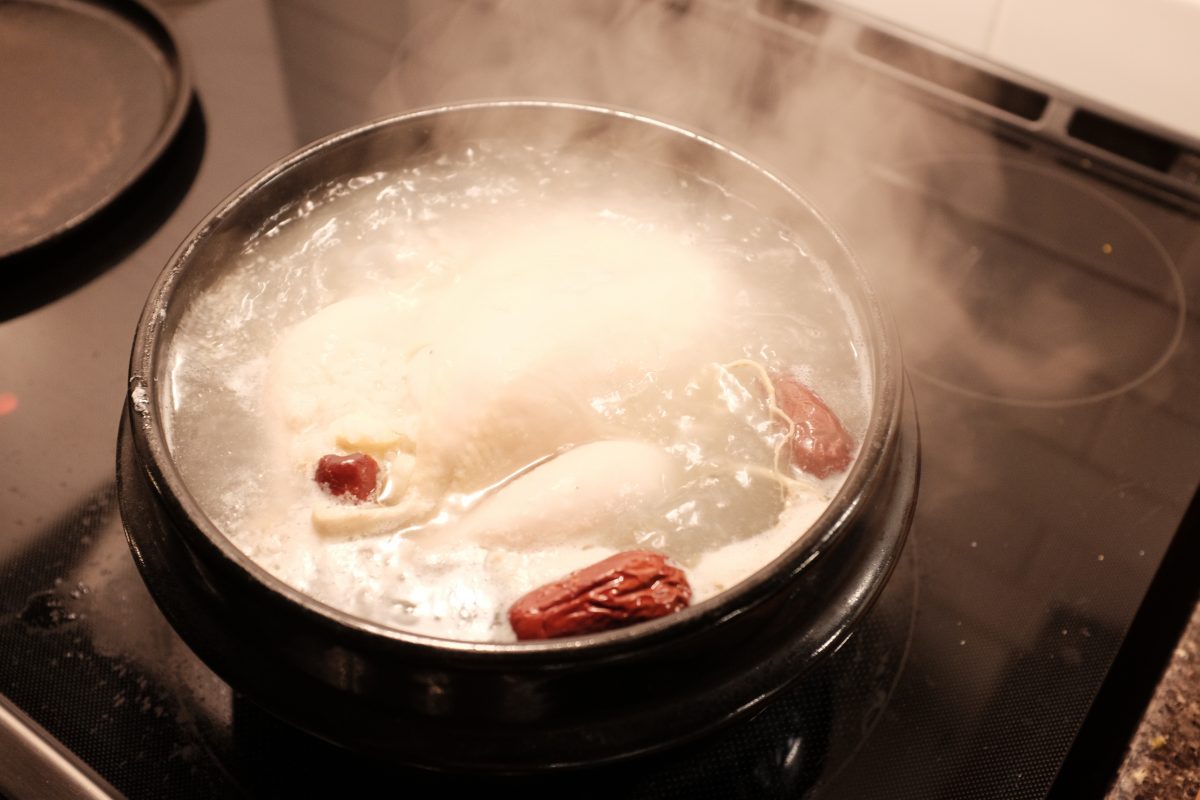
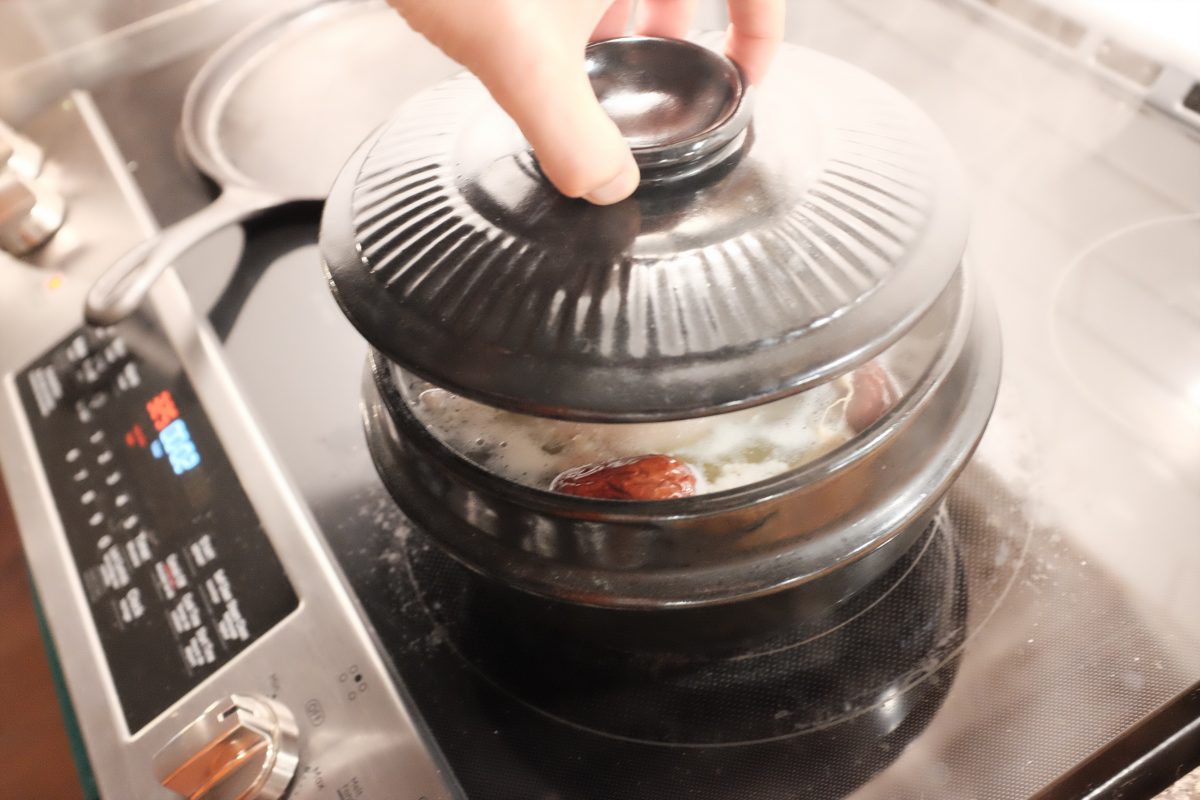
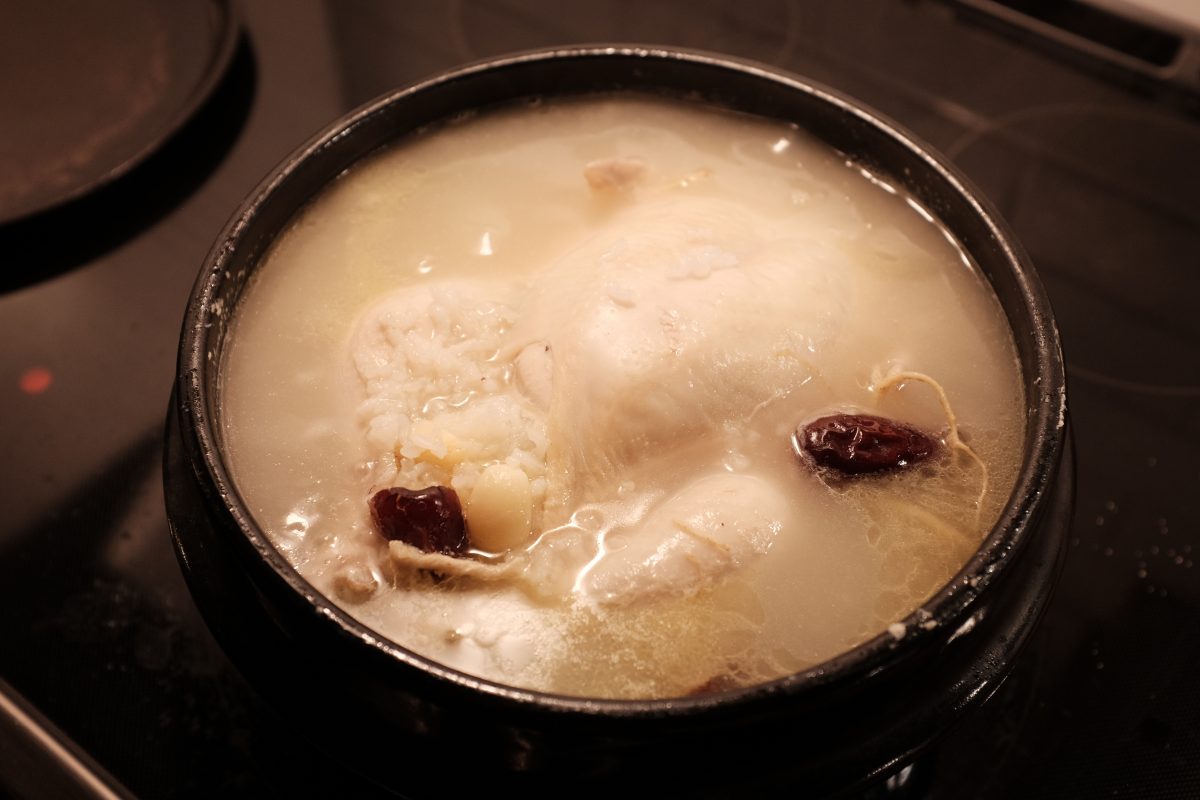
Serving
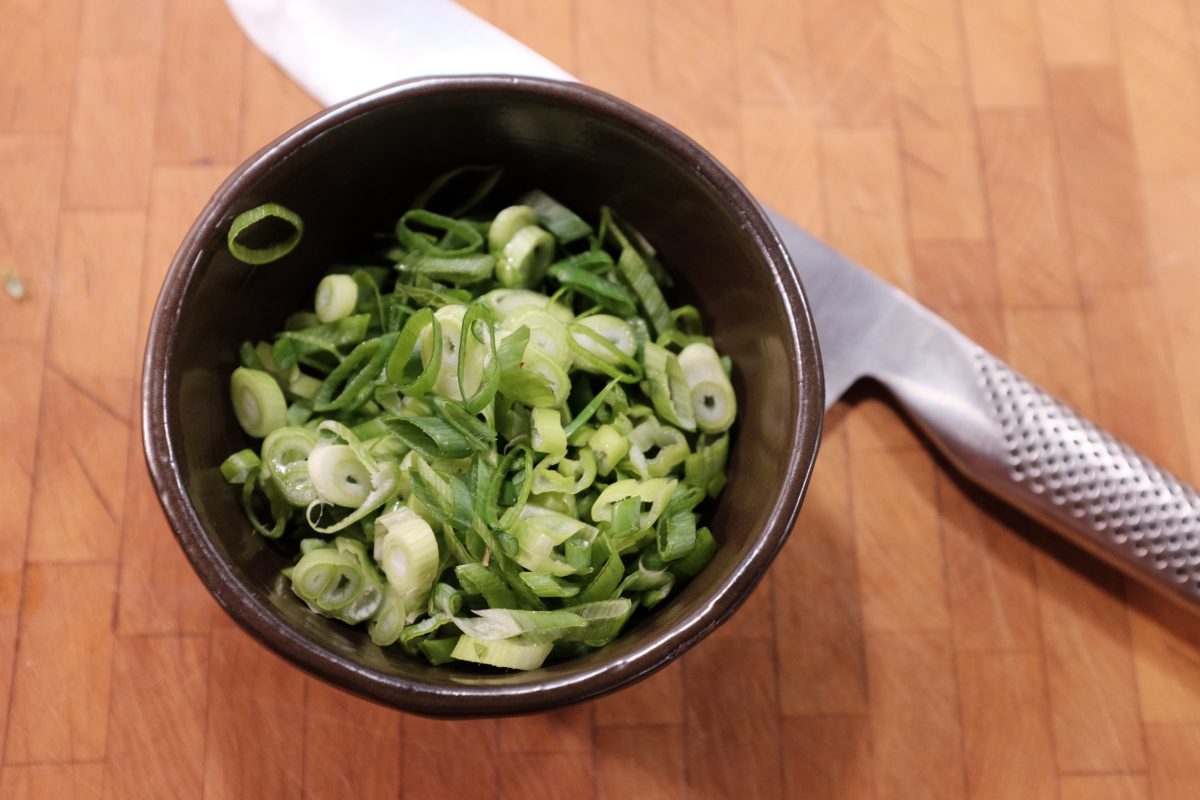
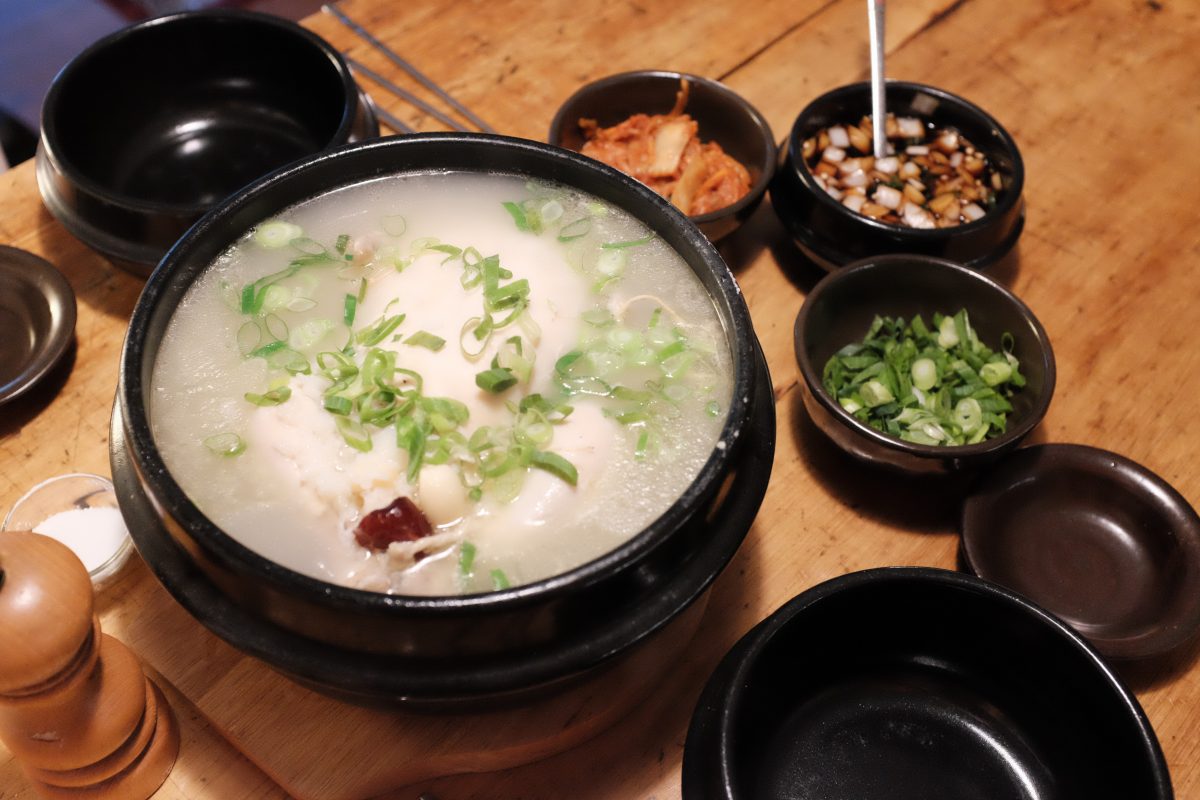
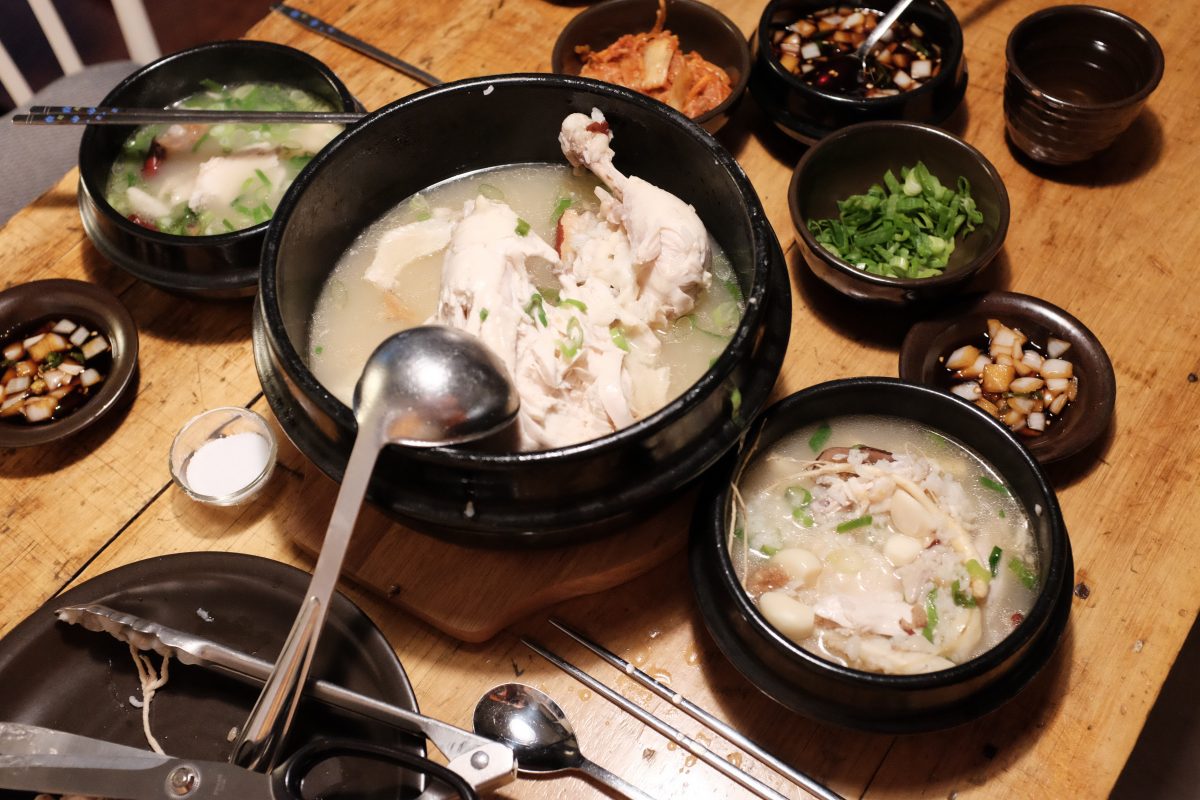
Soy and vinegar dipping sauce
Ingredients
- 100ml (around 6 tablespoons) brewed soy sauce
- 50ml (around 3 tablespoons) white vinegar
- 12-13gr (1 tablespoon) white sugar
- 1/2 medium white onion
- 1 green long chile or jalapeño
I like regular harsh white vinegar for this recipe. You can substitute rice vinegar or apple cider vinegar but I would avoid using wine vinegars. Use regular brewed (Japanese style) soy sauce, not Korean soup soy sauce. Use an equal amount of honey if you prefer it over white sugar. You can leave out the chili altogether but, I would recommend just taking the seeds out if you don’t want any spice. The “greenness” of the chili adds alot of flavour here.
Process
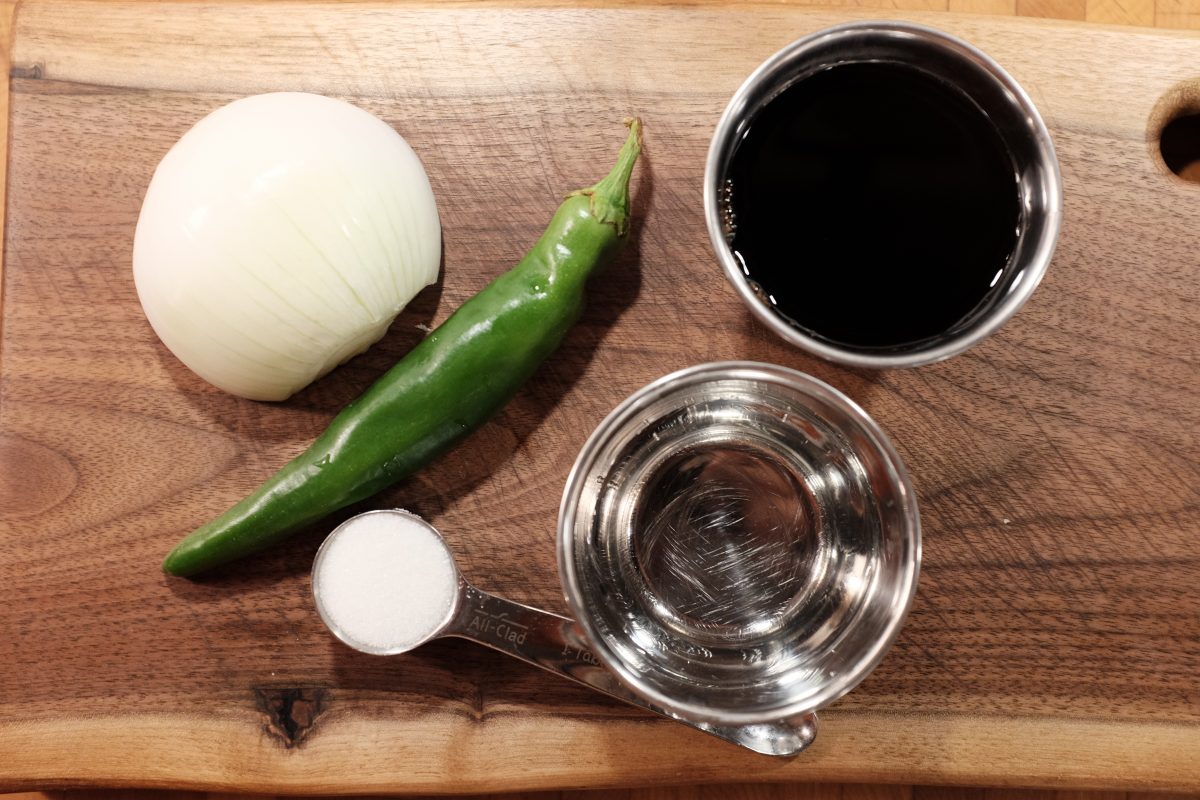
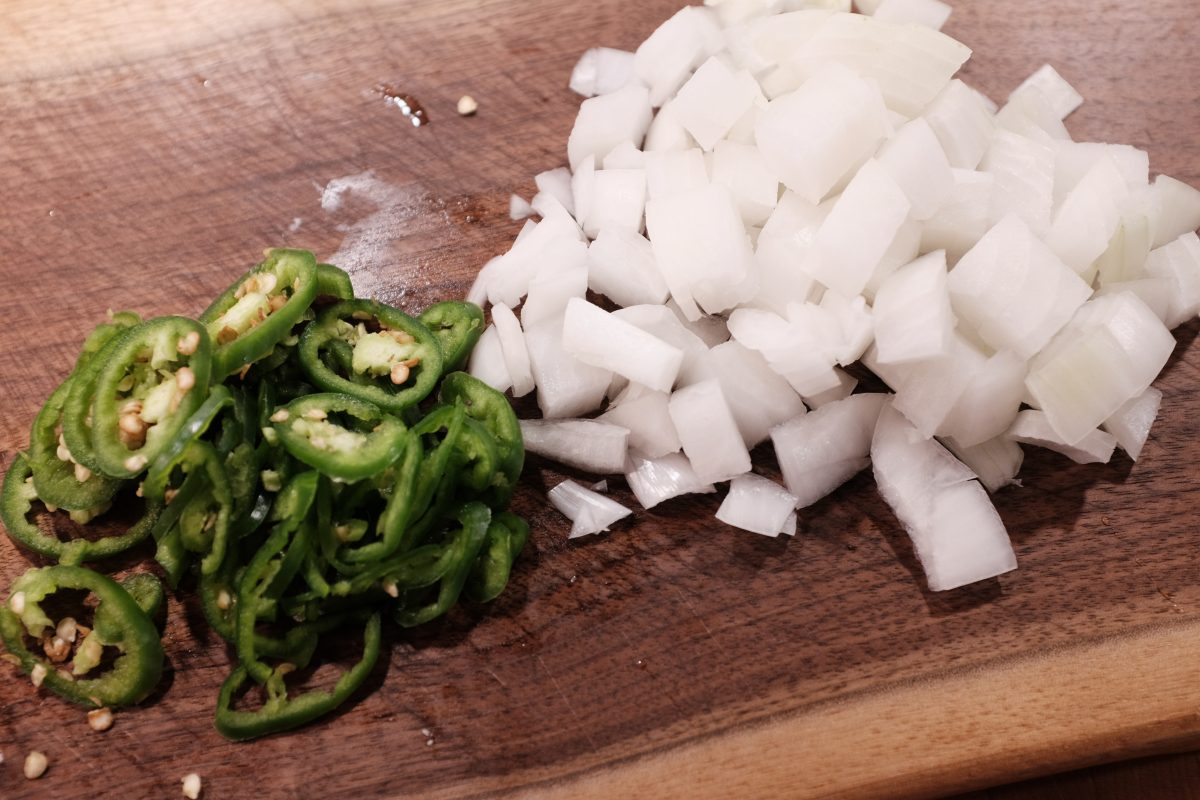
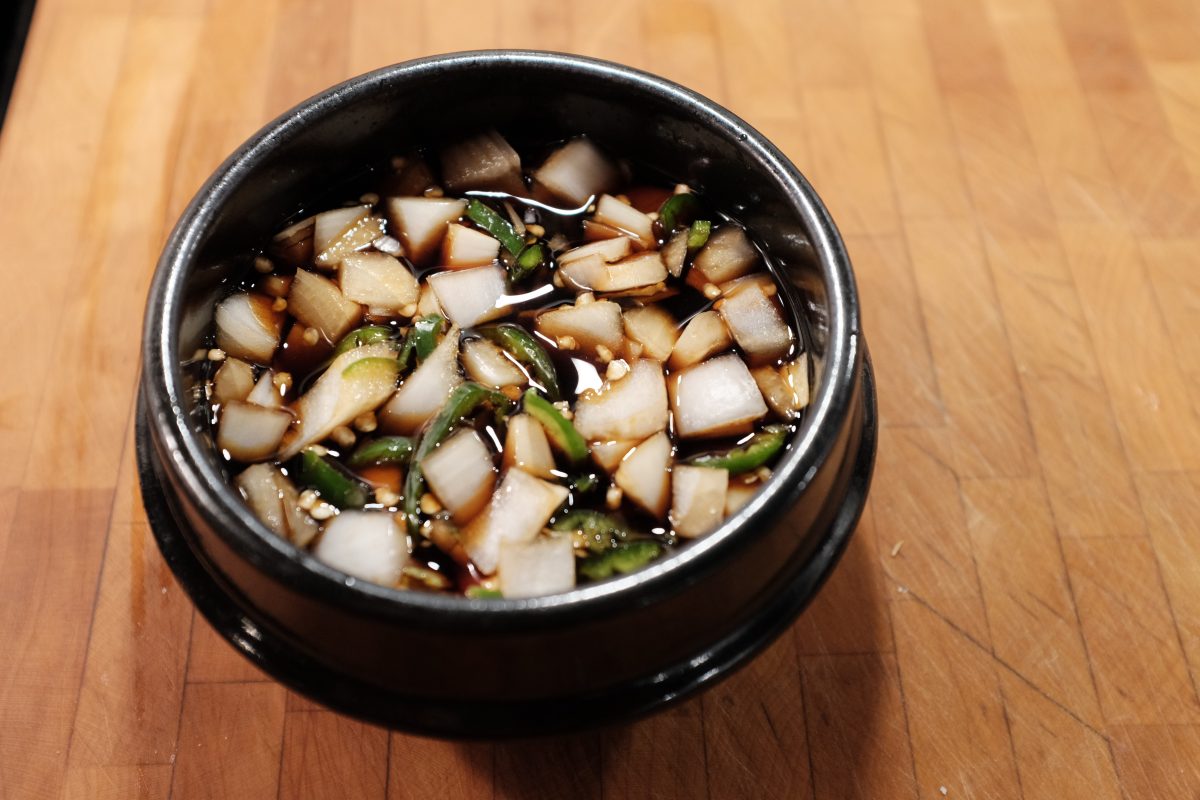
This is one of my favourite soups. Hot and satisfying, it is especially good when you are feeling a little sick or run down. It is one of those meals that seems to instantly fortify the body much like my other favourite seolleongtang.
If you need a homemade kimchi recipe to go with any of your Korean cooking, click here.
If you have any comments or questions, please leave them below. Thanks for reading.
Vegan Napa Cabbage Kimchi
This is a tested recipe for anyone who does not eat meat, anyone with shrimp allergies or anyone who does not like the fishy taste of fish sauce. Once this recipe ferments, you will have a tasty vegan kimchi that you can use just like any other kimchi. It is a variation on a cut kimchi recipe that I posted previously. If you are interested in making a kimchi with all the seafood included or if you are interested in more information about kimchi in general, you can find that by clicking here.
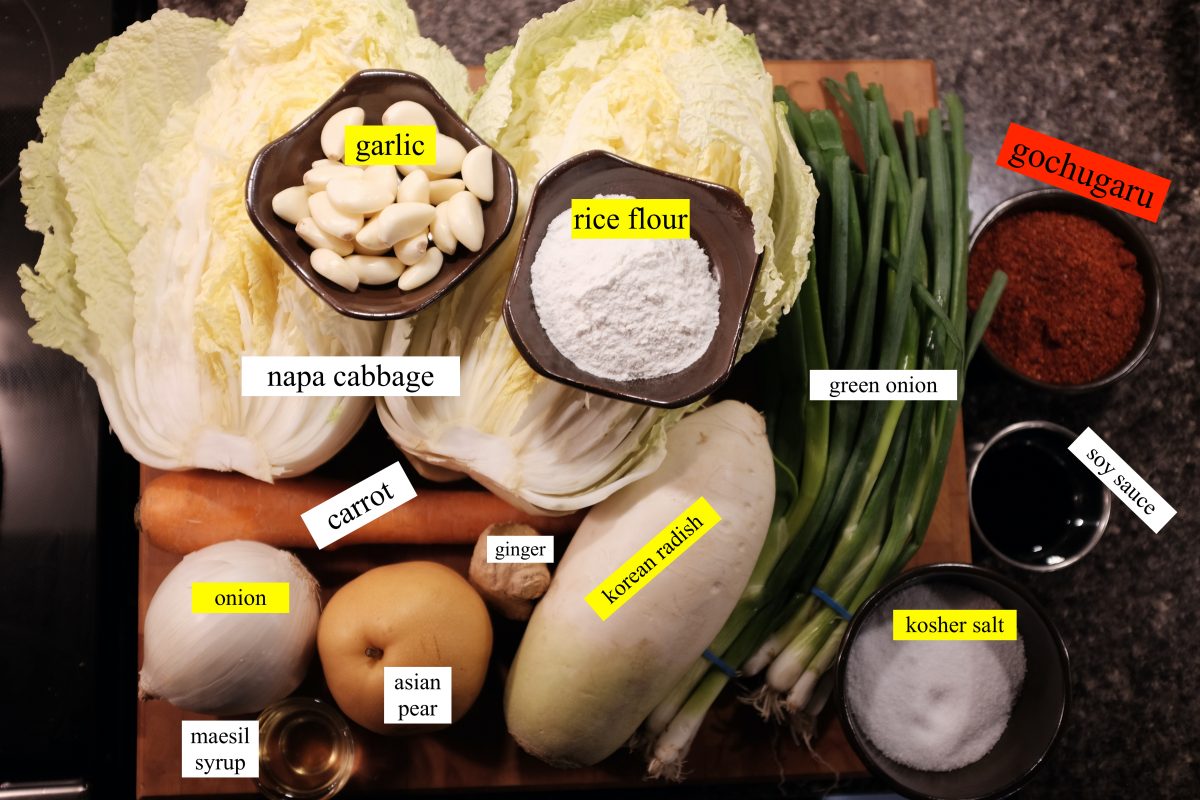
Ingredients
- 1 large (2kg) Napa Cabbage
- 80 grams/3oz (around 1/2 cup) Diamond Kosher Crystal salt for brining
- up to 2 Tablespoons kosher salt for seasoning (not for brining…save this for later)
- 1 tablespoon soy sauce
- 275ml (1 1/2 cups) water
- 1/4 cup rice flour
- 1 tablespoon white sugar or maesil plum syrup
- 1/2 cup peeled garlic cloves (around 20)
- 1 tablespoon ginger peeled and sliced
- 1 white onion peeled and chopped
- 1 asian pear or apple peeled and chopped
- 1/4 up to 1 cup (30-120 grams) korean chili flakes (gochugaru)
- 2 bunches (12 or so) green onions sliced
- 1 cup carrot matchsticks
- 1 cup korean radish matchsticks
Try to weigh your salt rather than measuring by cups. Diamond Kosher is a popular salt in my area. If you live in the US, you may be using Morton’s. This salt is much saltier by the cup. Same goes for sea salt if this is what you are using. Whichever salt you use, it is better to weigh it. Avoid using table salt.
Rice flour/rice powder is just finely ground sweet rice. Mochiko is a popular brand but any brand will work.
Korean chili flakes are all very different from batch to batch. Some are mild and fruity and some are sharp and very spicy. It is better to start with less, taste, and then add more if you want it spicier.
Process
Cabbage preparation
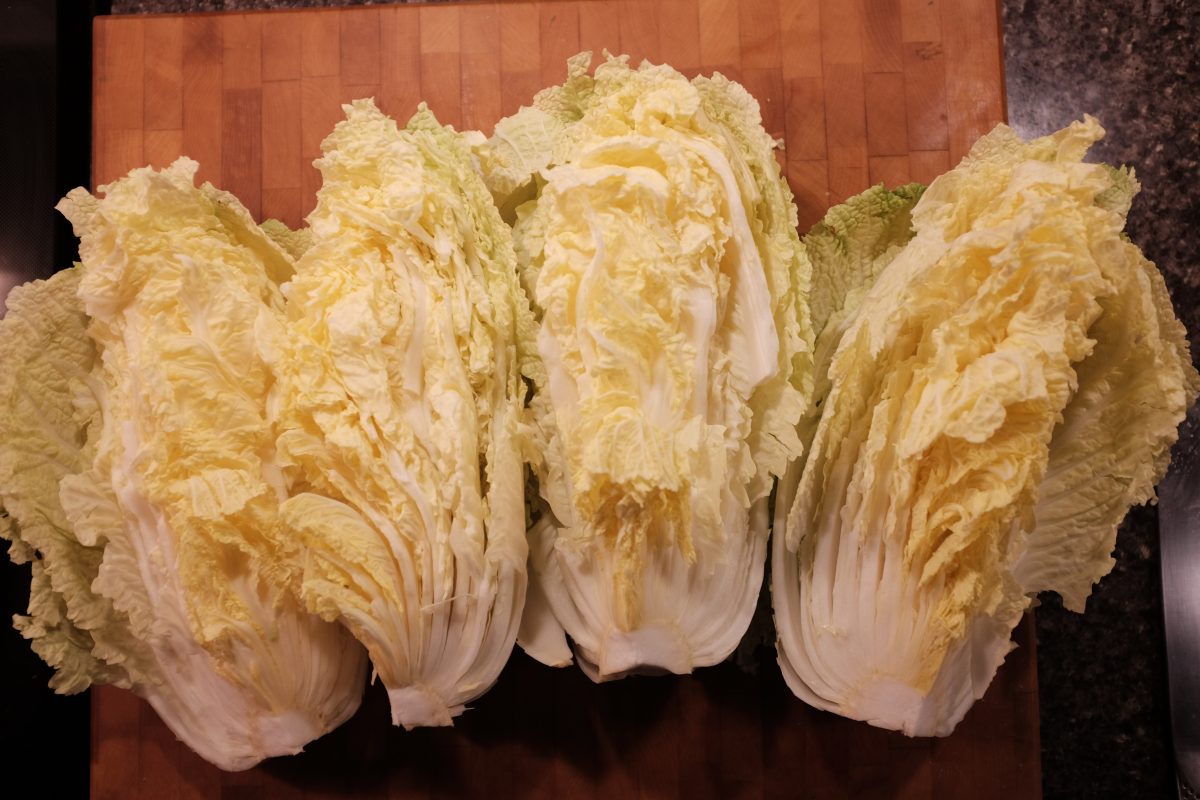
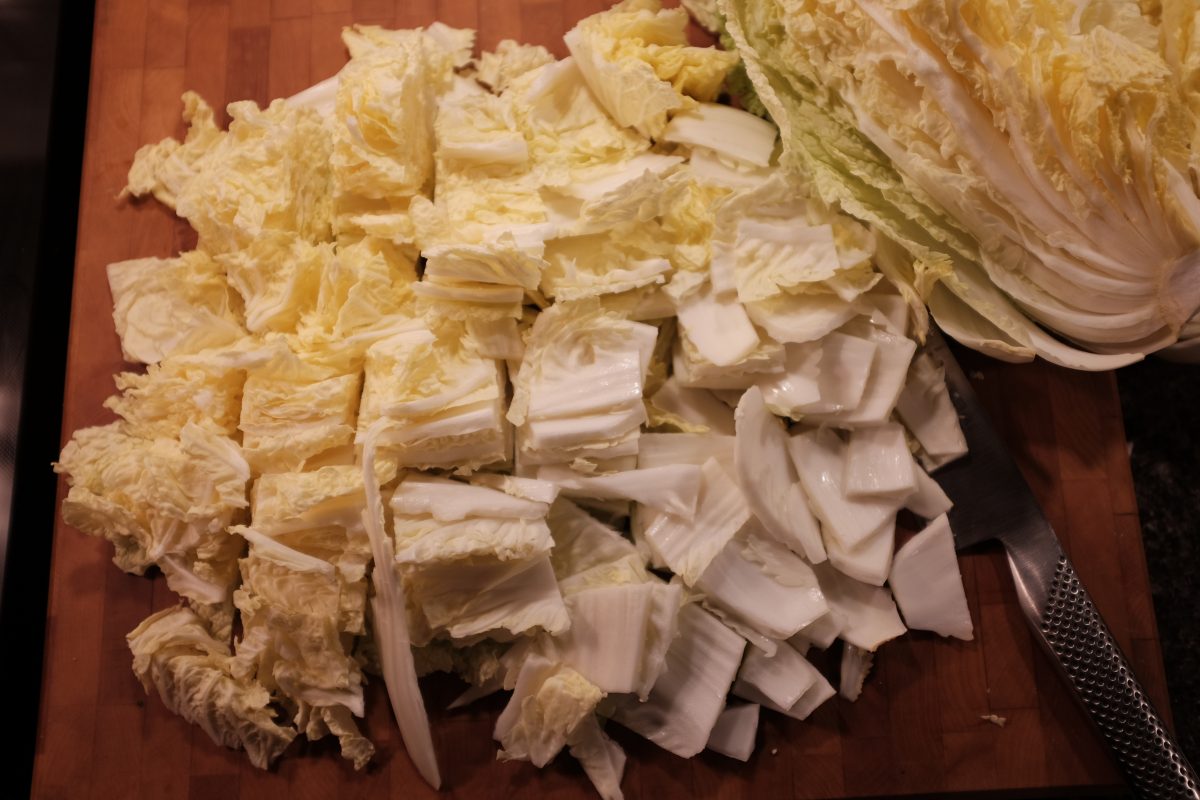
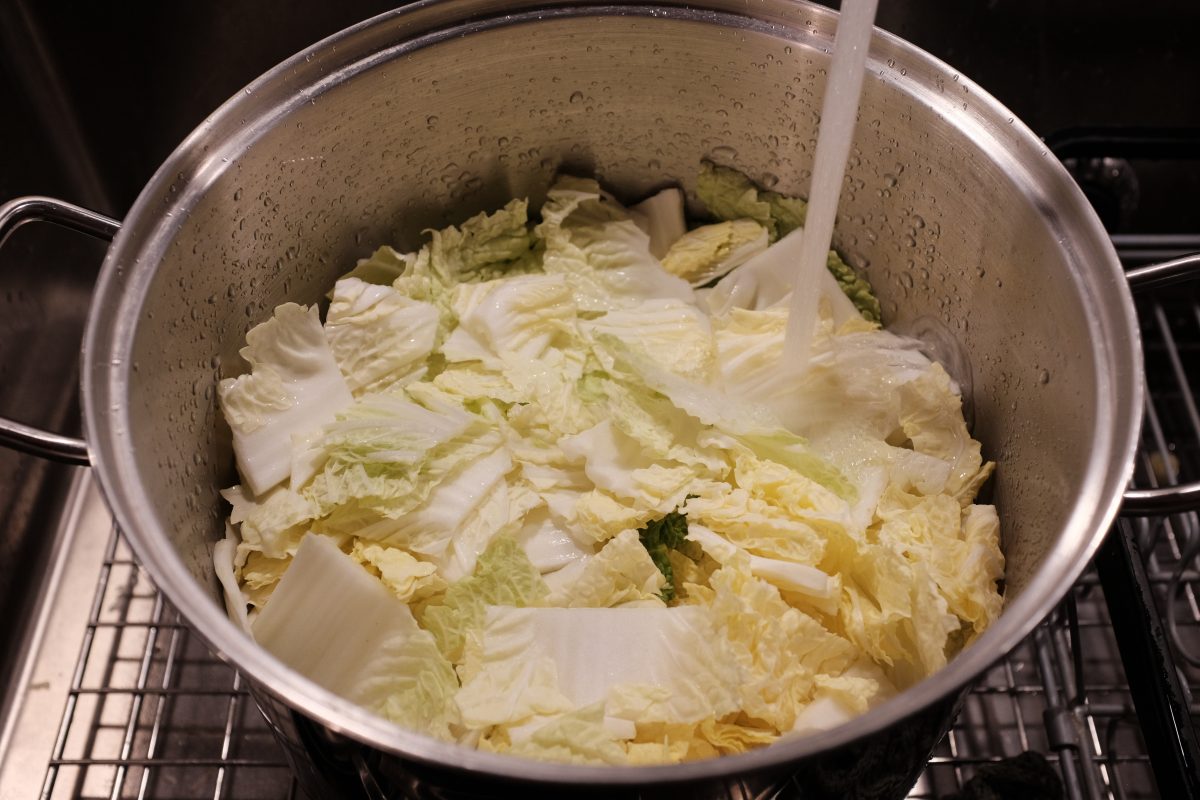
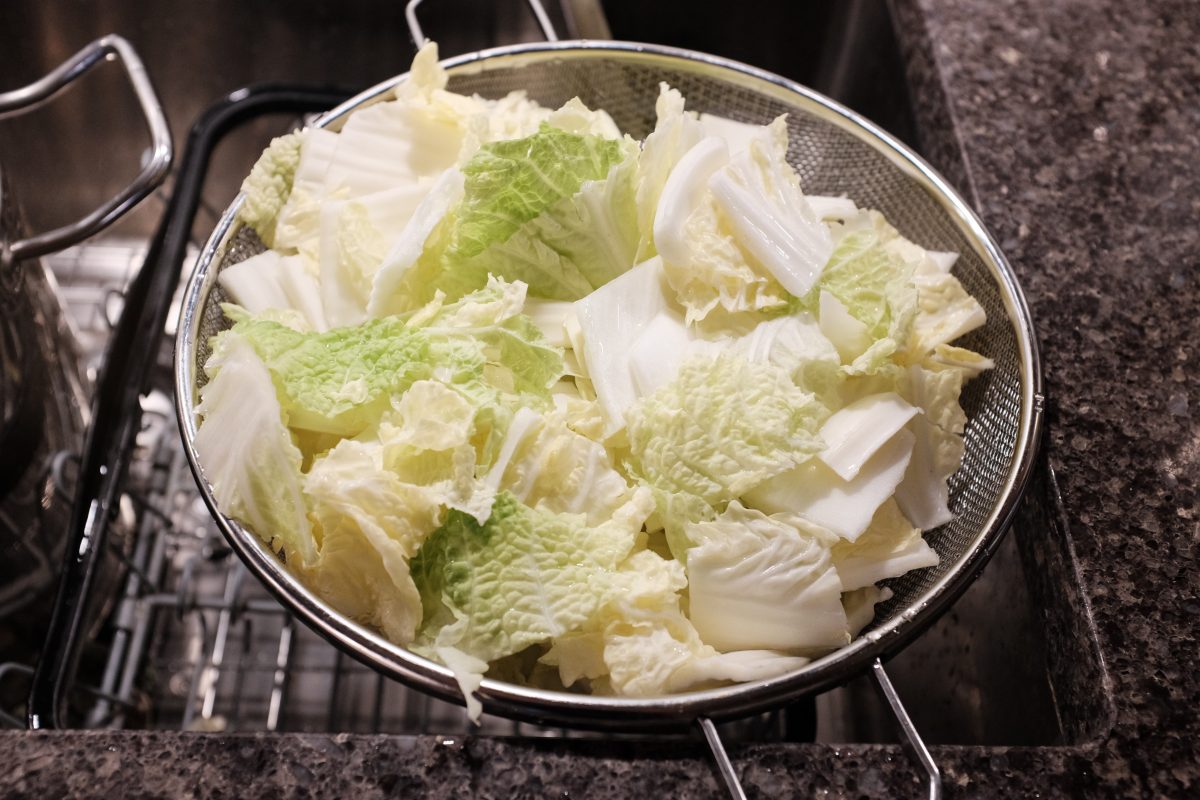
Brining
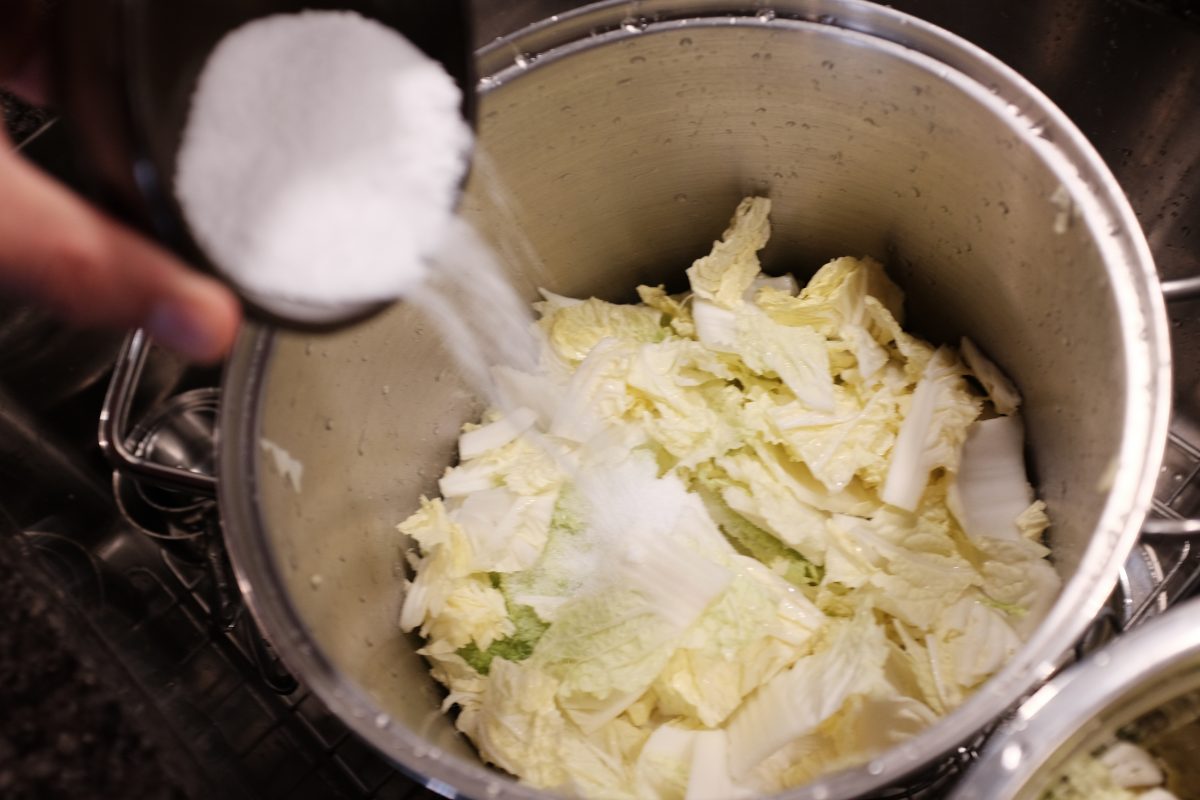
Making the kimchi paste
While the cabbage is brining, make the kimchi paste:
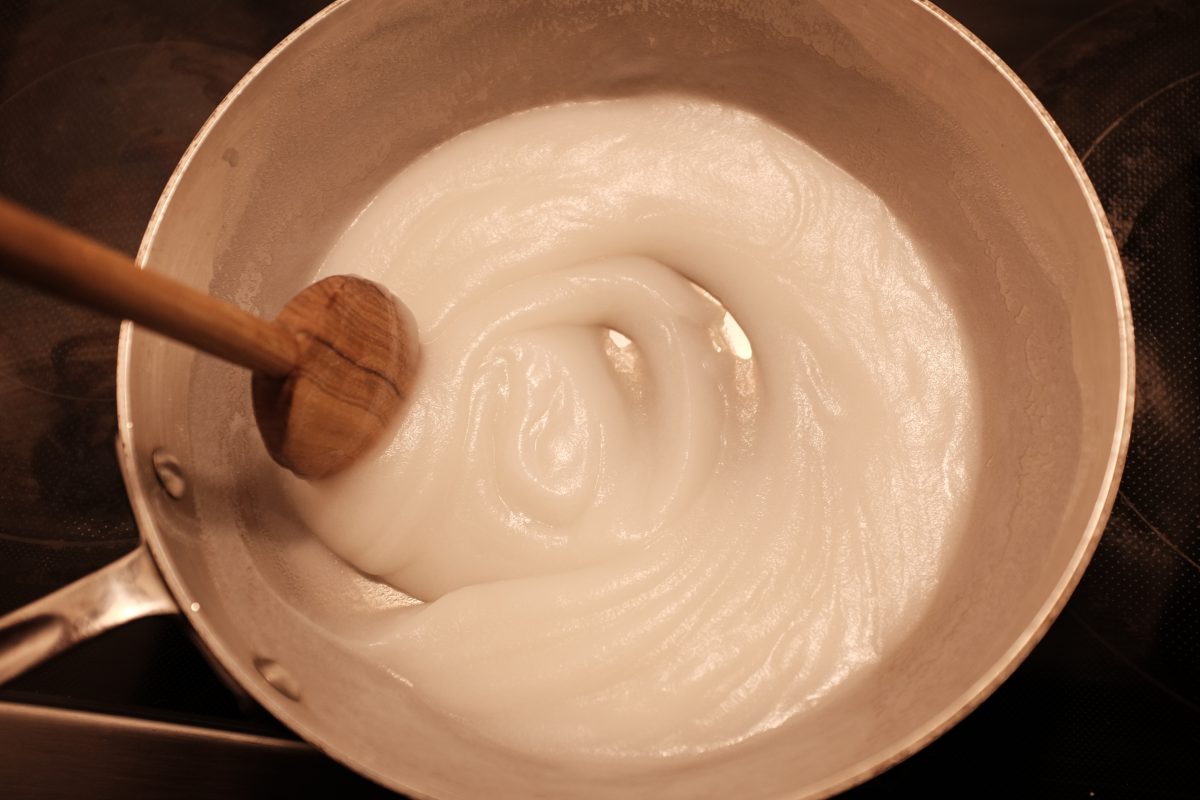
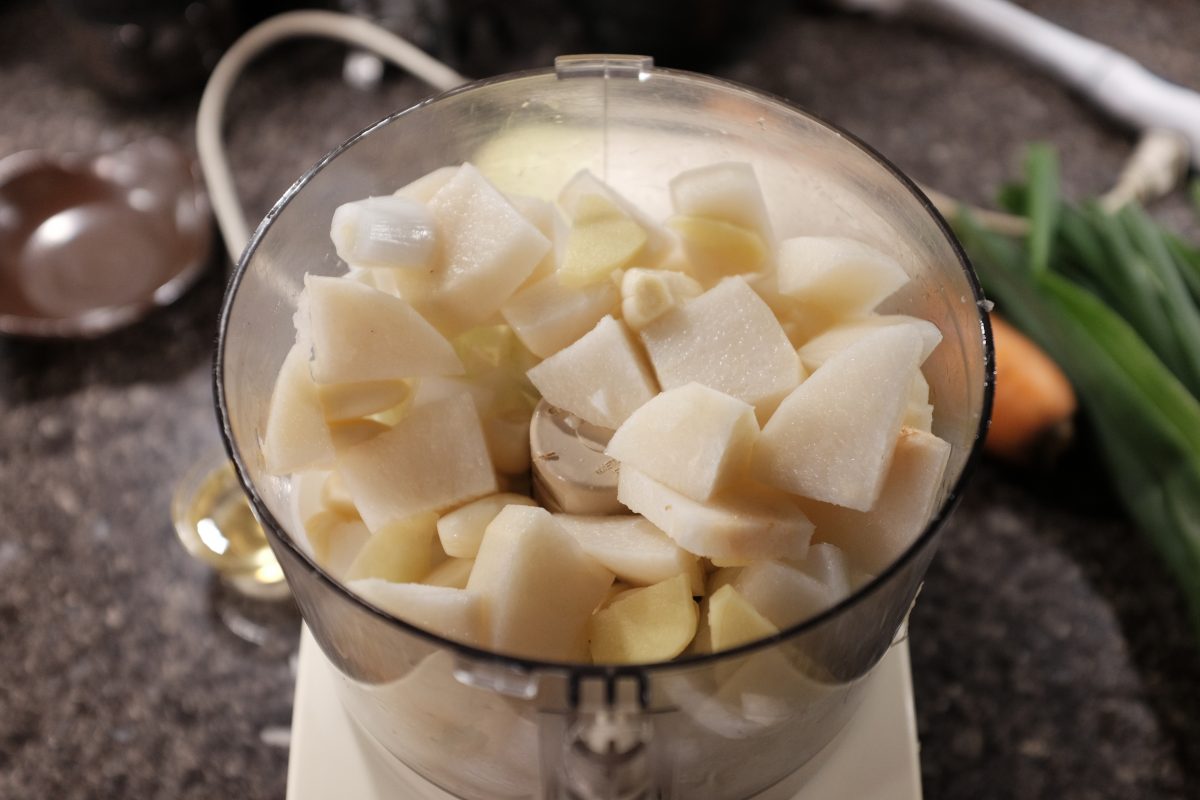
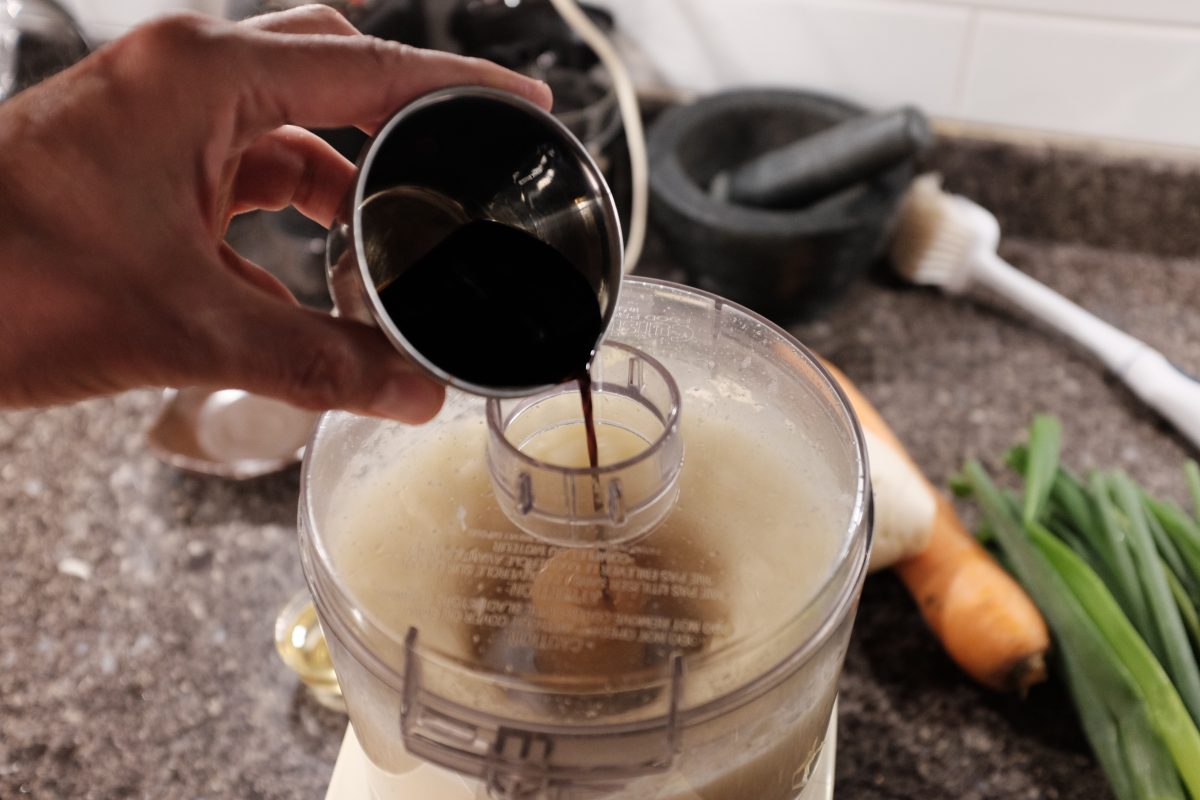
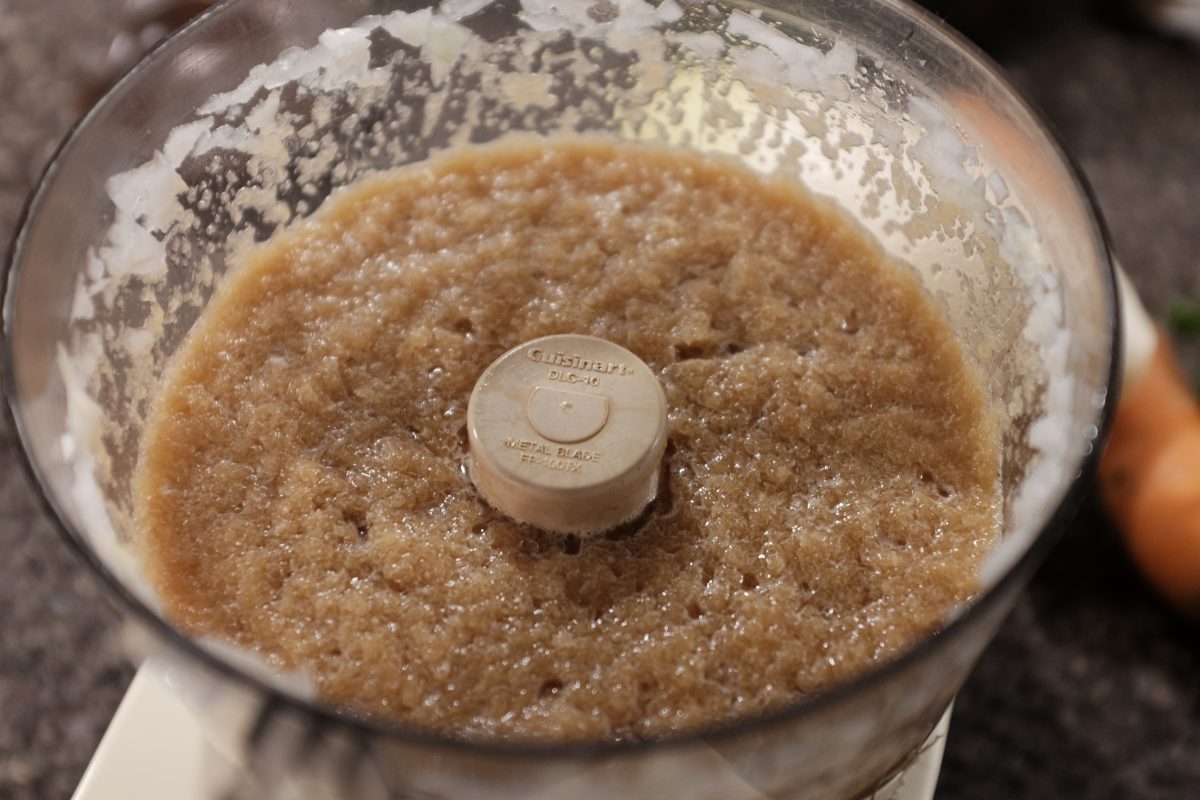
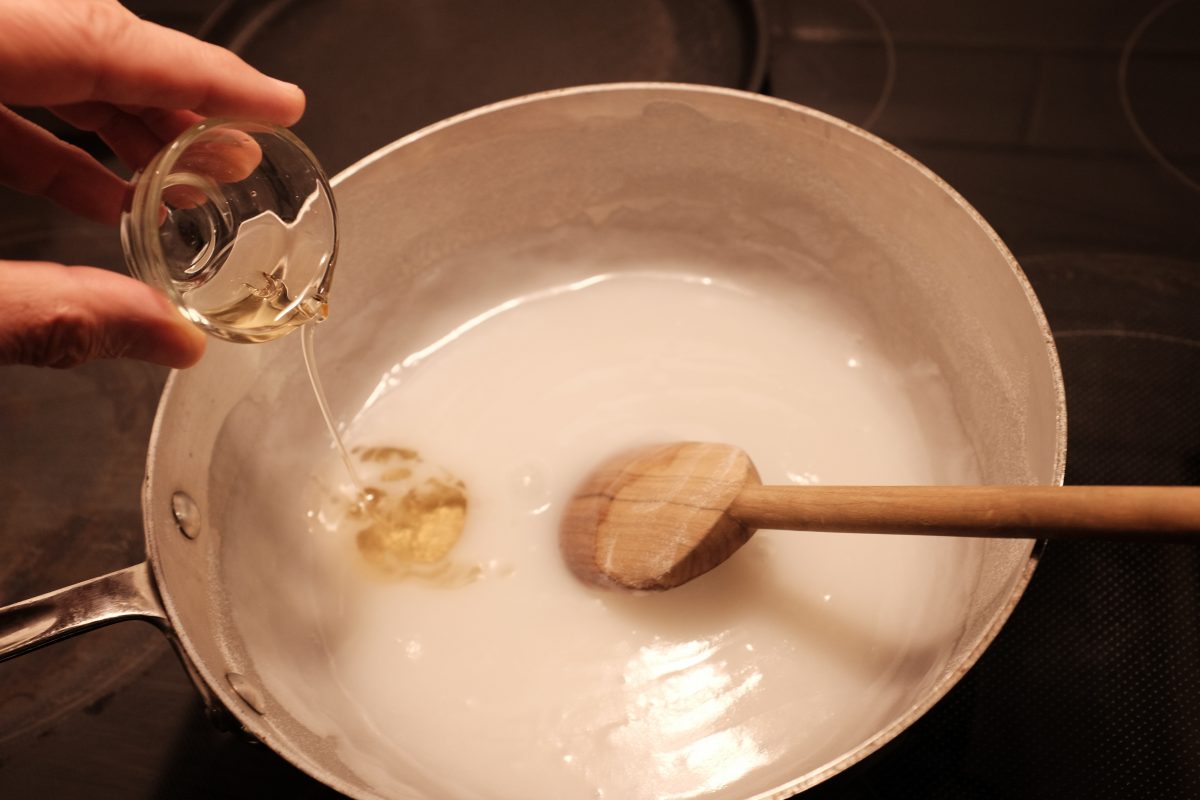
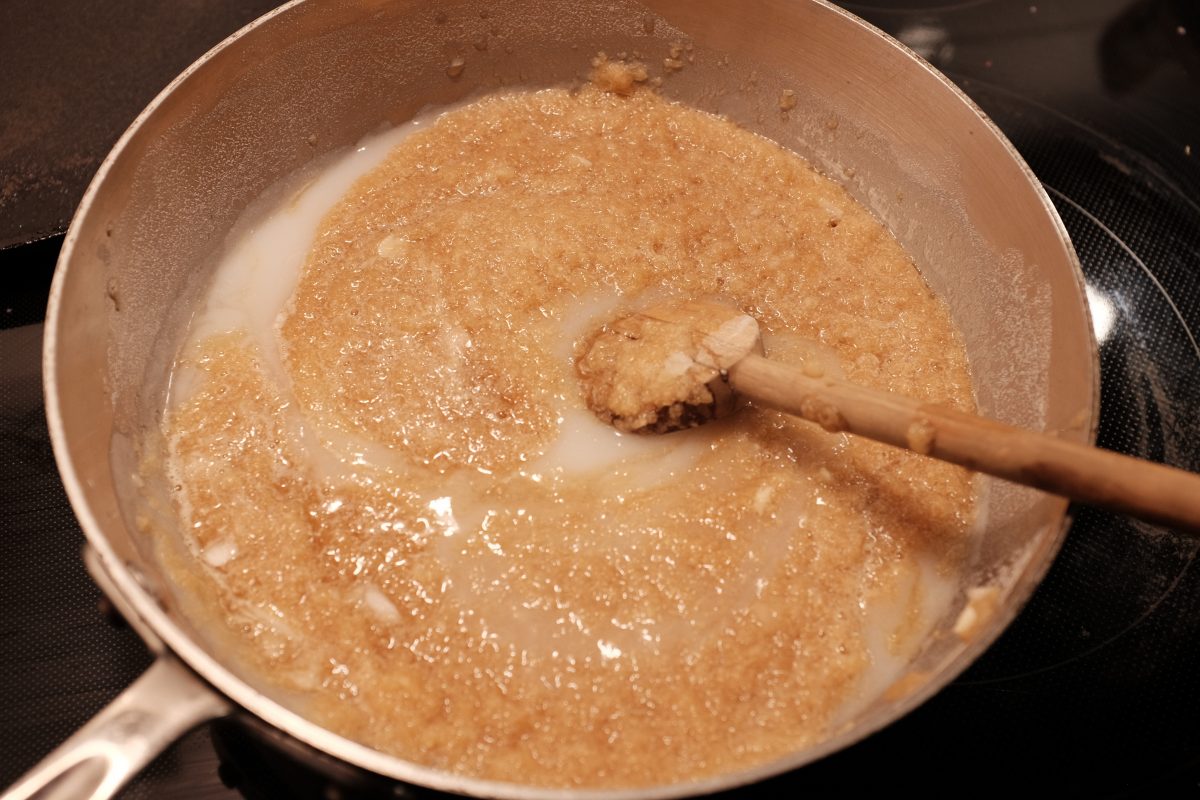
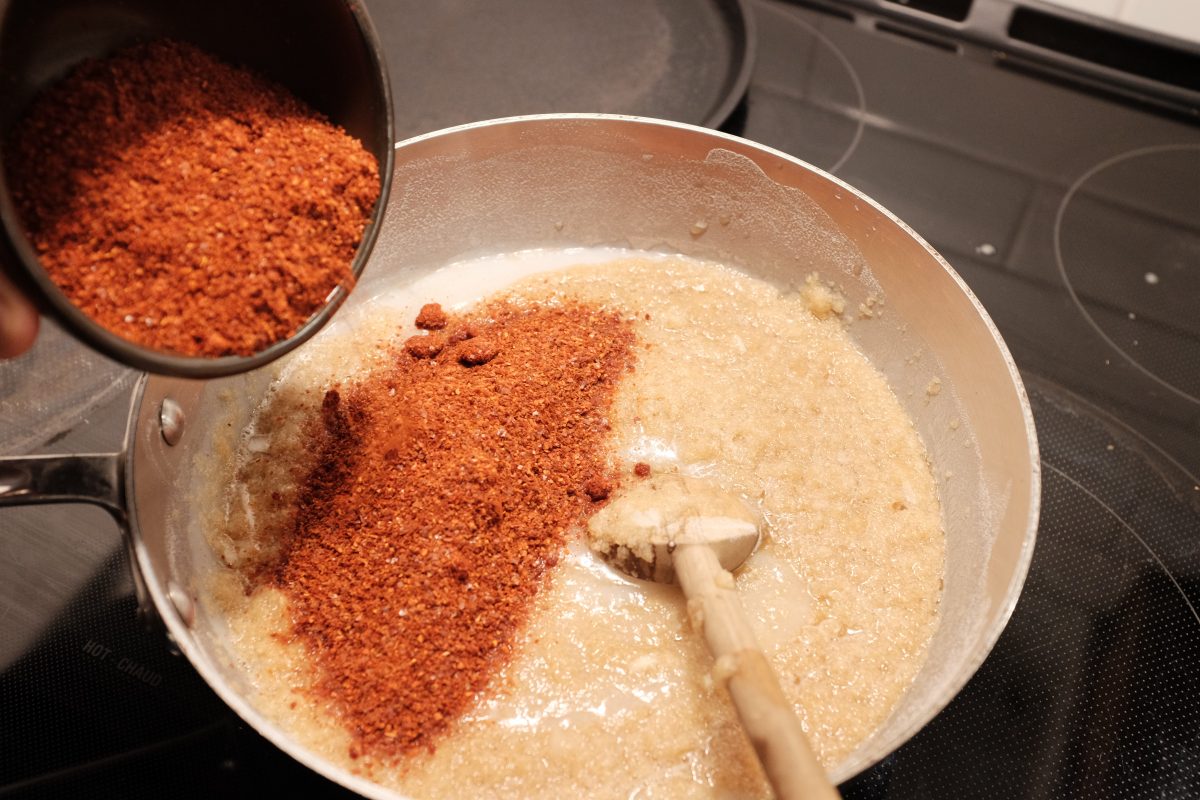
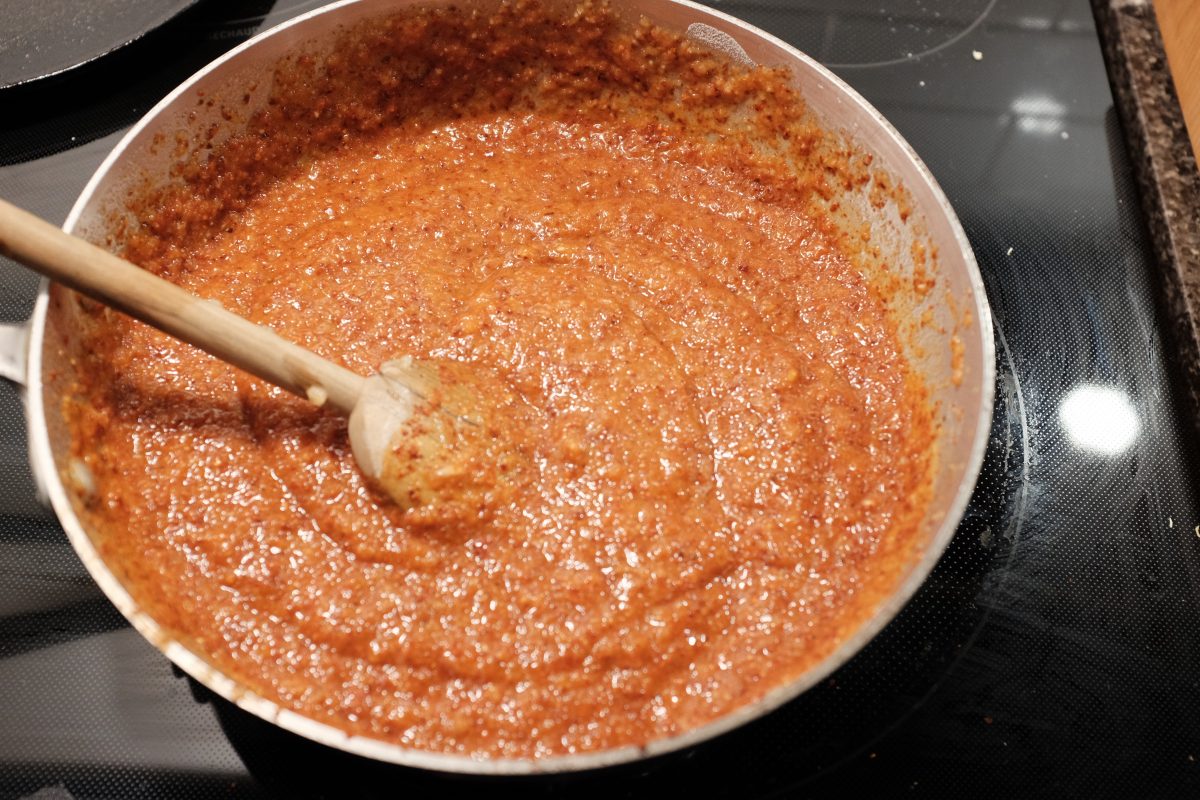
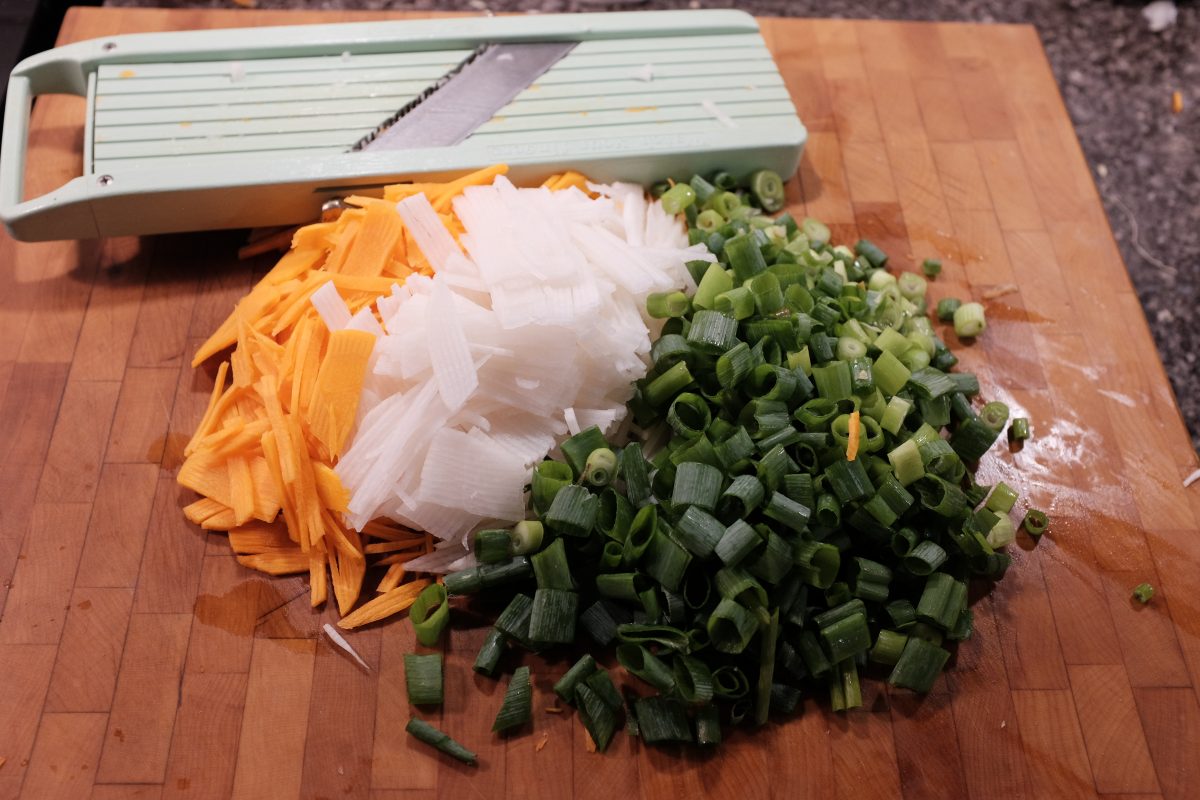
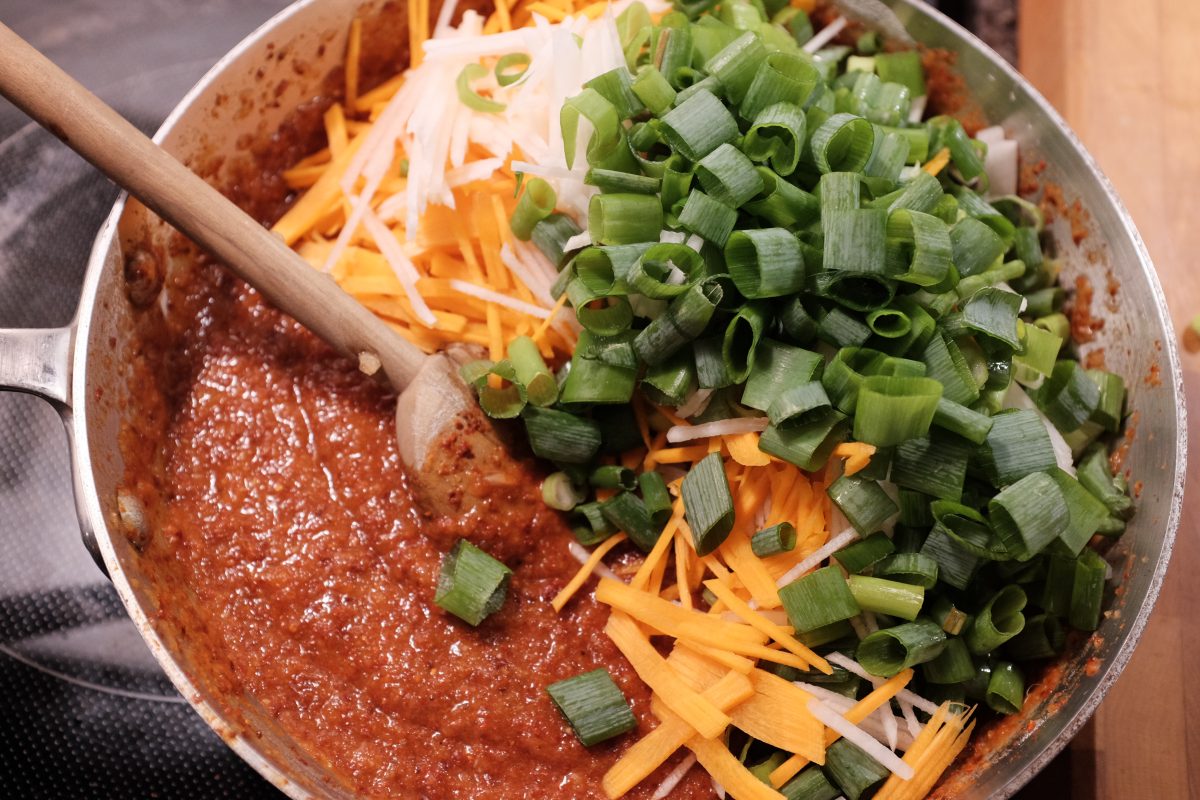
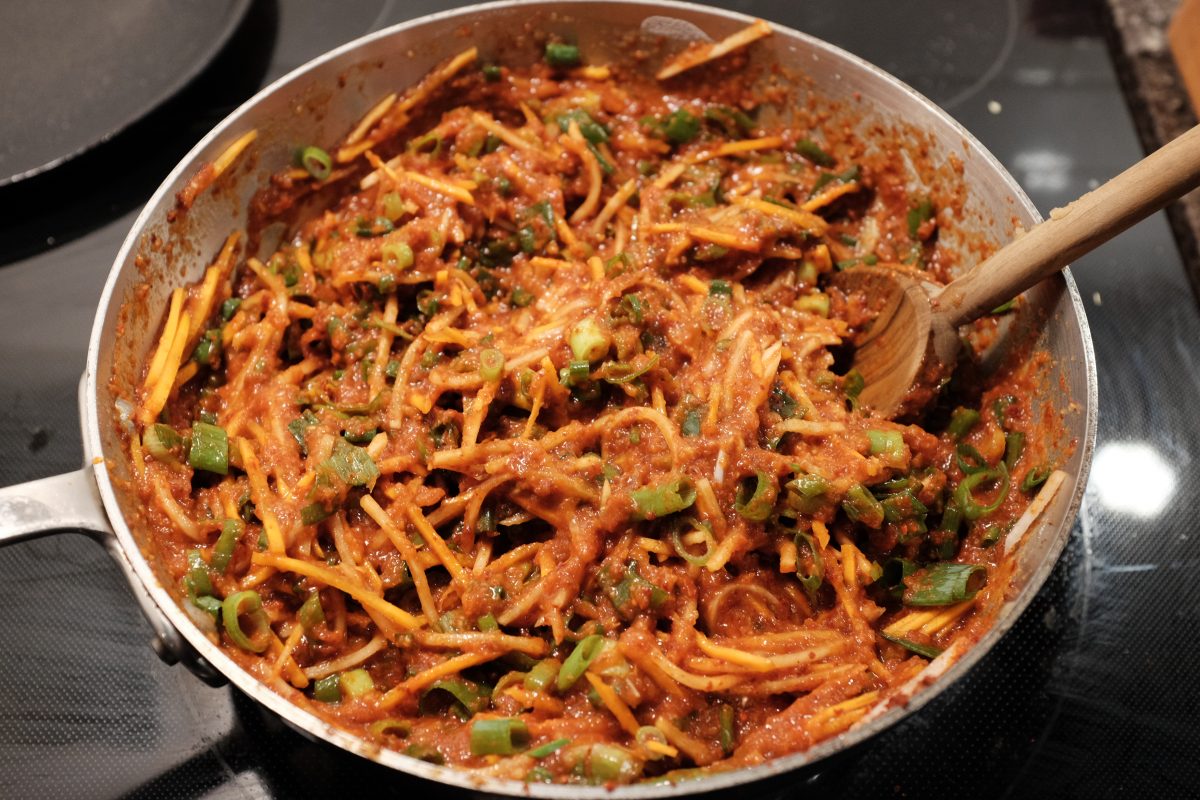
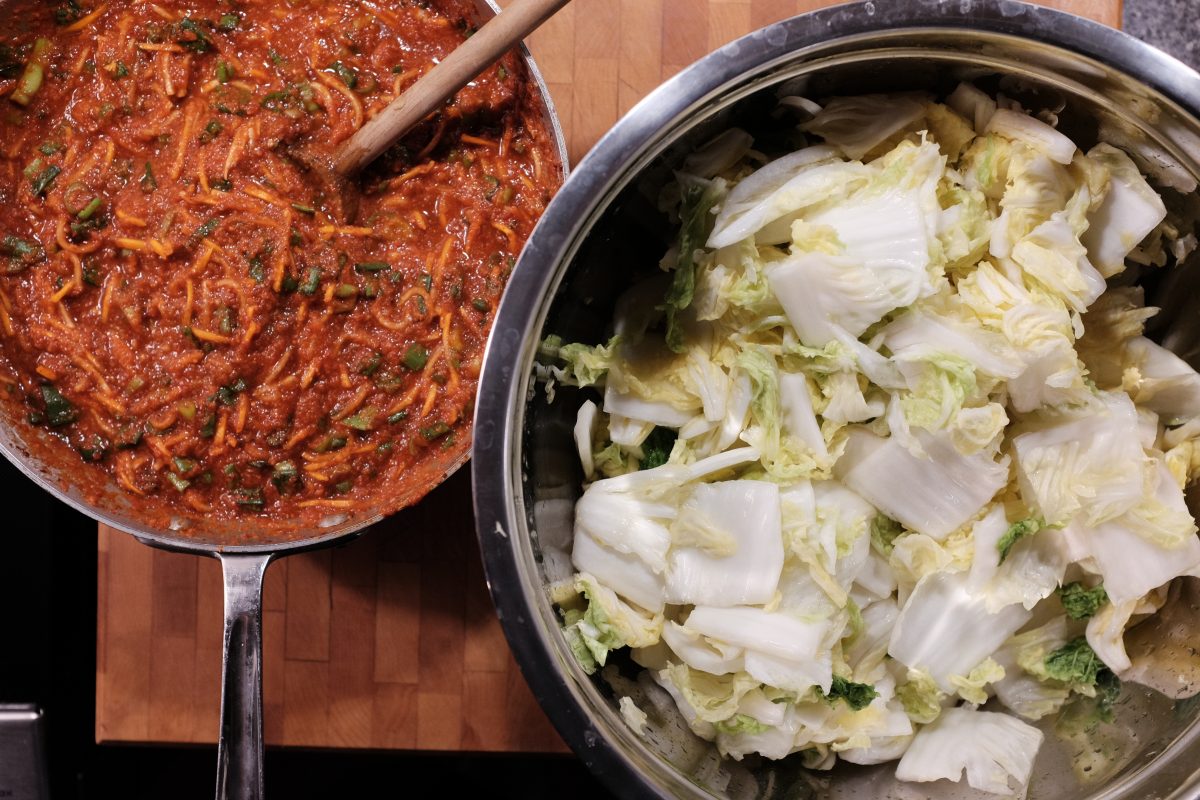
Put it all together
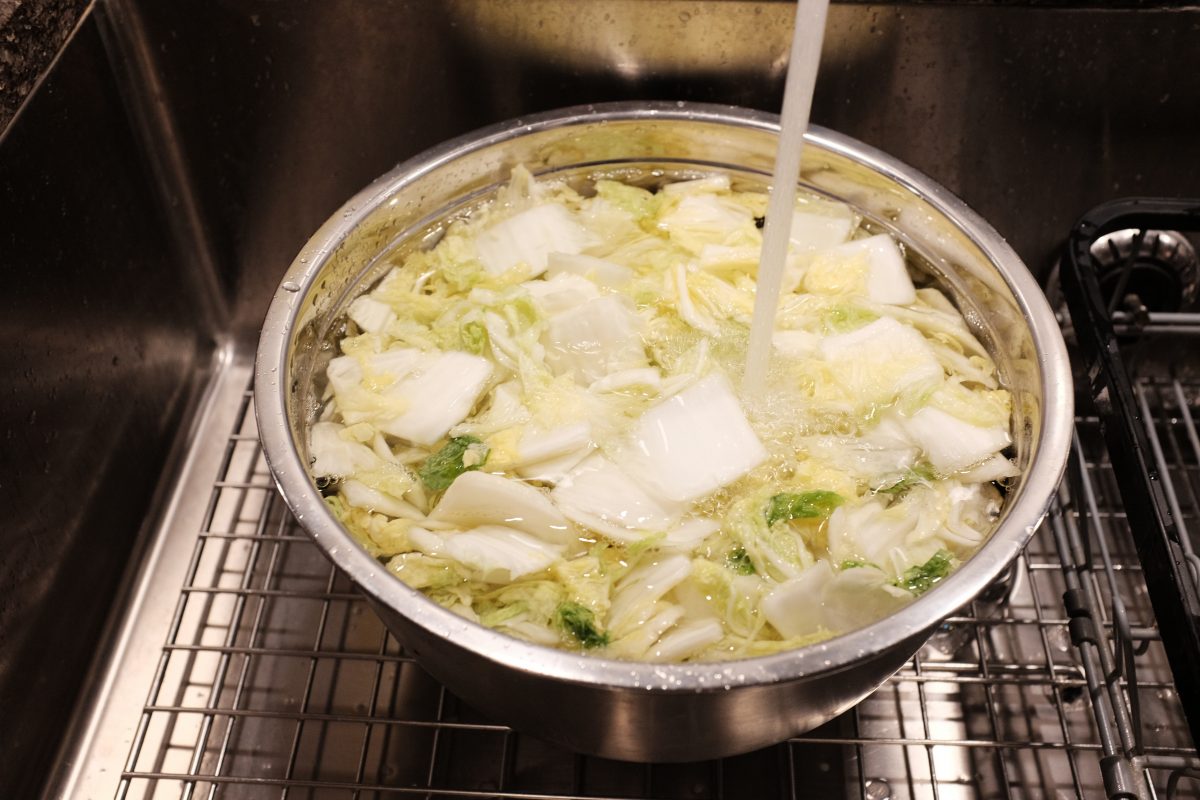
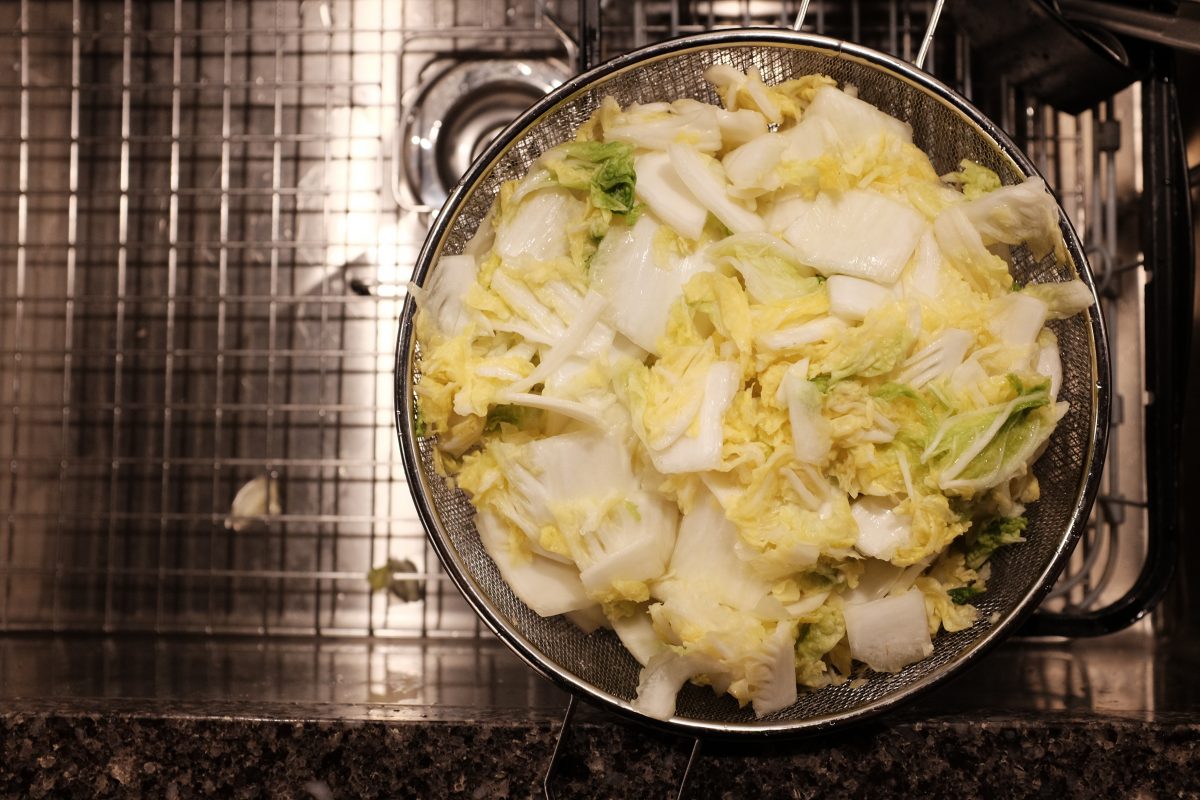
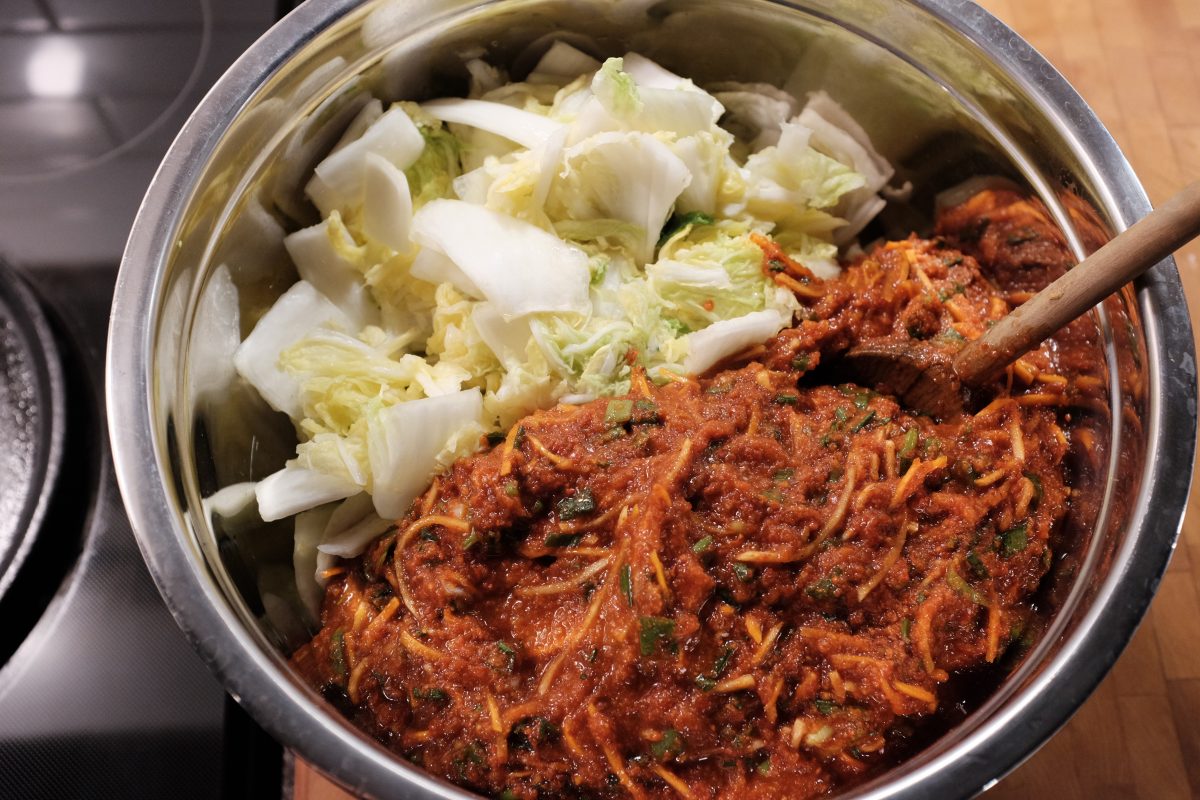
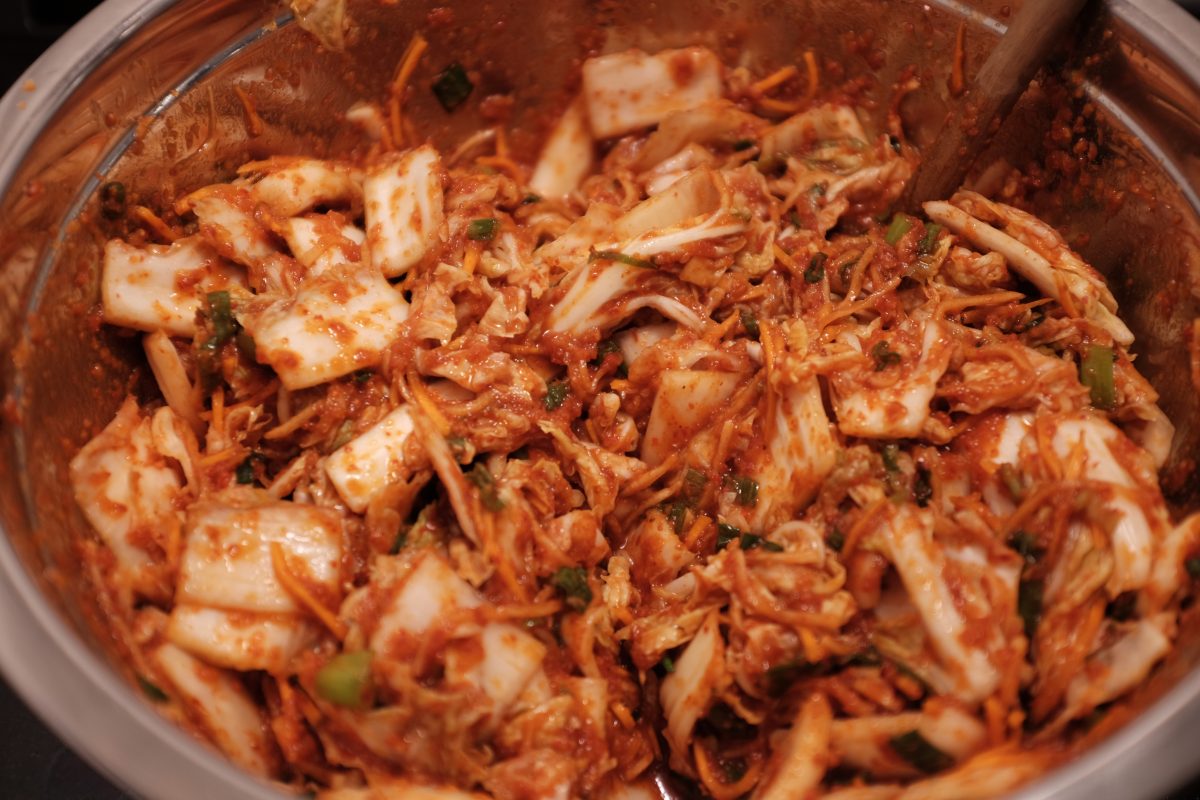
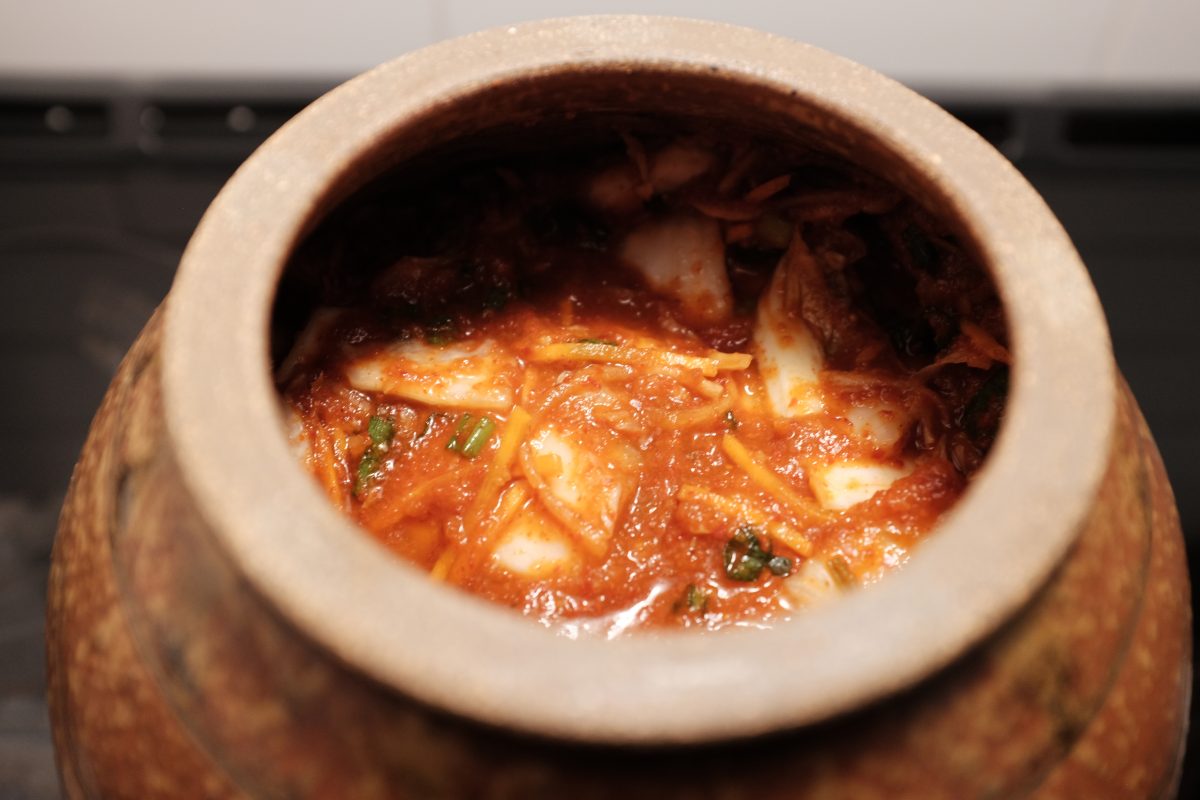
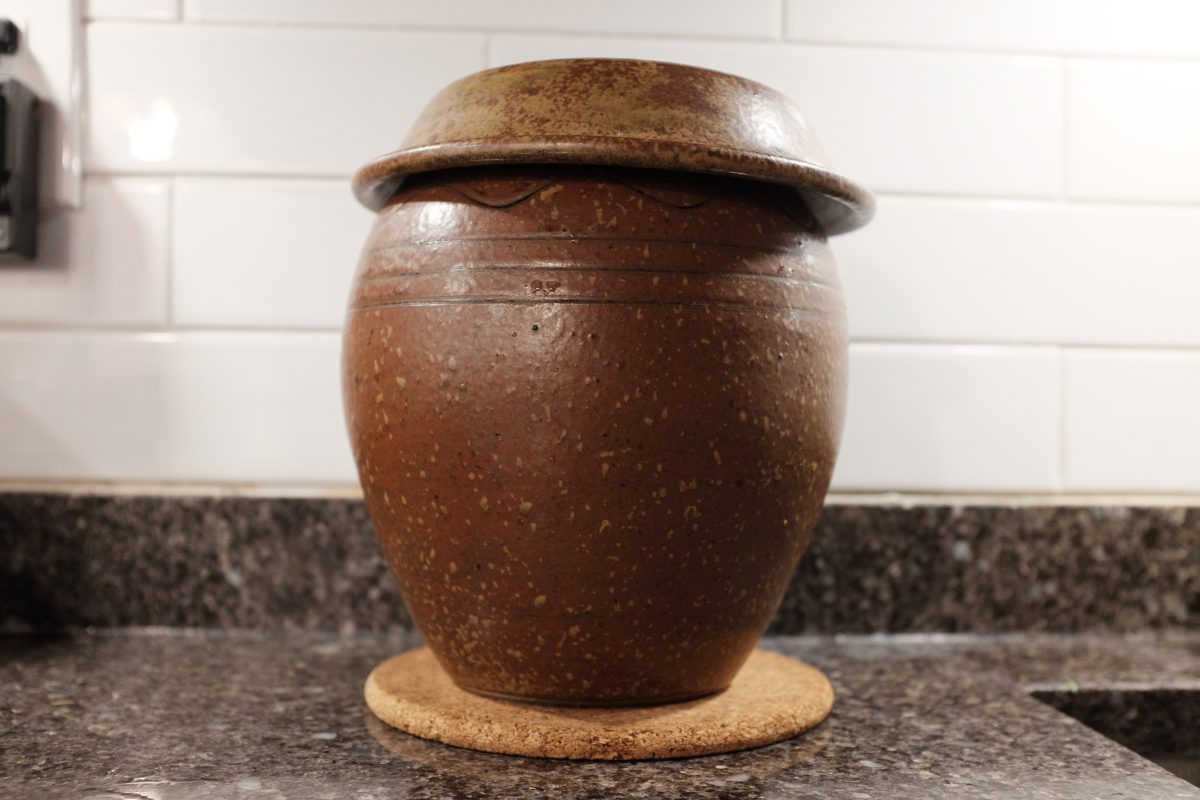
Now what?
For ideas on what to do with your kimchi take a look at this post.
If you have any questions or comments, please leave them below. I am always happy to hear from you.
Thanks for reading!
Seolleongtang
Seolleongtang is the first meal I ever ate in Korea. After a 15 hour flight and a long train ride, I finally arrived at my Insa-dong hotel sore, exhausted and hungry. The closest restaurant was directly behind the hotel, attached to the parking lot. This unassuming restaurant turned out to be one of the oldest in Seoul: Imun Seolleongtang. I had a big hot bowl of this plain milky beef soup and within an hour I felt completely refreshed. This simple soup seemed to erase my body’s memory of being crushed in an economy seat for the last 15 hours. It was like magic.
Since then, I have been back to Korea many times and I always start and finish my travels with this simple meal. Imun Seolleongtang has since received Michelin recognition and so it is busier (and more expensive) than ever with lots of tourists coming in to snap photos for instagram and tiktok. The staff seem to take it in stride, brisk and efficient, though maybe somewhat less friendly than I remember nearly 10 years ago. Also gone is the sloppy bucket of juicy and chunky kkadugi in the middle of the table and the big basket of chopped green onion. These now arrive in less bottomless portions after you order. But, even though some things have changed, the food is still as delicious as I remember and I still go to Imun as well as another smaller family run Seollongtang restaurant nearby.
Homemade seolleongtang
Seolleongtang always seemed kind of mysterious to me. Where did that milky colour come from? How was this simple soup so nutty and delicious? It arrives at the table completely bland and unseasoned but the addition of a little salt and pepper, kimchi juice and green onion turns it into something deep and complex and unforgettable.
Like a good food detective, I decided to launch a full investigation. After much reading and video watching, I discovered that the secret is really in the style of beef stock, in the process rather than the ingredients. The recipe below is a two-part process. First you will need to make the milky bone broth. Once you have this broth on hand, turning it into finished seolleongtang is a very simple and quick process. You can find the complete recipe for the beef bone broth by clicking here.
Ingredients
*this is for one big portion or 2 smaller portions
- 1 litre Korean milky beef bone broth
- 250gr beef brisket point
- cooked white rice
- cooked somyeon/somen noodles
- 2-3 green onions (scallions)
- salt and pepper
I used brisket point. You can use any beef you like. Tougher cuts will take longer to soften up and more tender cuts will take less time. I like brisket because it is somewhere in between. It has the deep beef flavour of a tougher muscle but is slightly more tender so takes a little less time to cook. If you like, you can soak the meat in water for a few hours to remove some of the blood but, this is optional.
Process
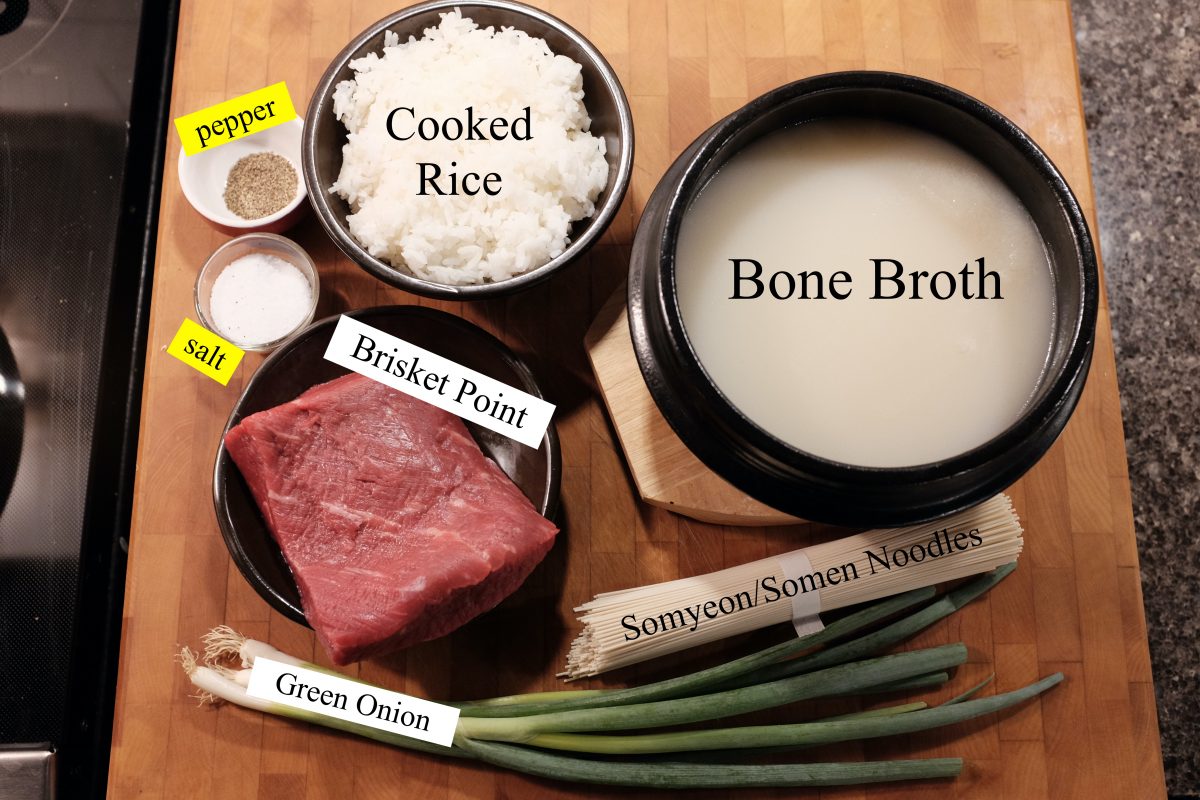
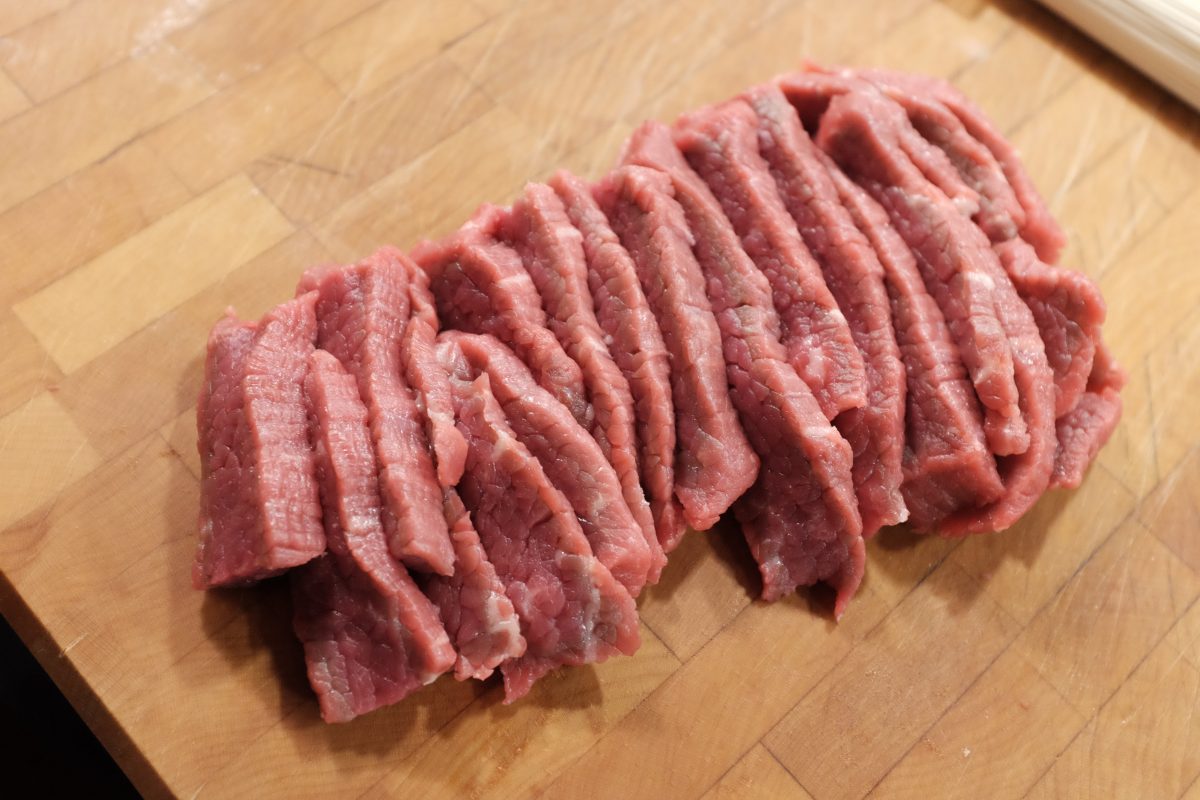
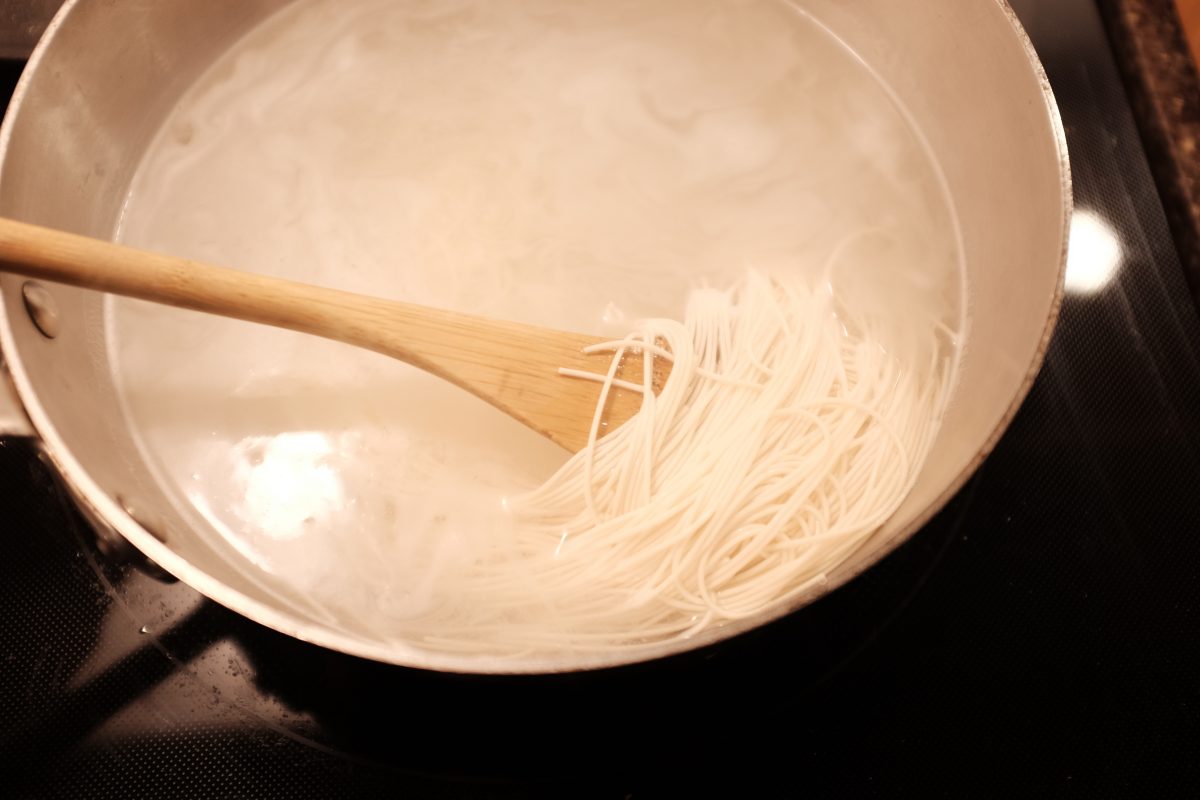
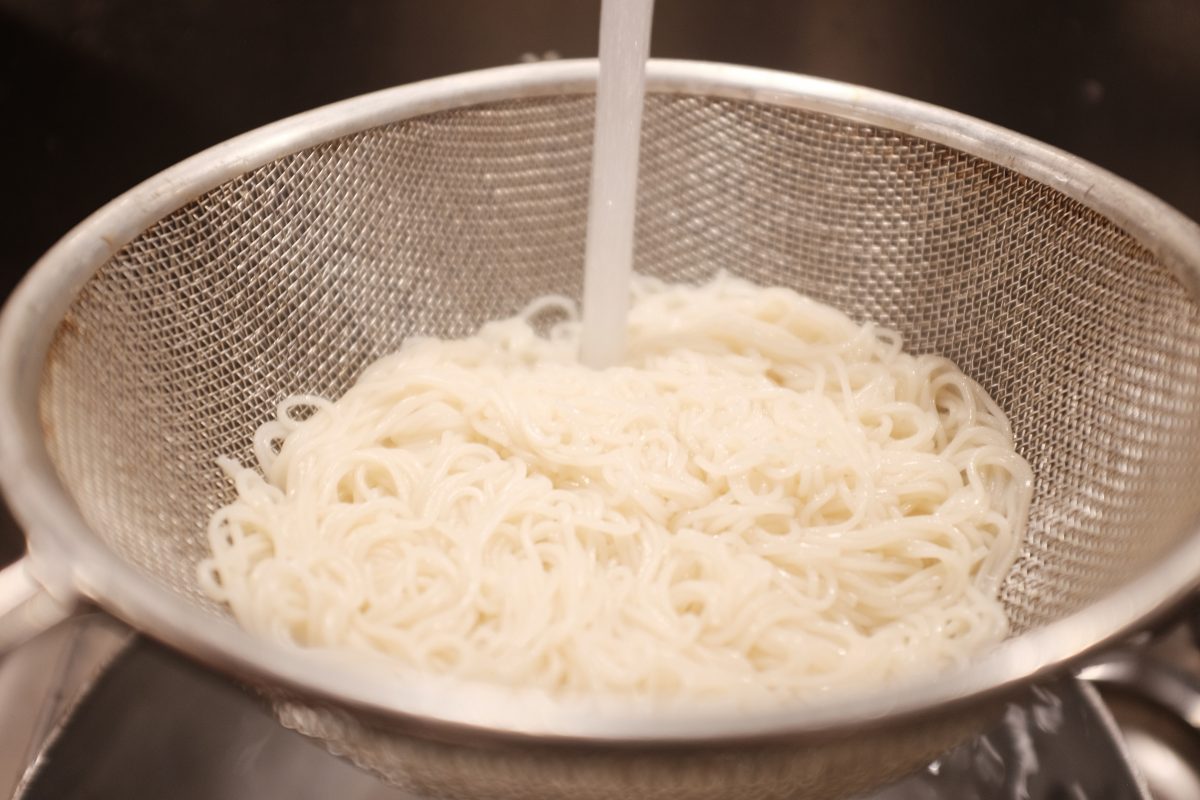
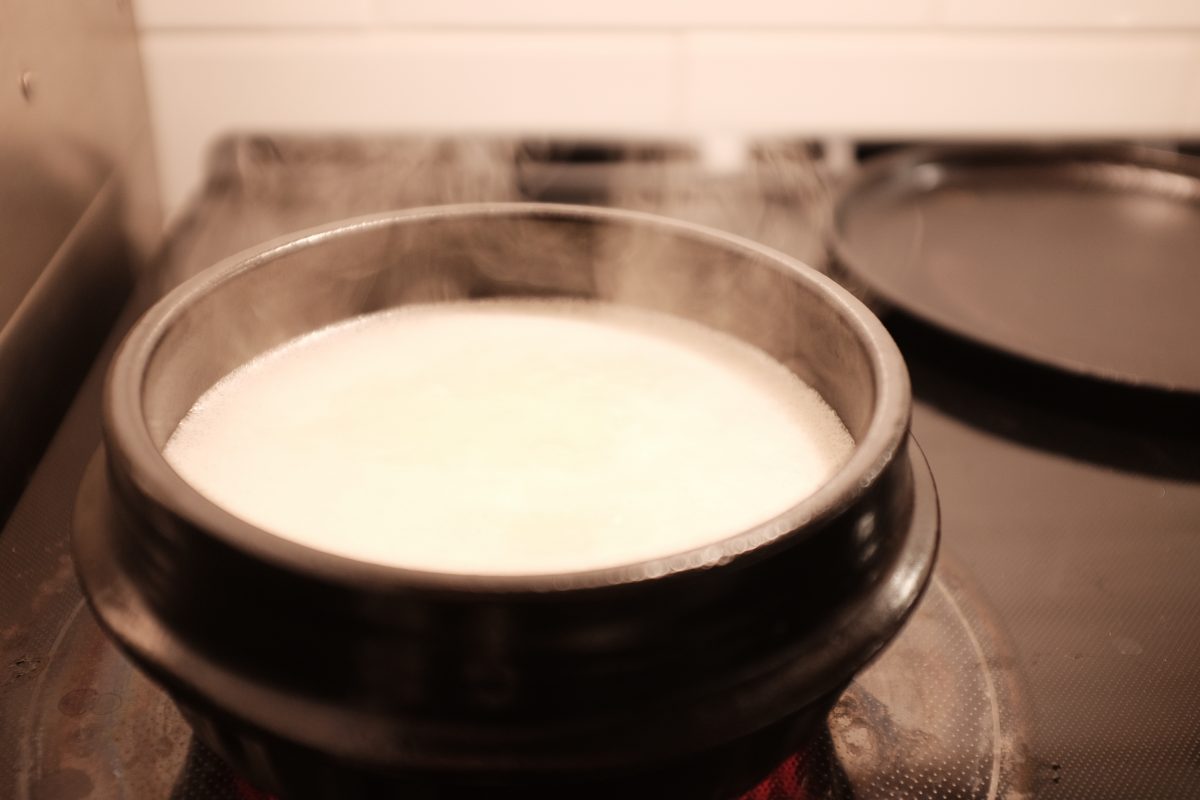
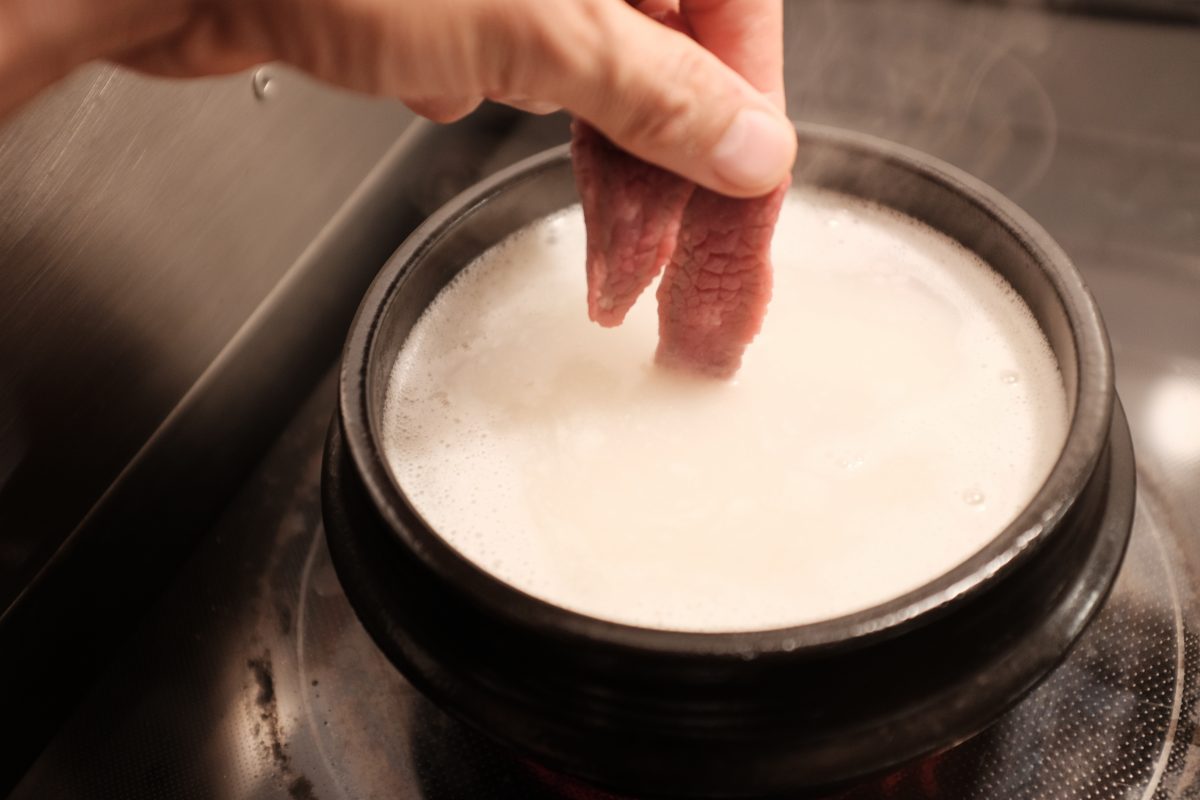
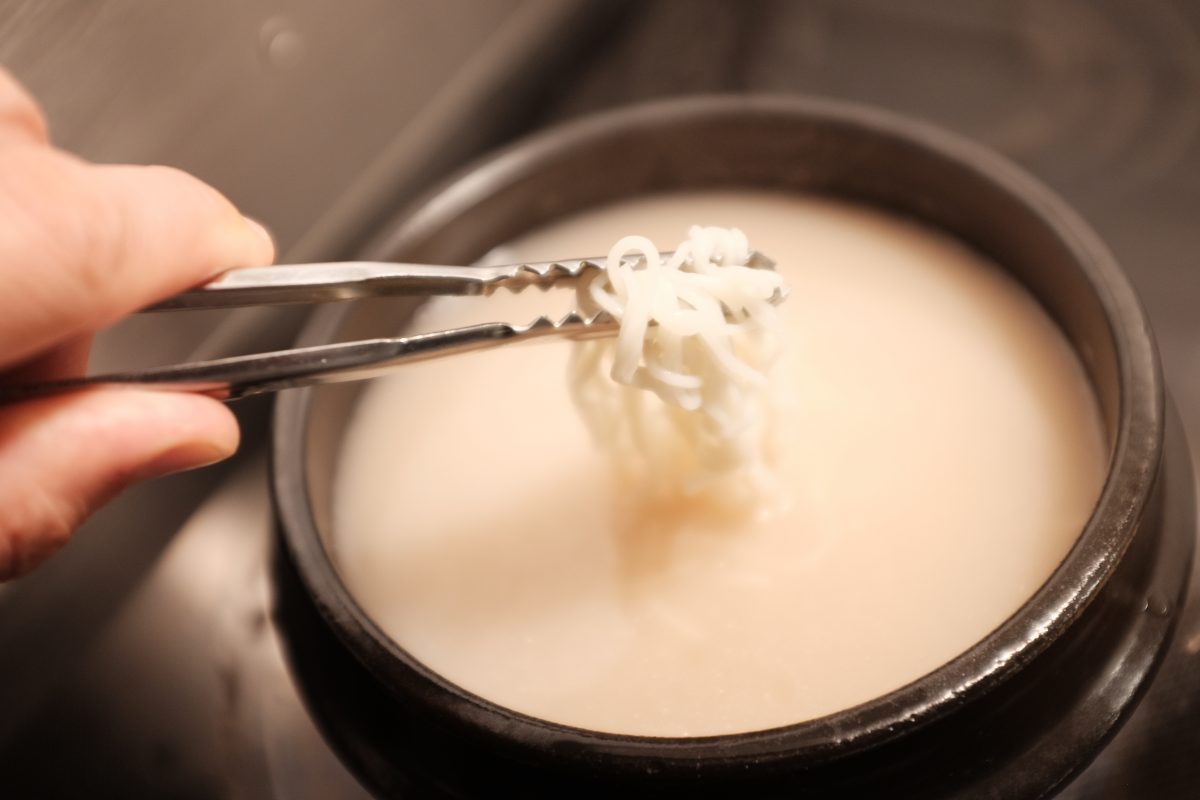
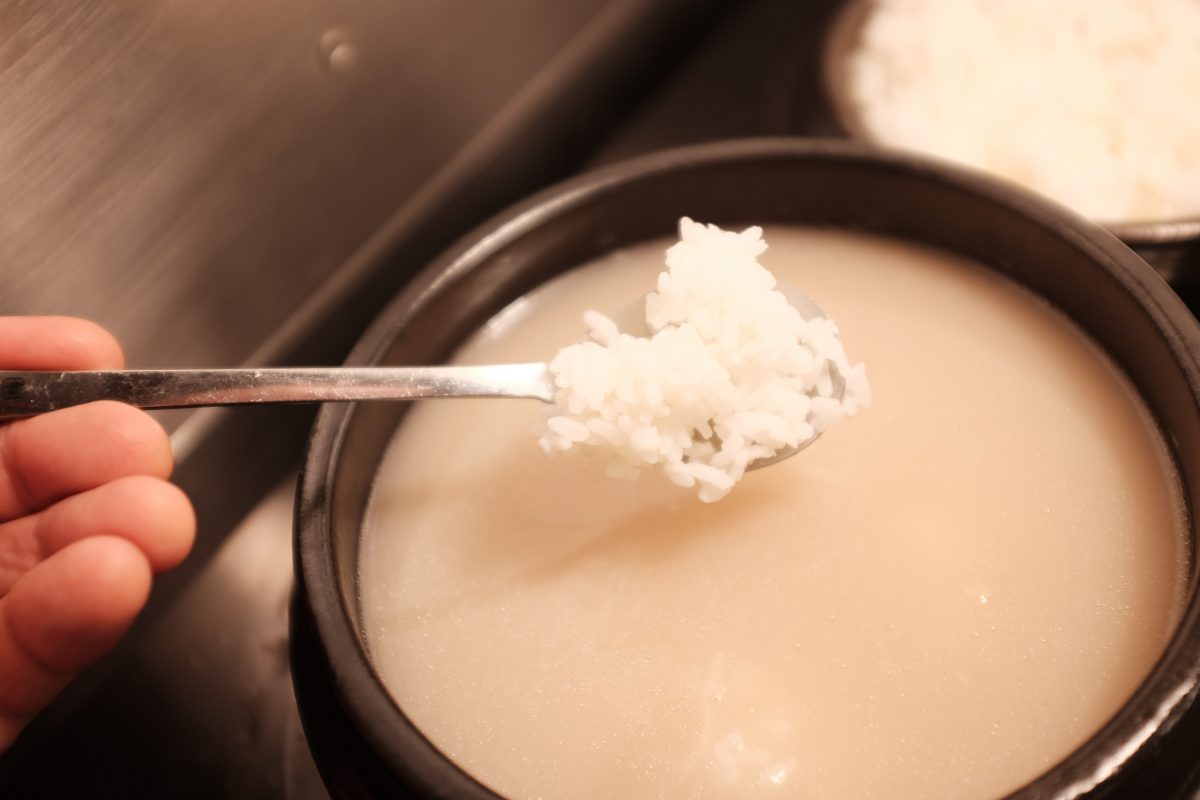
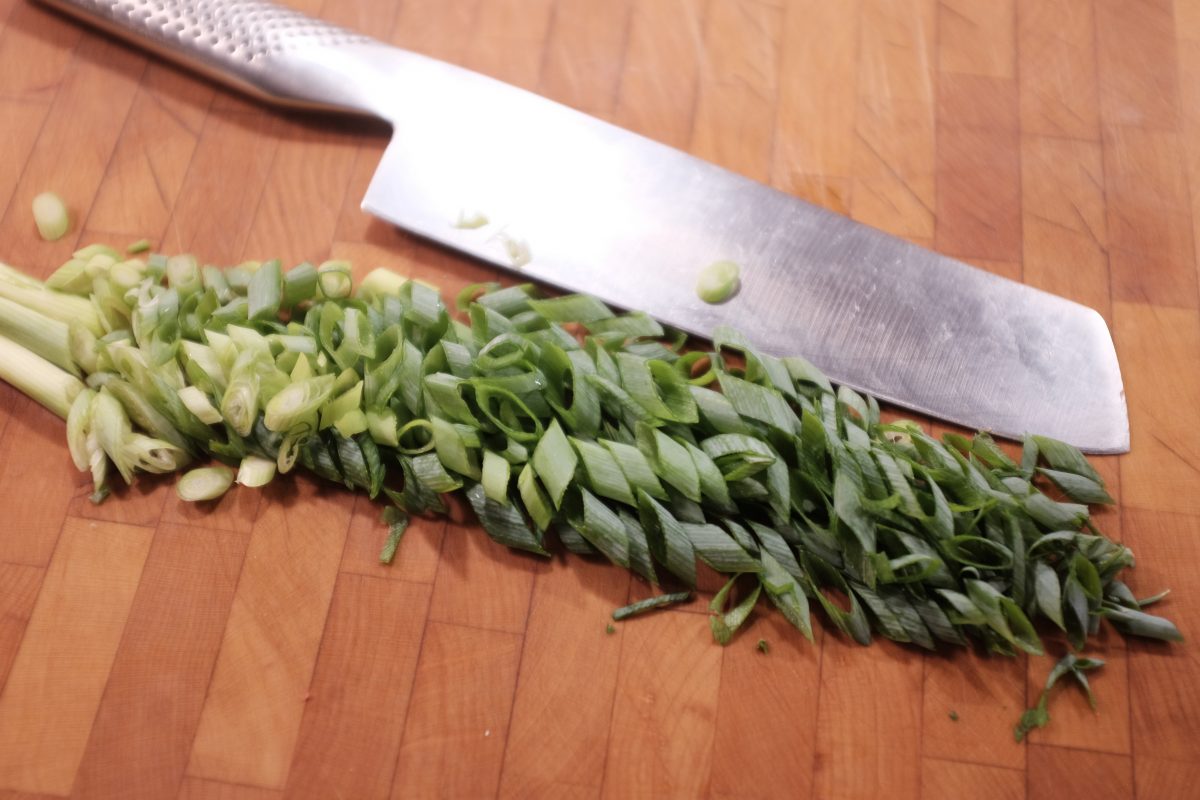
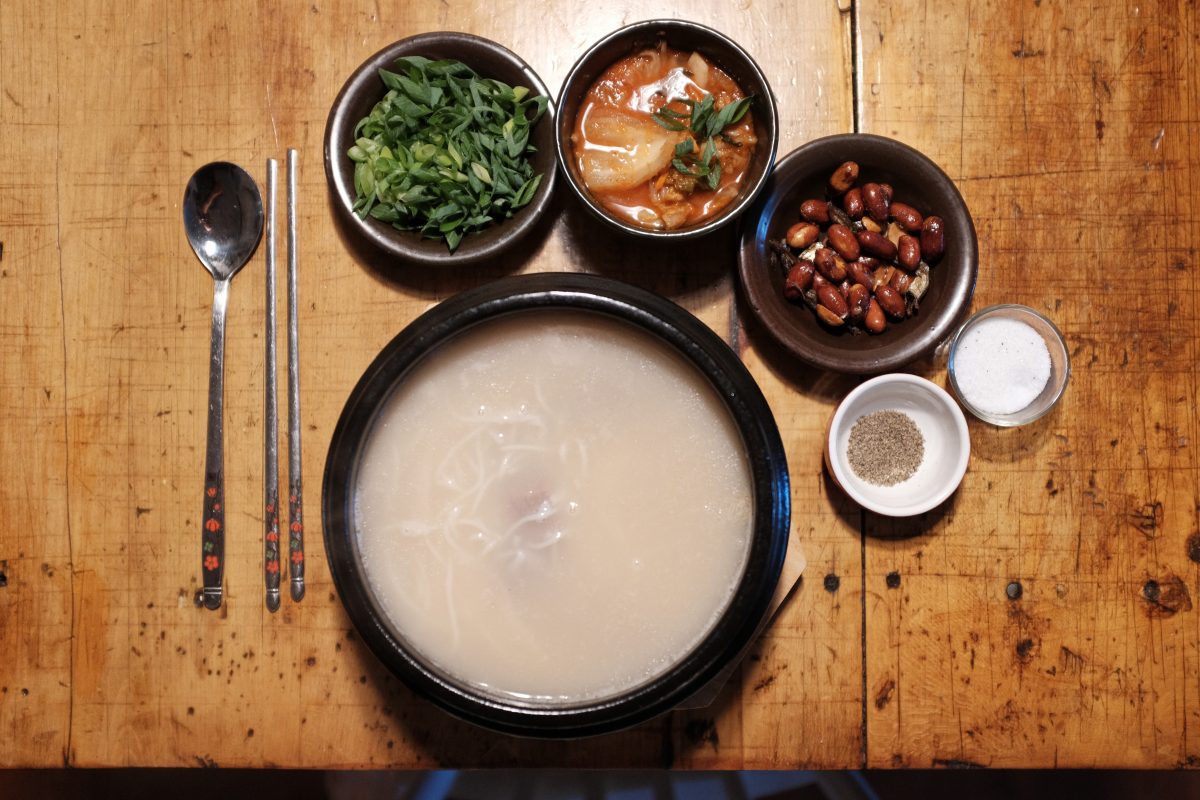
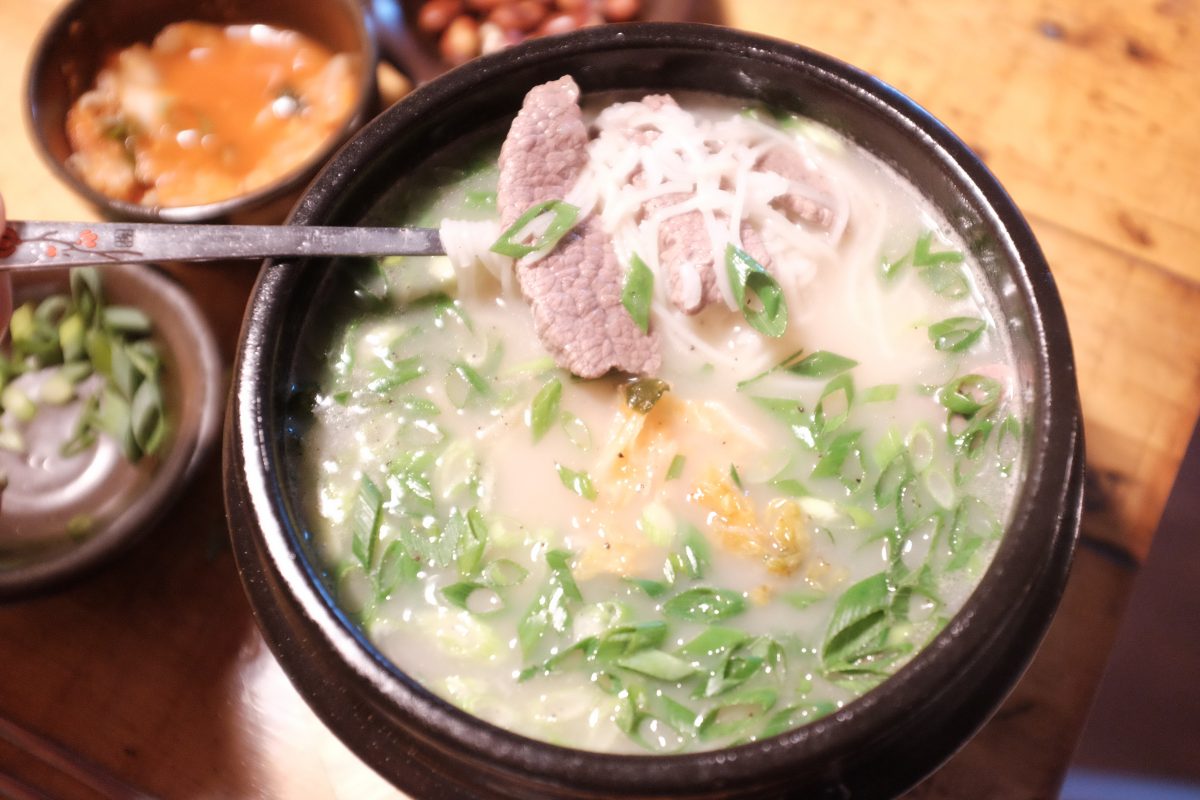
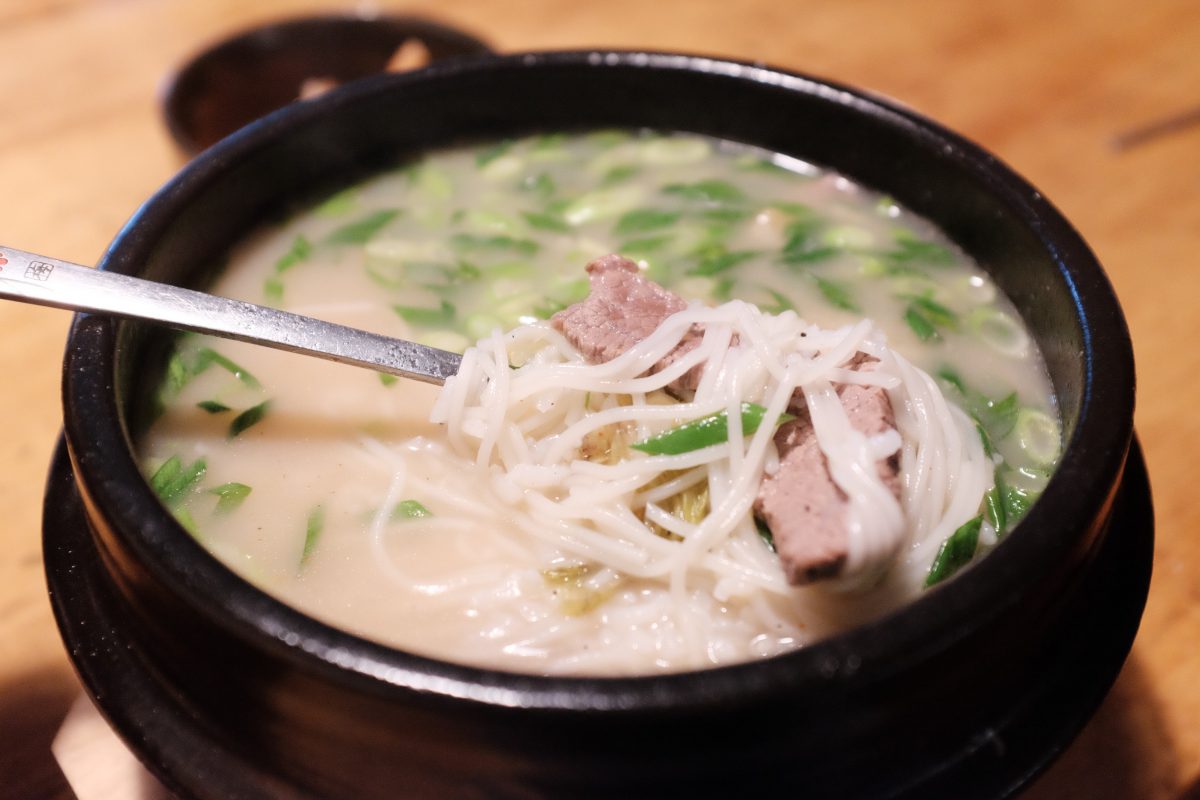
The verdict?
This turned out to be very very good. Maybe 4 out of 5 stars. One star off because, as good as it is, it doesn’t quite measure up to the flavour of Imun Seolleongtang in Seoul. But, honestly, I can say the same thing about all Korean food made outside of Korea. There is always a little something missing when you make these dishes yourself or, eat them in restaurants back home. I think a big part of this is the high quality of ingredients in Korea but, there is also generational knowledge and experience that adds flavour to these dishes and makes the magic hard to replicate. Imun Seolleongtang has been making this same dish for over 100 years and legend has it that the same stock pot has been continuously boiling fresh bones every day for the whole time!
Having said that, I am really happy with the way this turned out and I feel just as refreshed after eating a big hot bowl of this flavourful soup. 시원하다!
If you have any questions or comments please leave them in the space below. Thanks for reading!
Beef Bone Broth Version 2: Hard and Fast
Korean Beef Bone Broth vs Western Versions (hard and fast vs low and slow)
Some time ago, I posted a recipe for beef bone broth (stock) that involves a very long cooking time at a very gentle simmer (click here for this low and slow version). The result is a mostly clear, brownish, meaty and gelatinous stock. This is most often what chefs make in a western kitchen…it will typically be used as a soup or sauce base.
This recipe is almost identical in ingredients and process. The main difference is that this recipe cooks at a harder rolling boil for a shorter time. Even though the steps are almost identical, this small change results in a completely different stock. This one is just as gelatinous but, it is a silky opaque white colour with a nutty and delicate flavour. This stock is a base for dishes like mandu-guk (dumpling soup) or seolleongtang in a Korean kitchen. And, I think this is the version that most people think of when looking for “beef bone broth”.
Ingredients
- 4kg (almost 9lb) beef marrow and knuckle bones cut into pieces.
- 1.2kg (around 2.5lb) cow foot cut into pieces
- water
The Korean grocer in my neighbourhood usually has beef bones already cut up and frozen in bags ready to go. If you don’t have access to something like this, any butcher should be able to sell you beef bones for stock. A separate Halal butcher in the neighbourhood stocks frozen cow feet which he chops up for me on his meat saw. Cow foot adds gelatine to your stock which will give it a rich mouthfeel. If you can’t get cow feet, you can leave it out and substitute more bones.
The weights above are a guideline. You can make this as big as the biggest pot you have to hold the bones. I have a 12 litre stockpot and this is a good amount for me. The ratio of bone to cow foot does not have to be exact but I wouldn’t use more than 20-25% foot to bone.
There is no salt in this recipe. Season the stocks as you use it, depending on the dish you are preparing.
Process
This recipe is a slightly abbreviated version of the slow-and-low stock recipe. The process and ingredients are almost exactly the same so I have left out a few of the more obvious photos. If you want more detail on any step, just reference the recipe at this link.
Wash and soak bones
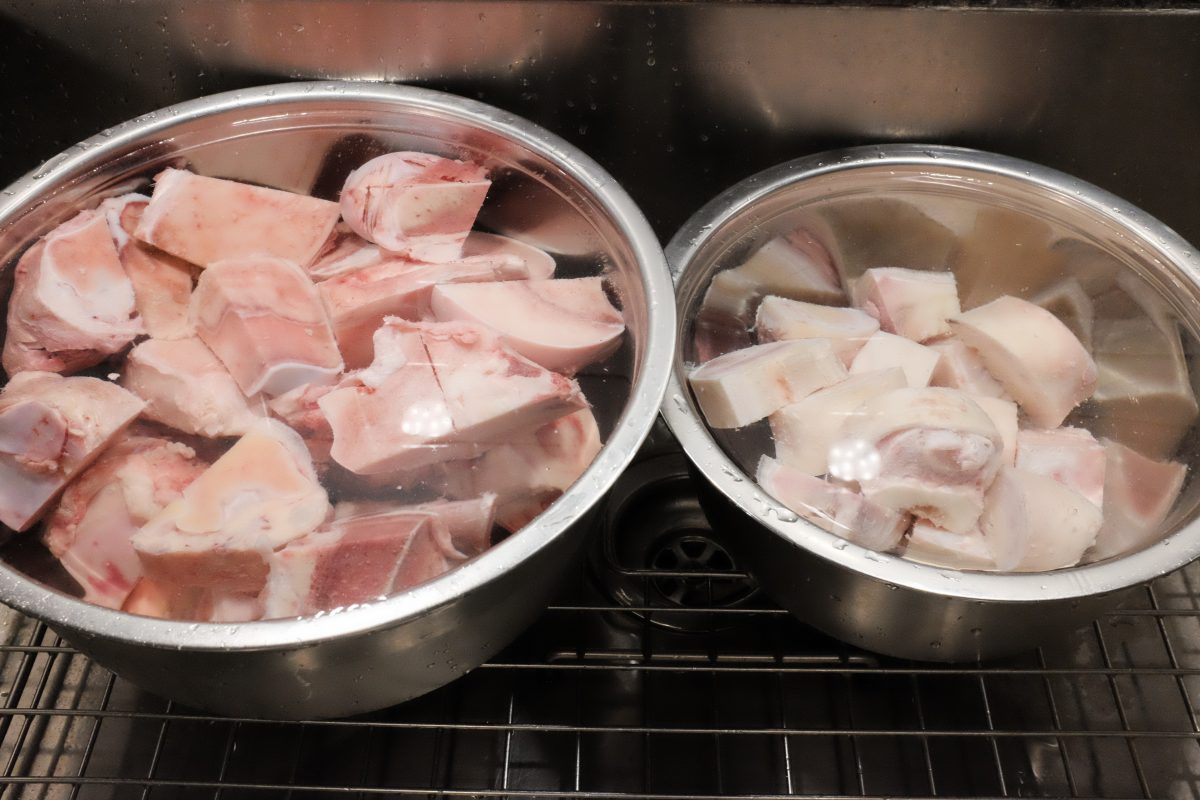
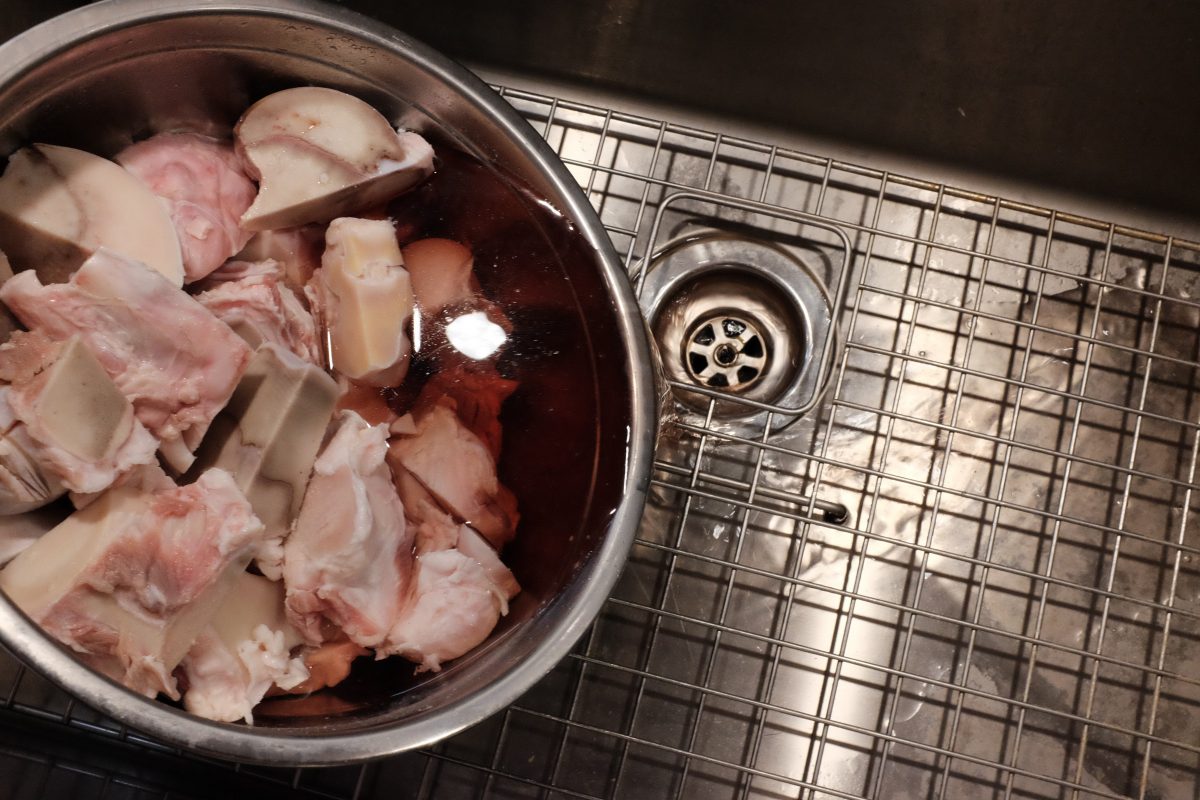
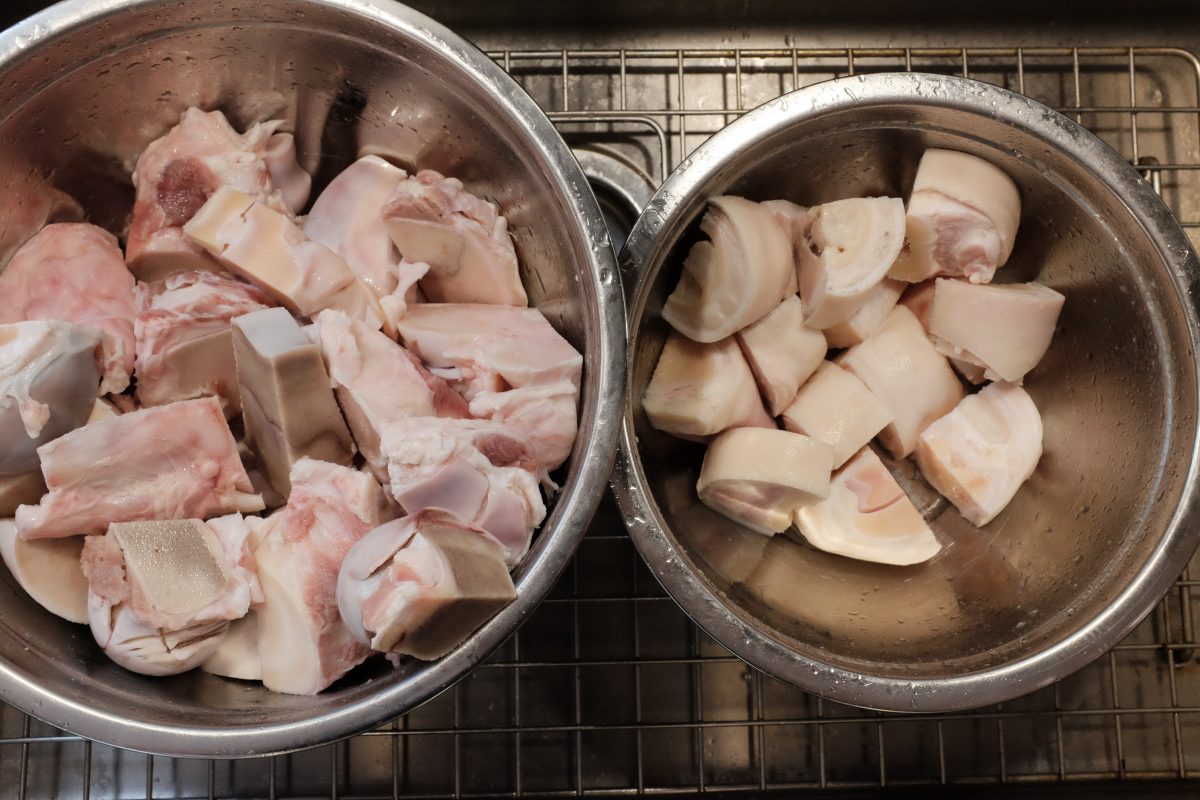
Blanching the bones
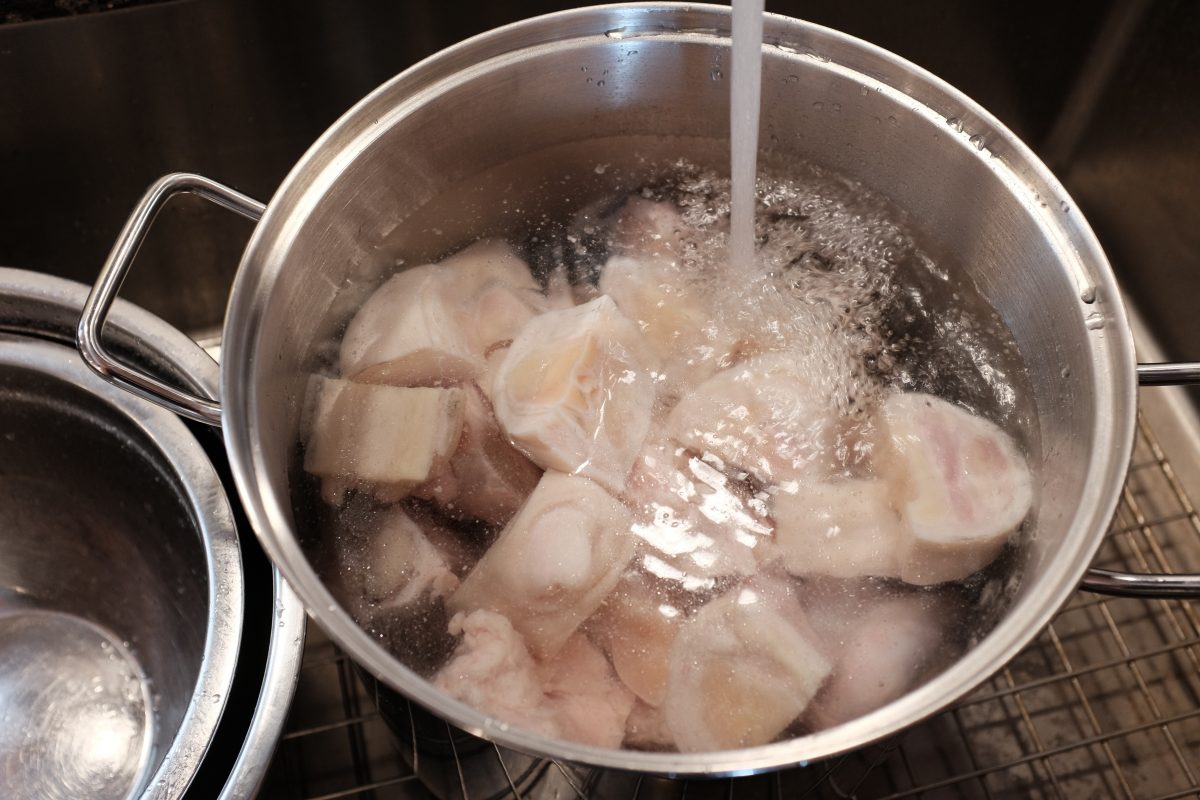
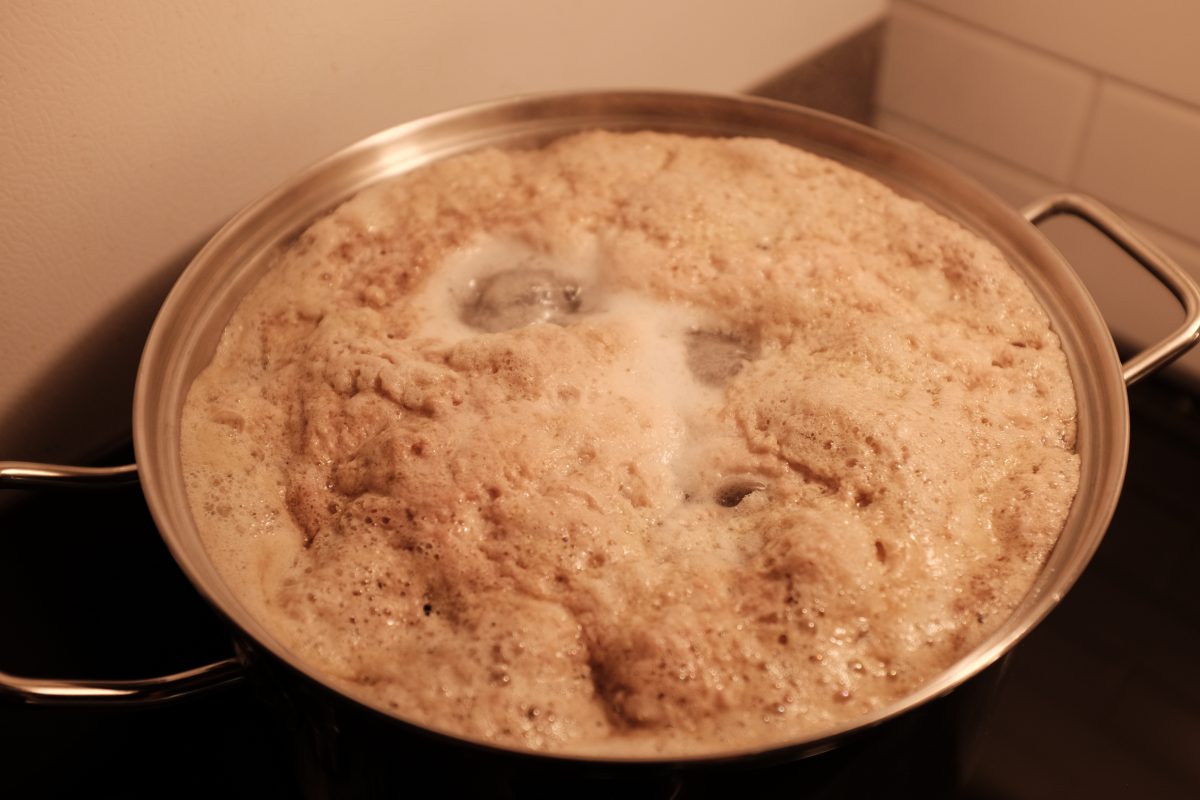
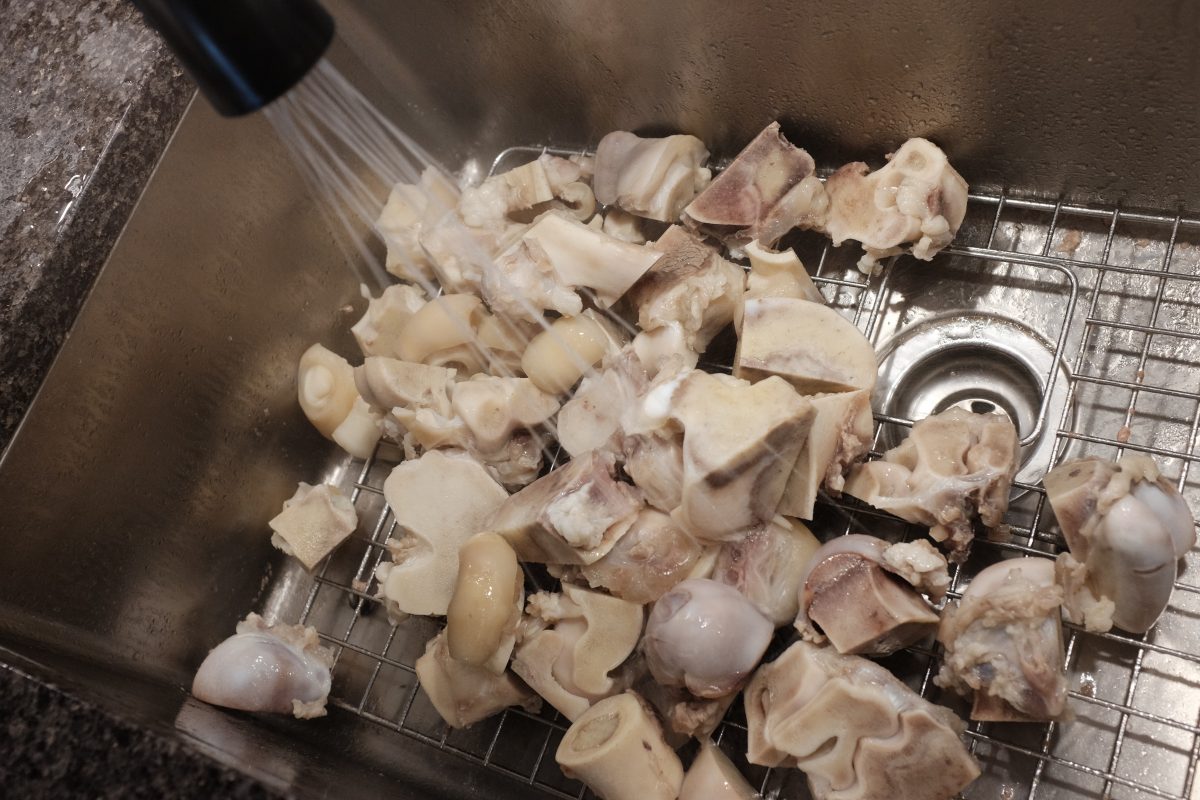
Making the stock
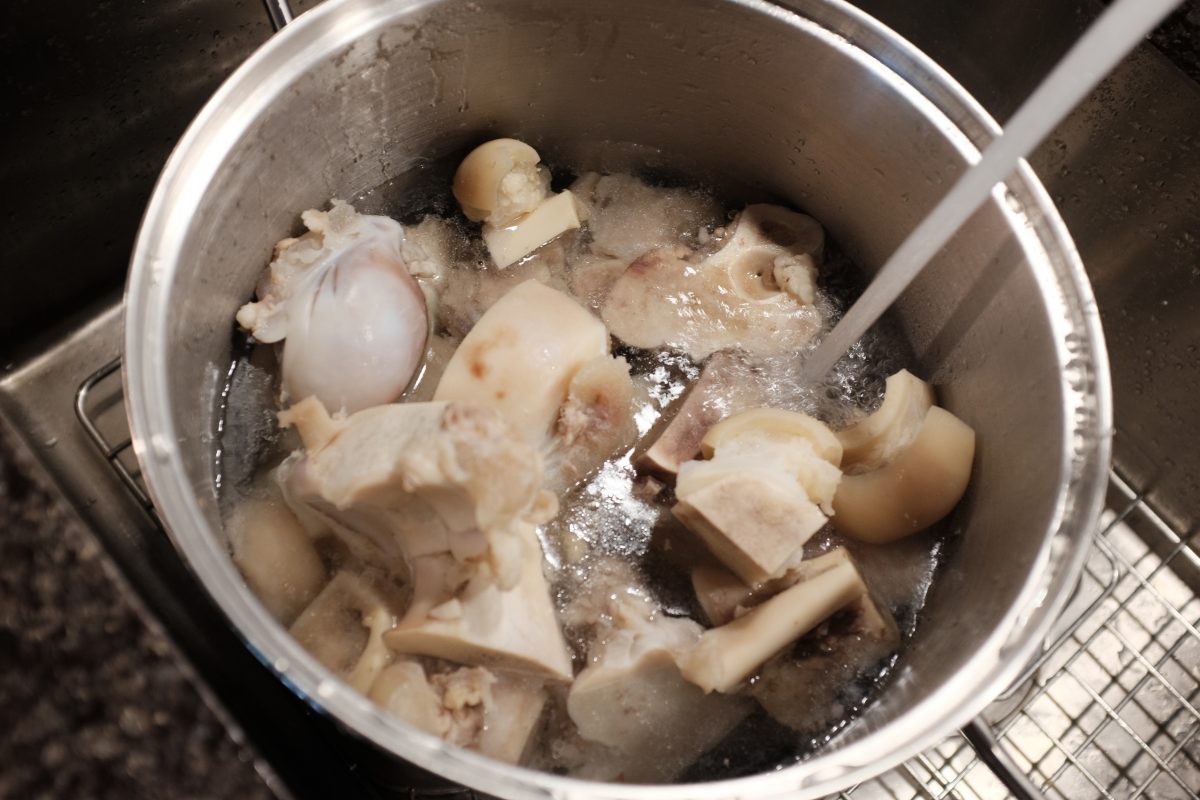
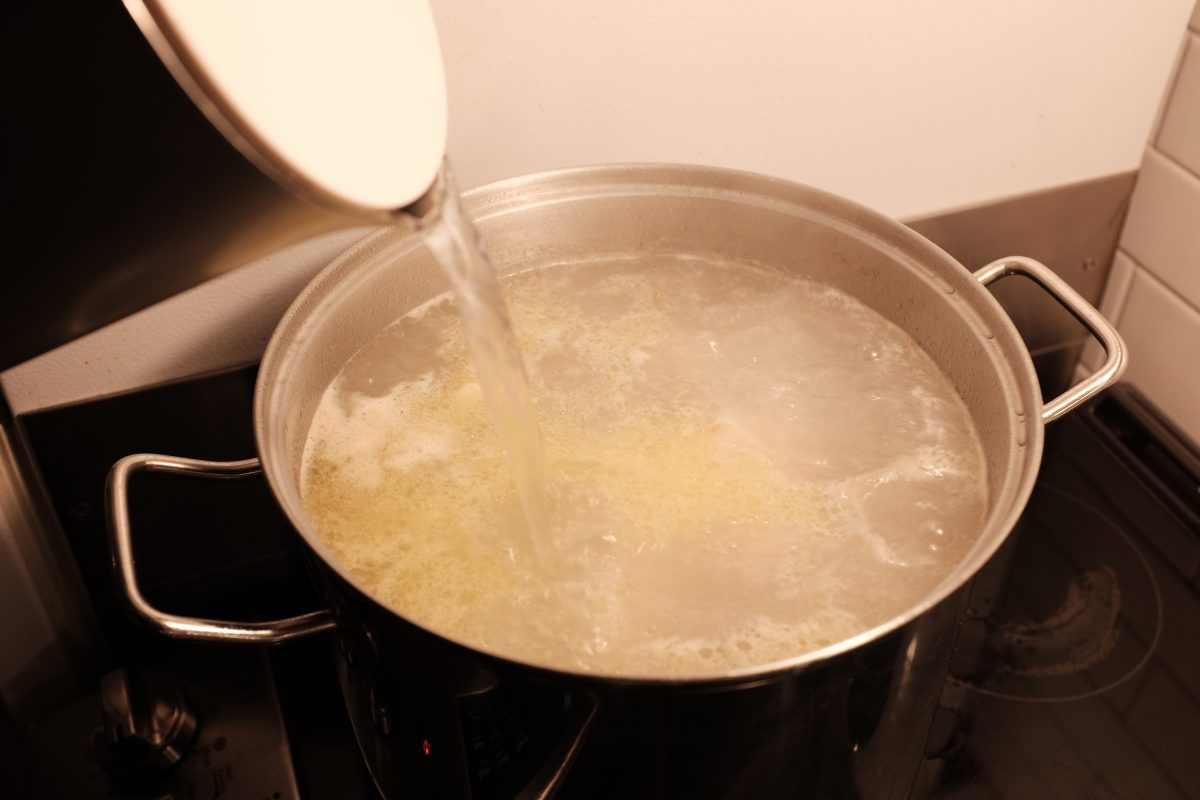
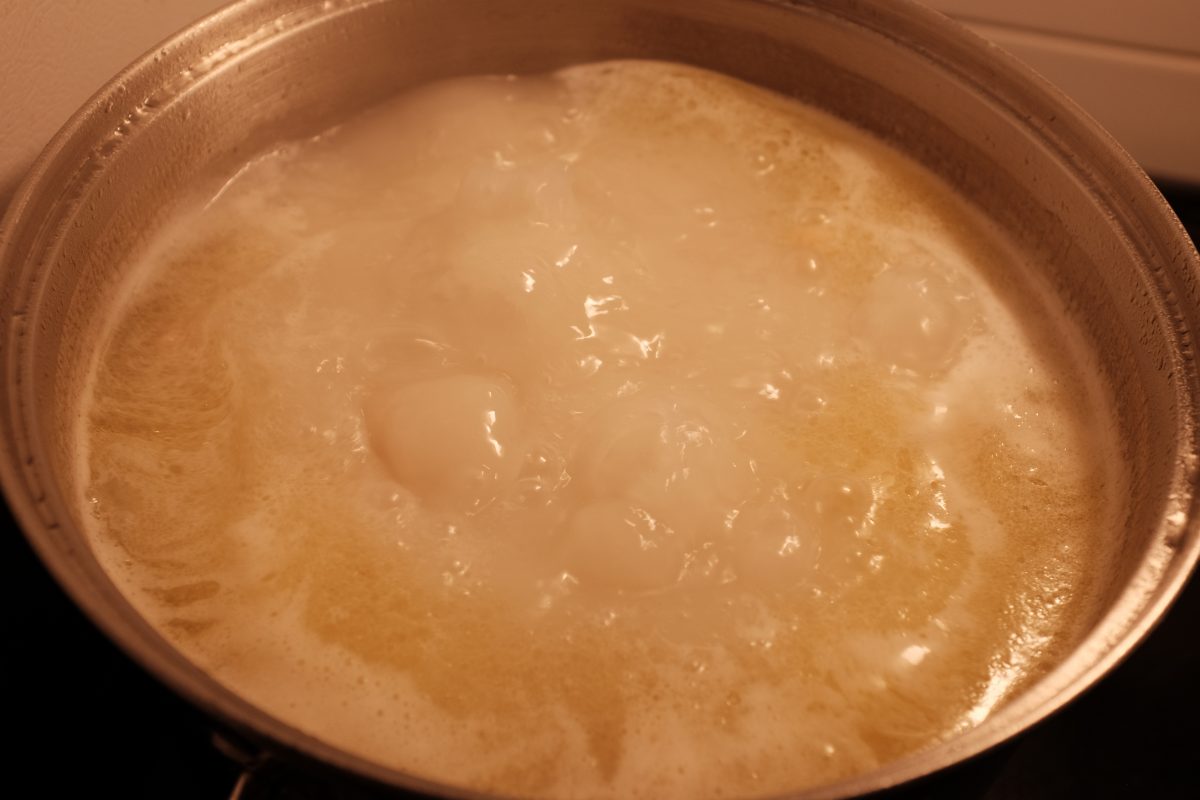
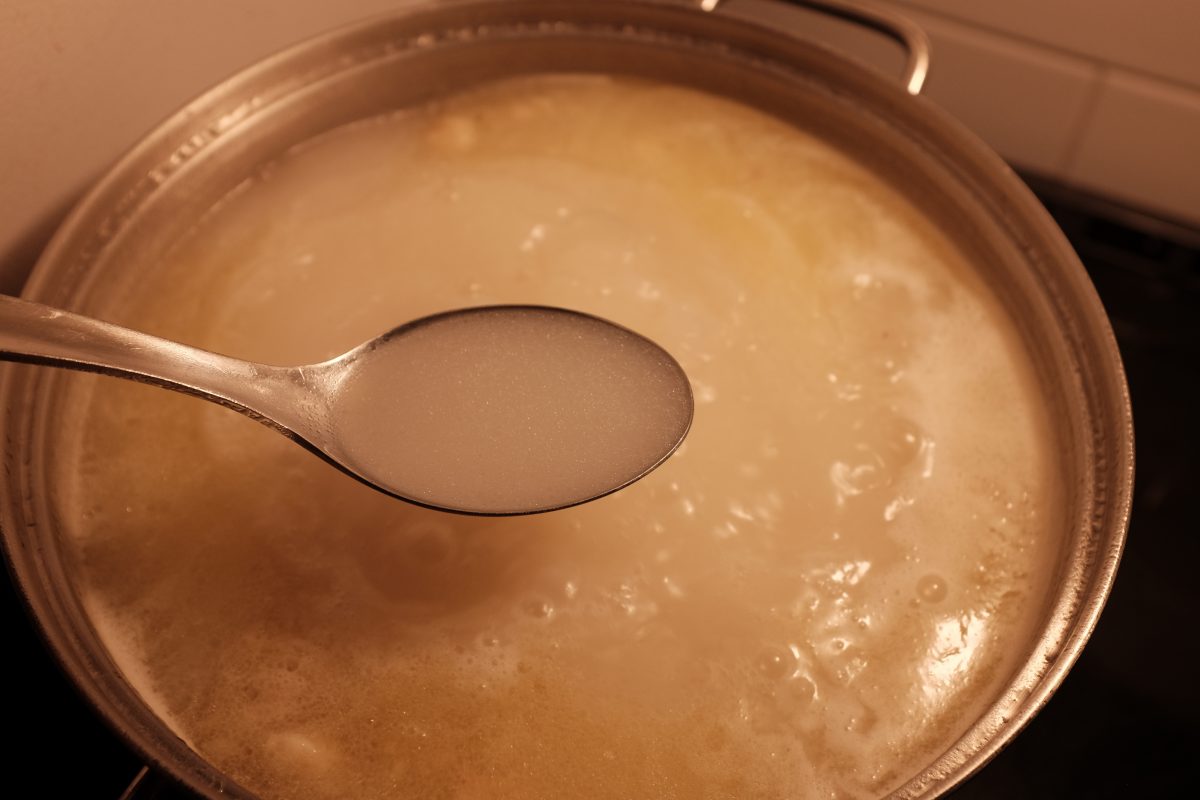
After 8 hours or so…
Remove the bones from the stock and strain the liquid.
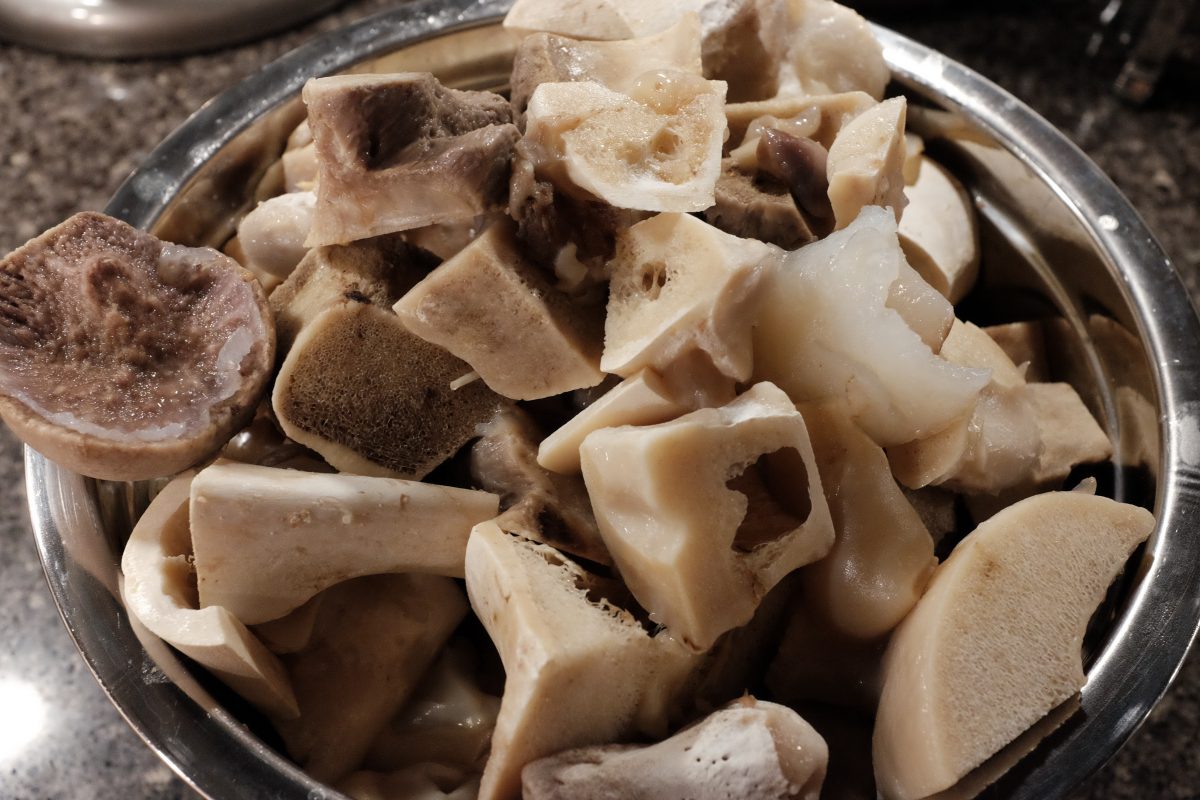
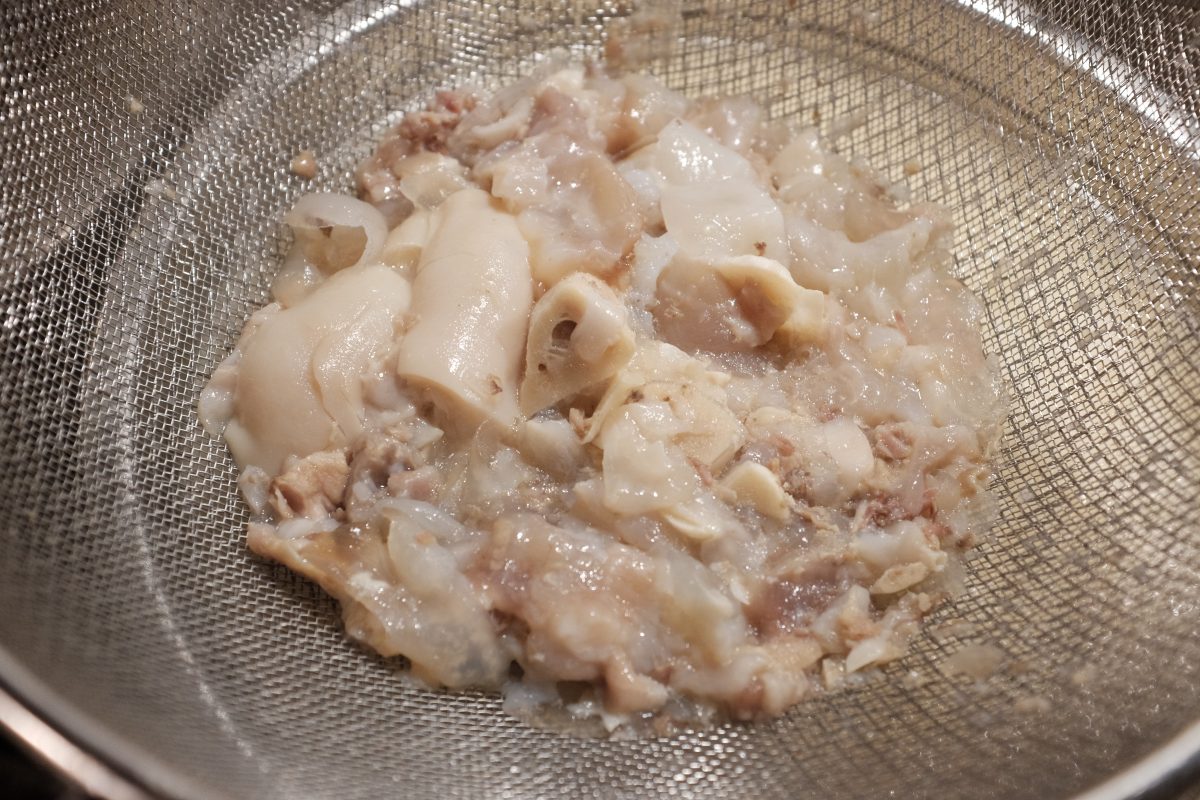
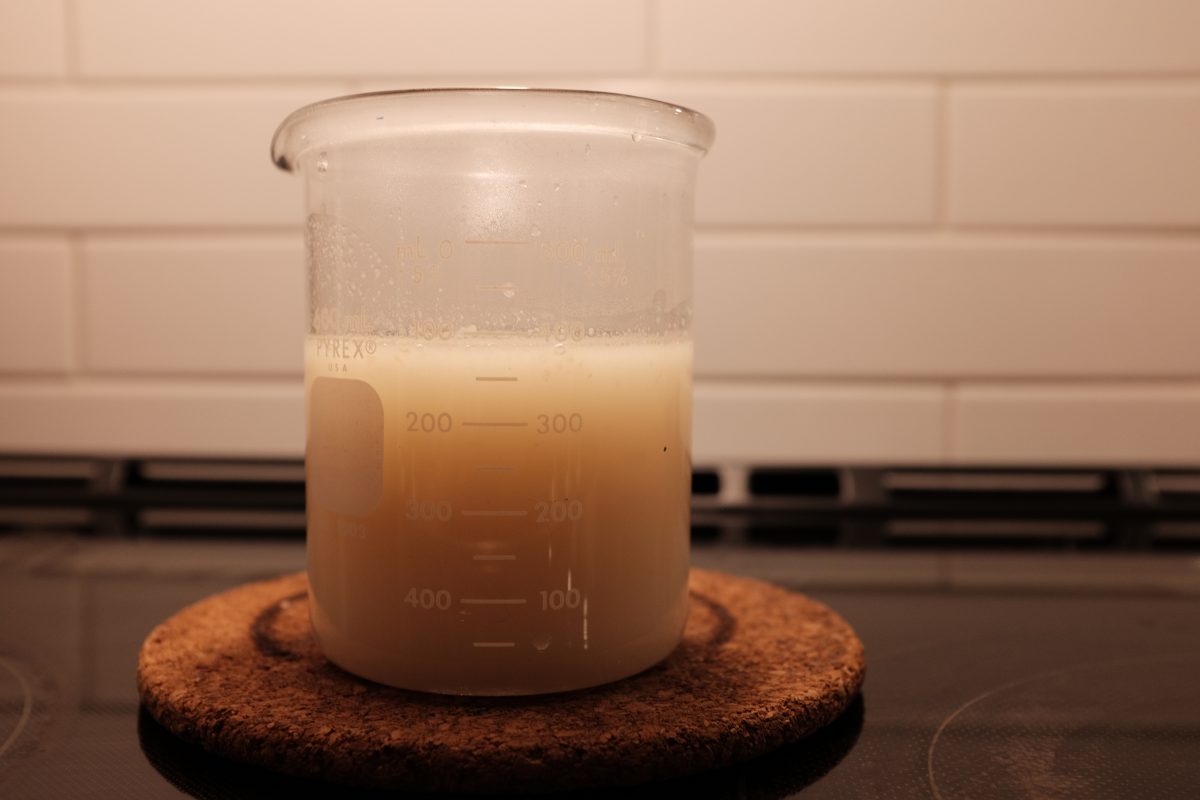
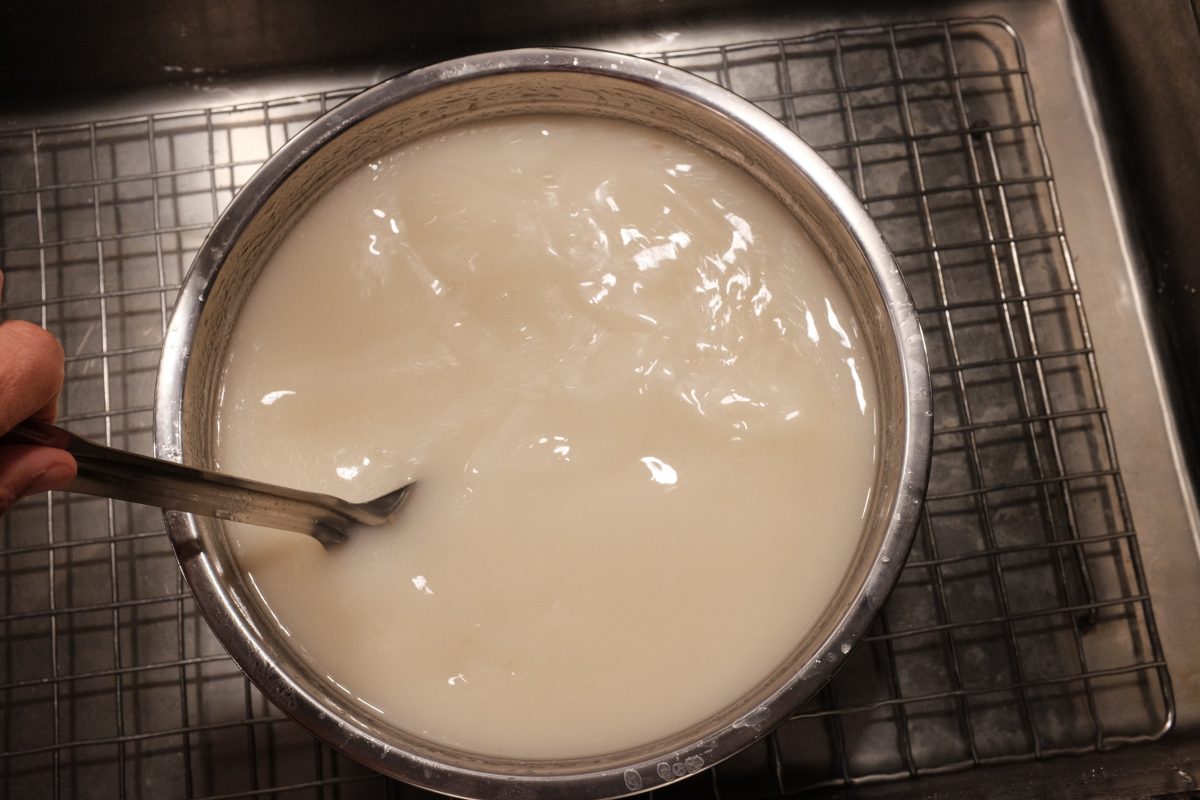
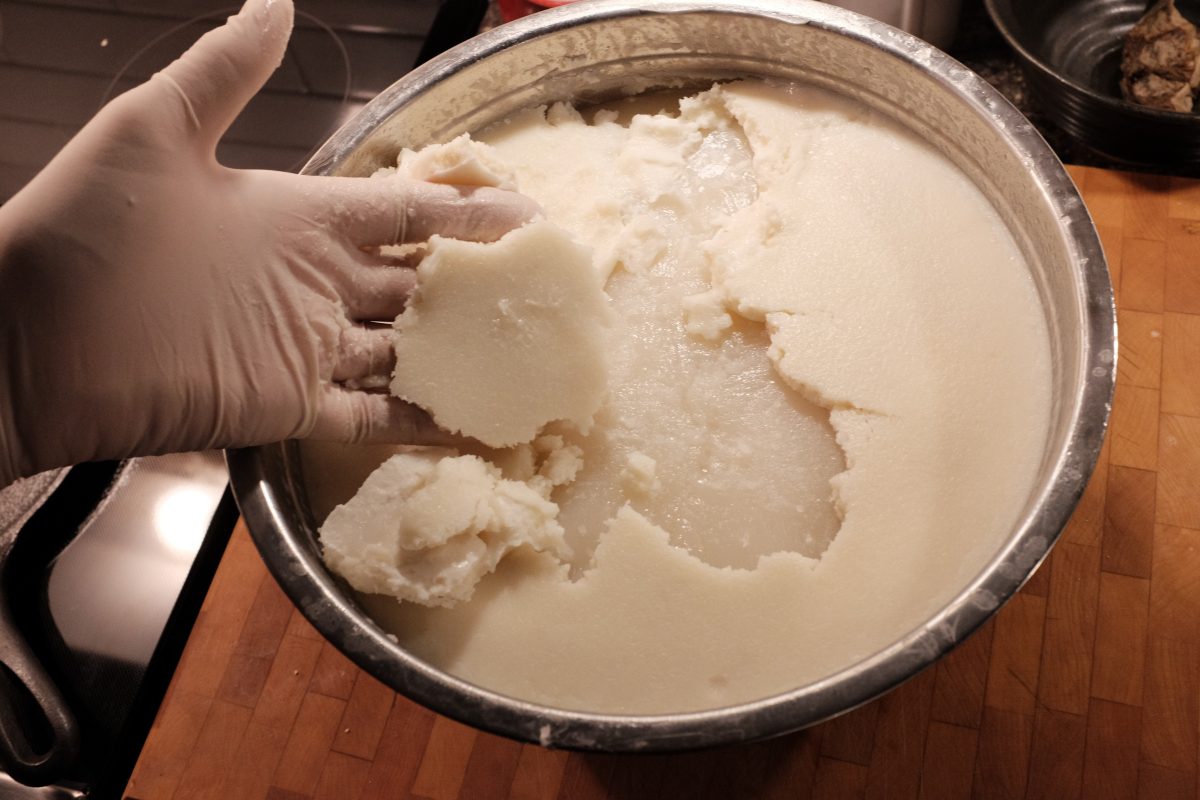
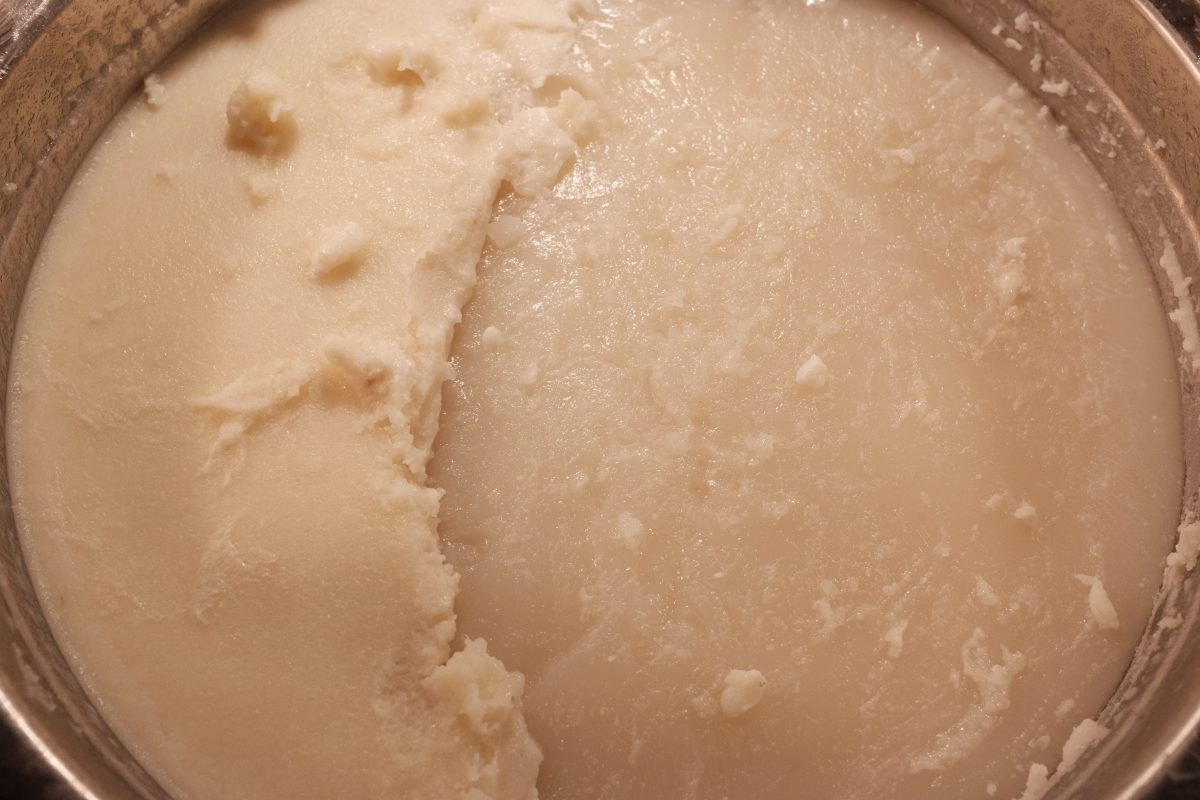
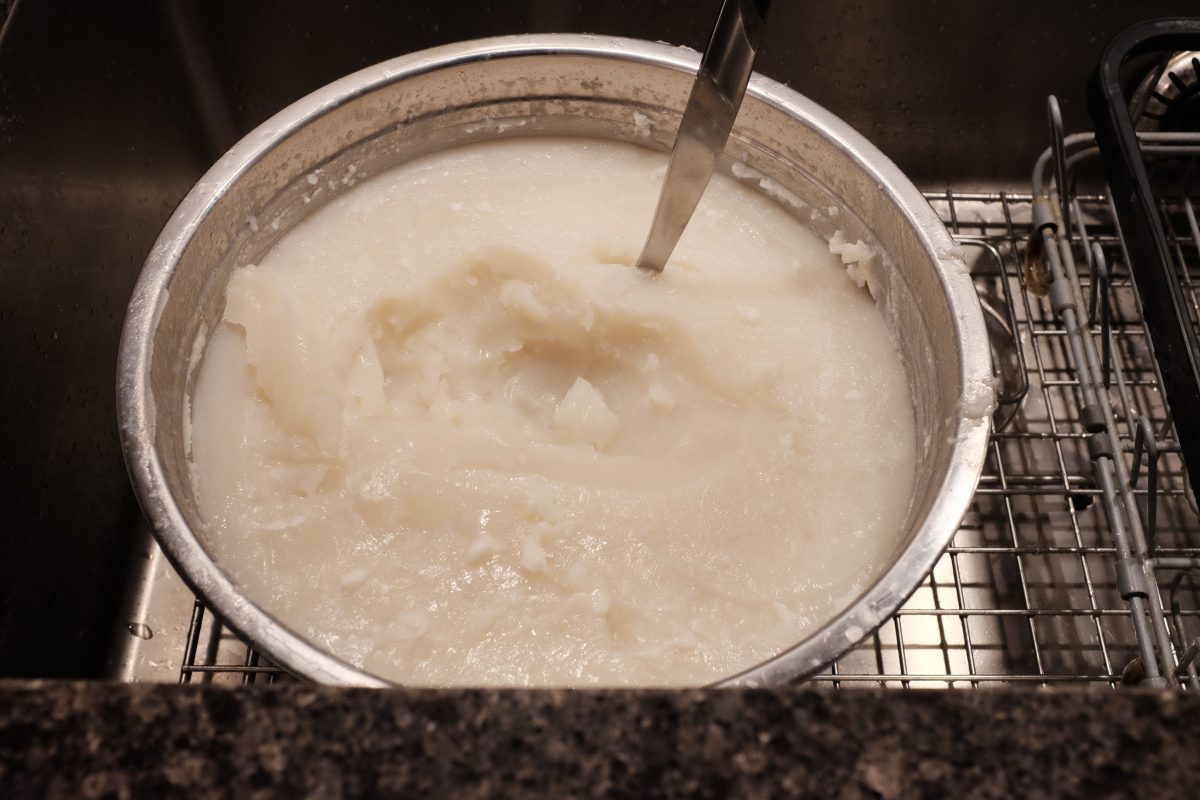
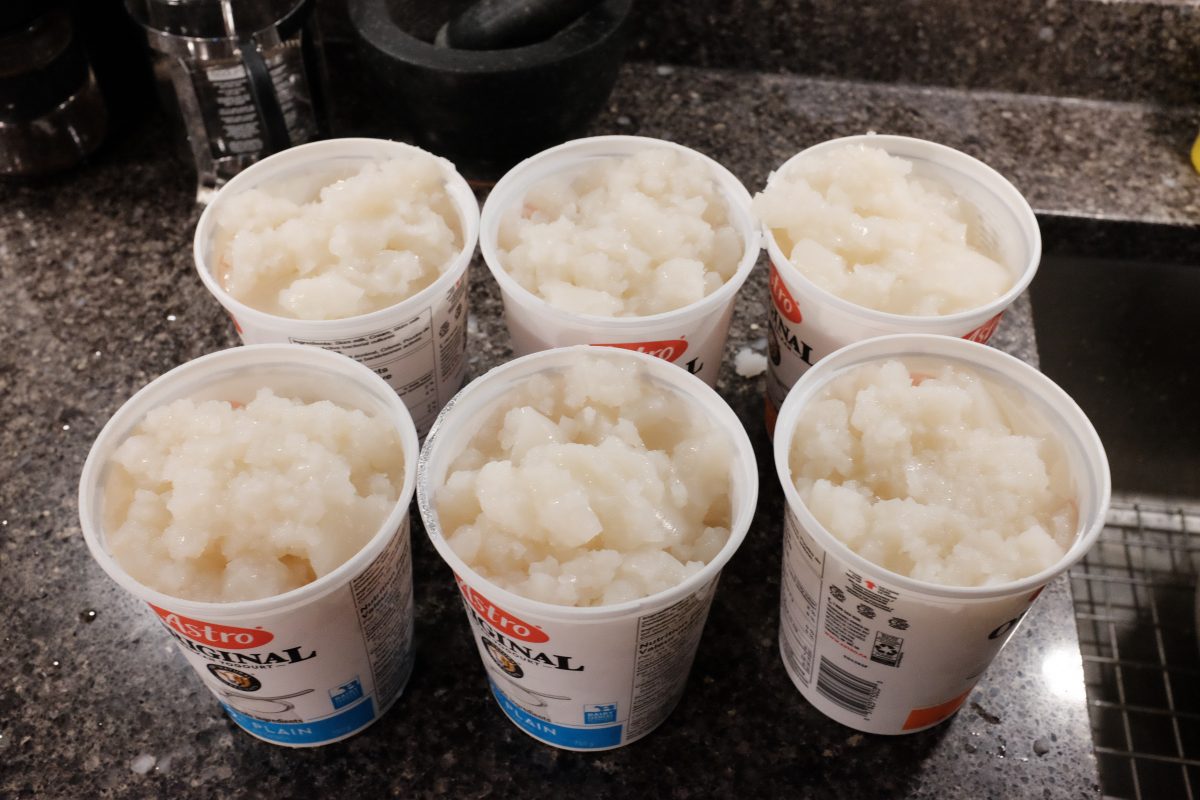
What to do with your bone broth (stock)
This is the essential milky base for Korean soups like seolleongtang (click here for recipe), doganitang or mandu guk. However, you can also use it as a base for almost any soup where you want good body and deep beef flavour. You can even drink it as is or add just a bit of cooked rice and chopped green onion for the simplest, easiest to digest, healthy and protein rich meal.
If you have any questions or comments or if I spelled Seolleongtang wrong, please let me know in the space below.
Applying for a Date
Beyond the first definition
If you ask a native English speaker the meaning of a word in English, you may get a few different answers. Take the word “date” for example. What does this word mean? One person will say that it is the number of a particular day in the calendar, as in July 15th is todays “date”. Someone else might say that a “date” is a social appointment where you meet up with someone to do a specific activity…like go to a movie. Another person might say that a date is a sweet fruit with a pit in the middle…as in “date” squares. A single word can have several different meanings. The same is true in other languages.
I have been learning Korean for several years and a lot of my vocabulary consists of words for which I know only one basic meaning. I think this is normal in language learning. More exposure to the language over time will show these words in unfamiliar contexts. Then, you look them up and discover new meanings. This is progress.
Shin-cheong (신청하다) means “to apply” for something
***I don’t think romanizing Korean words is very useful but I’ll do it here so you can recognize the word in this post and get an idea of what it might sound like.
I learned the word shin-cheong/신청하다 many years ago. It was in a vocabulary list that gave a single definition: “to apply for something”. For example… to apply for a job or a passport or a credit card. Ok…I got it. “Shin-cheong/신청하다” means “to apply for”. I remembered this word.
What else could it mean?
While studying recently, I listened to a conversation in Korean online where a man asked a female coworker to go out for a drink after work. She was surprised so she questioned him in Korean: “What? Are you asking me on a date??”
Now…in this situation, she used the word “shin-cheong/신청” in place of the english verb “asking”. “데이트 신청을 해요?” is what she said in Korean (don’t worry if you can’t read this).
So..with my limited understanding of the word “shin-cheong/신청”, the translation in my mind sounded like this: “Are you applying for a date with me?”
This made me laugh and I knew that I was misunderstanding something. Of course, I looked it up and found that “shin-cheong/신청” also means “to make a request/ask for something”. This meaning is commonly used in dating to “request” that the person go out with you. In others words “ask them out”.
Why not “apply” for a date though?
Then I started to think that maybe applying for a date was not a bad idea. It has to be better than embarrassing dating apps and online algorithm match-ups.

I imagined it like this:
If you see someone you want to date, you would simply submit an application to them, like applying for a job. Dating is work, isn’t it? The application could give your name, birthdate, contact information, hobbies, life goals, core values, expectations etc.. A good application could even include references from people you have dated in the past who will confirm that, although it didn’t work out, you don’t seem crazy or dangerous. A good cover letter stating why you are interested in dating the person could increase your chances of getting a callback.
So, in this imaginary world, it would be perfectly normal to walk up to someone you find attractive and hand them an application. The social convention would require that the person accept the application without judgement or emotion. Maybe there would be just a few polite questions or a little small talk. The whole exchange should take no more than a minute. Later the person can choose the most promising candidate and set up an interview (Isn’t a first date really an interview?)
How is this better than online dating?
First impressions or “gut reactions” are a kind of animal instinct we all have. I think these impressions are pretty reliable and accurate. If someone meets you face to face and hands you an application…simply by meeting them physically, you are learning things about them on a subconscious level. Important information is being exchanged, even in those few seconds. This is where online dating sites and dating apps fail.
Sure, you can flip-and-find someone online who has a cute picture and sounds amazing in their self-promotional blurb and set up a date with them. Then you probably find out that they are not at all what you expected. This is such a waste of time. Wouldn’t it be better to have a quick meeting first and then get the details to consider afterwards? Maybe get a few applications to compare..call a few references?
In the world outside my imagination…
I suppose this would probably never work..no room for advertising. It was just a cute and funny idea that popped into my head when I failed to translate accurately.
“Are you applying for a date with me?”
“Why, yes..thank you for your consideration. I look forward to hearing from you. Sincerely (your name here)”
I guess online dating apps are the new normal and they are here to stay. We have been trained over the years to filter all of life’s events through our devices. I suppose it works sometimes. But, I still believe that the best way to meet someone is to meet them, face to face, out in the world. And listen to your instincts.
If you have any questions or comments or if you would like to submit an application, please use the form below.
Billy Carter Red: 10 year anniversary
UK 2018
In the spring of 2018, I travelled to Brighton UK to attend the Great Escape music festival. I had come to see Say Sue Me, one of my favourite new discoveries as well as 3rd Line Butterfly, legends from the early Korean indie scene. These two bands along with Adoy and Billy Carter were scheduled to play at a Korean Music Spotlight event. I had never heard of Adoy or Billy Carter so, in the weeks leading up to the festival, I did some reading online and listened to a bit of music from both bands.
Adoy had a laid back, smooth R&B sound that I just couldn’t connect with. And, I wasn’t sure about Billy Carter who were often described as a “blues band”. Usually, when I hear “blues band” I immediately get suspicious and think that I am not going like it. I do like old lo-fi blues but most modern takes on the genre are not interesting for me. I wondered what kind of blues would come out of Seoul?
As I would soon find out, describing Billy Carter as a “blues band” left a lot of elements out of the equation. Yes, they had solid roots in blues but they were so much more than that. The Billy Carter lineup at the time was Jiwon Kim on vocals and keys, Jina Kim on guitar and vocals and HyunJoon Lee on drums.
The Windmill Brixton
The first time I saw Billy Carter, they were opening for Say Sue Me at The Windmill Brixton in London UK. I didn’t have time to listen to their records much beforehand so I was hearing most of their songs for the first time. But even after just one show, I knew that I was interested in seeing more of Billy Carter. After their set, I met Jina and Jiwon while i was buying a t-shirt at the merch table. I remember getting the impression that they were not interested in talking to me. I think we were a little suspicious of each other : ) It makes me laugh now when I think about it!

The Great Escape Festival 2018
The day after the Windmill gig, I got to see Billy Carter play at a little club called Volks as part of the Great Escape Festival. This club was off the main drag near the beach. When I got arrived, there were probably less than 30 people in the place, almost all men. Even before the band got on stage I felt a bit nervous for them….”Why aren’t there more people here? Why isn’t it darker in here? Why is it all old men?” When I go to shows, I almost never worry about the band being shitty. I often worry about the audience or the venue being shitty instead. This was what I was feeling here…
The band set up, had a quick sound check and then launched right in. From that point on, I don’t think that I blinked the whole time. The musicianship was incredible, the singing powerful. The band played in front of 30 people as if they were headlining a stadium. I was really floored. For most of the songs, there was only drums (by the excellent Hyun Joon Lee) and Jina’s guitar. Jiwon added keys and melodica here and there. But the sound, especially from the guitar, was massive! I couldn’t understand how these three people could make so much great noise together. And the physicality of the band….they never stopped moving, jumping, dancing…

As the band was packing up, I went out for some fresh air and wondered how I could describe the show I that I had just seen. For some reason, the word that came to mind was “demonic”. When I was watching these musicians on stage, they looked like they were possessed. Not in some affected theatrical way. Instead, they seemed to truly love and believe in the music they were making. They were possessed by their own art. It was contagious. I felt it too.
While I was outside for a smoke, I happened to see Jina and Jiwon come out of the club and light up. Now, I am not exactly a shy person but, after seeing what I just saw, I have to admit that I was a little bit afraid of these two! Eventually curiosity overcame fear and I walked over to say hi. We had a cigarette together and ended up having a really nice talk about everything from music to human rights in Korea vs Canada (my home). I remember Jina saying how much she would love to live in a place like Canada and feeling pretty proud about that.


I was able to catch Billy Carter one last time that weekend. This show was an official Korean Music Showcase full of industry people. The lineup included 3rd Line Butterfly, Billy Carter and Say Sue Me. It was an epic show for me, one I will never forget. I was thrilled to see these bands together in such a small space. At the end, I did a little tour around to say farewell to everyone I had met over the weekend. Just before I left, Jiwon (who I was mildly afraid of the day before) ran over and gave me a huge hug. So much for being scary haha..


The Great Escape 2018 was a pivotal event in my life. It reignited my love for live music and introduced me to artists that I might otherwise never get the chance to see. Billy Carter was a big part of that experience and I have been keeping up with them and their new projects as they continue to evolve as artists and activists. They will always occupy a warm place in my heart.


Billy Carter at Great Escape Festival Brighton UK 2018
Happy Anniversary!

The Red EP 10th Anniversary
The first Billy Carter EP was released 10 years ago this summer. This 5 track introduction to the band is probably the grittiest sounding of all their releases. It is one of my personal favourites and, I think, one of the most important Korean indie rock records of all time. Today, I still listen to it with the same joy as I did the first time I heard it many years ago.
The title track “Silent/침묵, starts with a simple drum beat that soon gets swarmed with dirty fuzzy guitar noise. This gives way to a sticky and aggressive guitar riff that is a signature of Jina Kim’s sound in the studio as well as in live performances. Jiwon Kim’s soulful vocals power through it all and add to the high voltage blues assault. After a couple of choruses, the song itself suddenly goes silent. A ripping single note fuzz attack opens it back up over rising drum beats and wailing vocals that carry the song to the end. It sounds like a demonic chant. The lyrics are an indictment (in Korean language) of the tendency towards silence in the face of sadness and injustice. You can hear the blues influences in this song. But, the punk rock (bordering on metal) noise and riffing takes it to the very hard and ragged edge of anything I would think of as a blues.
Lost my Way, the second track, is definitely rooted in 12 bar blues. Jina’s guitar line defines the pace of the song as much as the drums. This is real rhythm guitar playing, keeping pace with, mirroring and complimenting the drum track. Because the sound is already so huge, it’s easy to forget that there is no bass player here. Jina’s guitar playing does double duty in holding down the basic rhythm of the song (a layer of sound normally provided by the bass guitar) and providing fun and energetic riffs and chords as well. This is one of the best parts of seeing them live and I have often wondered how it is even possible for a band to make so much satisfying noise with just a guitar and drum kit and some occasional keys and melodica. Jiwon and Jina share vocals on this track both alternating lines and harmonizing. Their singing styles are different but also complimentary. They sound great together, like two friends singing at the top of their lungs on the way back home from a bar at sunrise after many drinks and smokes. This song starts loud and frantic and just gets louder and more raucous as it rolls along. A fun track beginning to end.
The third track, Time Machine, pulls back the volume and intensity, but only just a little. A sad and lonely harmonica gives way to Jiwon’s powerful smokey slow blues style and Jina’s choppy guitar chords and low note grinding riffs. The lyrics seem to be reflection on past personal and family trauma and its’ lasting effects. “If I got a time machine, would go back and tell my dad not to cheat on his wife..If not, your daughter can never believe her men in her life.”. These are personal and direct lyrics, the sort that would come up later in the bands’ career especially on their last full length release Don’t Push Me. The guitar noise builds steadily as the song progresses, occasionally disintegrating into dissonance and broken rhythms adding to the sense of hopelessness and desperation that threads through the whole song.
Spring (봄), the second to last track, starts with a Johnny Cash style freight train Boom-chicka-boom rhythm guitar that bounces along until the vocals begin. This time Jina takes the microphone while playing a fun delta blues kind of guitar melody (so fun that I had to learn to play it myself). Jiwon adds a few sweet harmonies halfway through. Then, at about two minutes in, just as you are starting to think that Billy Carter decided to give you a nice easy listen, the song bursts open in a nuclear storm of guitar noise and full throttle screaming. Once the dust settles, Jiwon takes her turn at a verse and the guitar melody finally unwinds to the sound of birds tweeting in the spring sunshine. My Korean is not good enough to understand most poetry and metaphor. I suspect that the lyrics are much darker than the music might lead you to think. Somehow, I feel like they may be referencing environmental destruction or emotional disappointment here but… I can’t be sure. I will have to ask next time I get a chance!
The EP closes out with You Go Home. It features big juicy guitar riffs chugging along as Jina and Jiwon take turns singing about what sounds like a very messy end to a night of heavy drinking. A universal experience I think, especially in Korea : ) The song winds up with shouts of “Go Home!”, “잘 가!” “안녕!” “annyeong!”. For some reason at the end of this one I can feel the bone chilling cold of stumbling home on an icy winter night, full of beer and soju, howling wind making my cigarette burn down at double speed. BRRR!!
After The Red
In addition to The Red, Billy Carter have released three other EPs titled The Yellow, The Green and The Orange. Each one goes in a slightly different direction musically but they are all unmistakably Billy Carter. I love each of them and would have a hard time picking a favourite.
Billy Carter has also released two full length albums, “Here I Am” in 2016 and “Don’t Push Me” in 2020. “Here I Am” is a fantastic listen that I think is closest to The Red EP in overall feel. “Don’t Push Me” saw the band move in a slightly different direction. The music maintained the same urgency but the lyrics became much more openly political and straightforward, addressing human (and animal) rights issues in a very direct way. It was a hugely influential album for so many people that I know including my daughter, who lists it as one of her favourites of all time. The album showcased Billy Carter at the peak of their powers as musicians and social critics. Unfortunately I was never able to see any live shows after this release but maybe sometime in the future…The band has been on hiatus since this release and I am not sure if they will ever resurface again as Billy Carter. Even if they have played their last show, I think they have left a collection of songs that any band on earth could be proud of and I am very happy to have had the pleasure of seeing them live even a few times. Happy Red Anniversary Billy Carter!
Bossam Leftovers: Pork and Vegetable Udon
Bossam Part 2:
Earlier I put up a recipe for a simple bossam. Towards the end, I mentioned that if you go easy on the salt in the braising liquid, you can use it to make another delicious pork dish. This is what I have done with the leftover braising liquid from that recipe: Pork and Vegetable Udon. This recipe made one huge portion but could very easily make 2 portions by adding more noodles.
Ingredients:
- Leftover braising liquid from Bossam recipe
- Leftover pork meat (if any) thin slices
- 1/2 onion sliced thin (the other half of the onion from the Bossam recipe)
- 3 cloves garlic sliced thin
- 2 green onions/scallions chopped
- 1 fresh green chilli pepper sliced into thin rounds
- 1/2 zucchini sliced thin
- 1/2 package of enoki mushrooms
- 1 cup green cabbage sliced thin
- 1 or 2 portions frozen udon noodles
I am using vegetables that I have in my refrigerator at the moment. You can substitute just about any vegetable you would normally put in a soup. You can use different mushrooms too. Different noodles could work as well. I like these Udon noodles. I usually find them at the neighbourhood Asian grocery store in the freezer section. They are convenient because they are frozen in single portions. If you don’t have leftover pork meat, don’t worry. The braising liquid has plenty of delicious pork flavour on it’s own. Sub in some extra mushrooms. I had enokis on hand but sliced king oyster mushrooms are even better!
Process









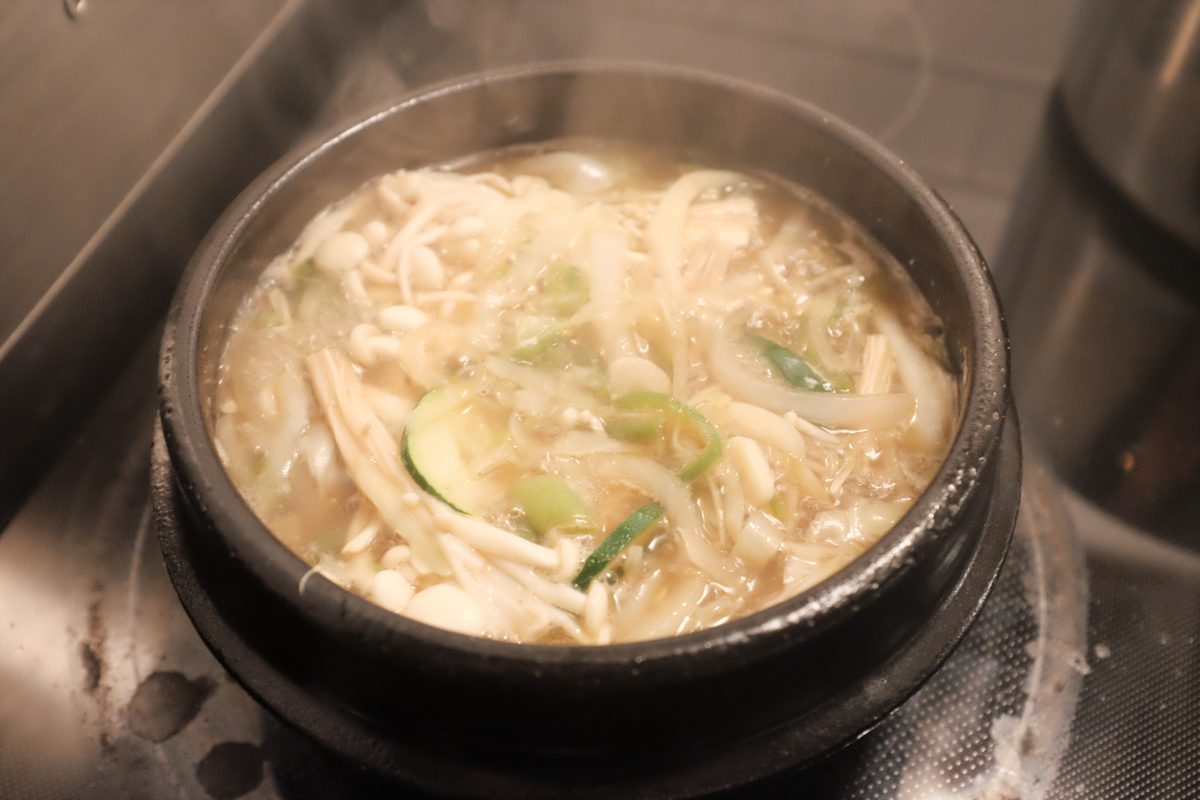


This took almost no time at all…
I think this probably took around 15 minutes to make. The leftover braising liquid from the bossam recipe is a perfect, rich and complex broth to cook vegetables and noodles in. This was a delicious meal that used up every last leftover from the previous night.
If you have any questions, comments or other ideas please leave them below. I always look forward to hearing from you.
Bossam Braised Pork Belly
This is a very basic version of bossam. The main event here is the meat. Fresh pork belly is braised in a liquid made with strong aromatics to flavour the meat and to soften some of the gamey aroma of the pork.
It can be served with kimchi and various sides, wrapped in a leaf of cabbage, perilla or lettuce.
There are a couple of good recipes here and here which include all the components for a more traditional Korean preparation with pickled Napa cabbage leaves and spicy shredded radish. This is a delicious way to eat it but I am going to do something a little different with things I already have in the refrigerator.
Ingredients for Braised Pork
- 1 kg (around 2.5lb) pork belly
- 1 small chunk (25gr) fresh ginger sliced
- 12 garlic cloves roughly chopped
- 1/2 onion
- 2 green onions roughly chopped
- 30ml / 2 tablespoons doenjang
- 15ml / 1 tablespoon instant coffee
- 1 tablespoon whole black peppercorns
- 1.5 litres / 6 cups water
Other Ingredients:
Once the pork is done, you will need something leafy to wrap it in. You may also want to add other fillings to your pork wraps. This can be anything from kimchi to fresh crunchy veggies. Sometimes I even like a little bit of nice mustard in them. This time around, I will use:
- red leaf lettuce, washed, dried and separated into leaves
- perilla leaf (kkaennip) washed and dried
- napa cabbage kimchi
- Korean radish kimchi or (kkakdugi)
- pan fried anchovies with peanuts (myeolchi bokkeum)
Process










Serving
Serve the pork slices with sides of your choice and leaves to wrap it with.


What about the leftover braising liquid?
Store any leftover meat in the braising liquid. Reheat it covered in the liquid as well.
The first time I made this, I noticed that the leftover braising liquid is actually very tasty. You can’t really notice the coffee as a distinct flavour. The liquid is just a warm and delicious pork and doenjang flavour. The only problem is that it is a little too salty.
The next time I made it, I decided to remove extra salt from the recipe, using doenjang only as the main seasoning. The meat is still delicious and can be salted a little after cooking if you think it needs it. But, keep in mind, you are also eating this with kimchi or maybe salted shrimp or other well seasoned add ons so very salty meat is not so necessary.
Once you reduce the salt, you are left with a delicious pork soup base. When the meal is done, I usually strain out all the solids and refrigerate it. The next day I combine it with shredded cabbage, the other half of the onion, mushrooms and frozen udon noodles, a little of the leftover pork and chopped scallions. It is surprisingly delicious! Find that recipe here.
If you have any questions or comments, please leave them below. Look forward to hearing from you.
Beef Bone Broth Version 1: Low and Slow
Broth vs Stock
I am calling this a “Beef Bone Broth” only because it seems to be the name that everyone is using these days. It makes a perfect base liquid for any number of soup or sauce recipes although it also has many other uses.
In professional cooking, a “broth” is a usually a lighter, thinner, and often salted liquid made by boiling vegetables and/or meat for a relatively short time. A “stock”, in contrast, is made from bones and their connective tissue, simmered for a very long time, sometimes with vegetables and aromatics, usually without salt. A broth is a thin and flavourful liquid while a stock is a thick, gelatinous and relatively flavourless liquid (until it is seasoned).
So..as you will see, what we are making here is nothing like a broth. It is a very simple beef stock.
Long, Low and Slow vs Hard and Fast
This recipe is for a long, low and slow method that cooks until the bones have nothing left to give. The end result is a mostly clear, slightly brown stock. It is thick and gelatinous, even slightly sticky. If you added mirepoix (say onions, celery, carrot) to this later in the process, you would end up with something like a Western white veal/beef stock.
The second one (click here for other version) is a hard boil and relatively fast stock (for beef bones). It will still take several hours but, it will result in a milky white broth with a nutty flavour and slightly thinner consistency. This is what you will often see in Seolleongtang or Mandu Guk (dumpling soup) in Korean restaurants.
Ingredients
You can make this as large or small as you like. I have made a recipe that fits into my biggest stock pot which holds around 12 litres / 3 gallons. Just make sure that the pot is big enough to keep bones submerged plus a little water on top.
- 4 kg / 8lb cut beef hip bones (this is usually a mix of marrow bones and knuckle bones)
- 1.5 kg / 3lb cut cow foot
- fresh cold water to cover them
My local Korean grocer keeps bags of cut beef bones in the freezer section all the time. And, there is a butcher near me that usually has frozen whole cow feet as well. Any butcher shop should be able to get you beef hip bones for stock. The cow foot is optional but it is made of of mostly connective tissue and this will add body and richness to your finished stock. If you can’t get cow foot, just omit or replace with regular hip bones.
Process
Wash and Soak






Initial Boil (blanching)





Simmering the stock





32 hours later….





Cooling and Storage

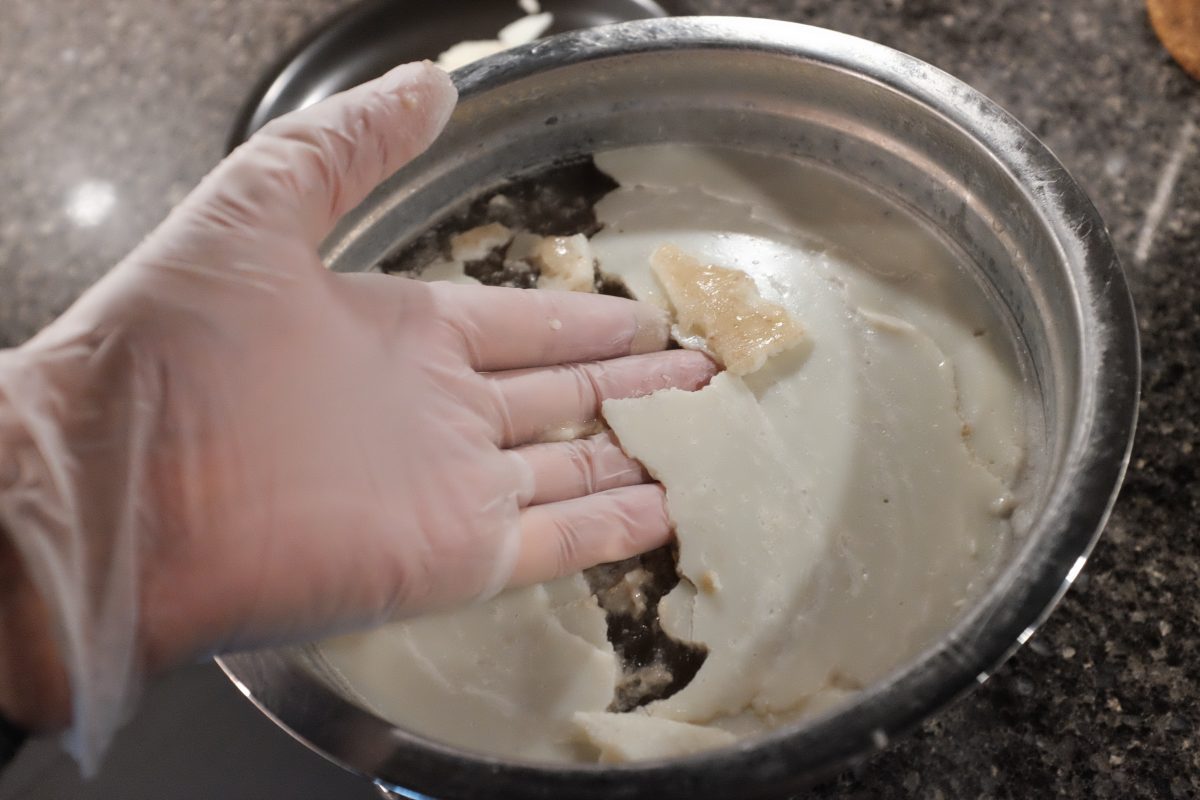



How to use your Beef Bone Broth
Simmer any combination of meat/vegetables/mushrooms in it for a delicious soup. Add your favourite noodles to it. Or, you can simply warm it up and add rice and seasoning. You can even drink it as is for a deeply nutritious and filling liquid snack.
This beef bone broth (stock) is a liquid rich in body and texture that is mostly neutral in flavour…a base for almost anything you can imagine. Soup, stew, sauce, smoothie…anything goes. If you have any recipe that has water as an ingredient, replace it with this stock to improve the flavour and the nutritional value. As I cook with this new stock, I will post up ideas as I make them.
Say Sue Me: One Week
In the beginning
This morning, I made a quick (and mostly impulsive) list of my favourite Say Sue Me songs. I was planning to take a long walk and I thought it would be fun to compile the tunes into a playlist to keep me company: a kind of “Greatest Hits” according to me. While I was doing this, I wondered: “Which song was it that first made me want to hear more from this band?”
The answer came quickly: “One Week”.
I first heard this relatively unknown band from Busan, Korea sometime in 2017/2018. At that time, the only thing available to me was a compilation of their first 2 Korean releases “We’ve Sobered Up” and “Big Summer Night” co-released by Damnably in the UK and Electric muse in Korea.
This one:


On first listen, I knew that I had never heard anything quite like it but, at the same time, it was warm and familiar. It felt like meeting an old friend unexpectedly. I was immediately hooked.
At that time, the song that I liked the most was “One Week”. I have listened to this recording hundreds of times and I have heard the band play it many times live. I still love it as much as when I first heard it. The energy never fades for me. While I was listening to it today, I thought: what it is that I like so much about this song? The answer was…everything. I think this song is pretty much perfect. I wondered if it might be fun to look at the song piece by piece and write a little essay about it.
So here we are:
Lyrics
Most Say Sue Me songs have English lyrics, this one included. Singer Sumi Choi 취수미, tells the cute and funny story of a presumably bratty younger sister who, for some unknown reason, decides to be good to her big sister, much to her older siblings surprise. She can only manage to keep this up for “just that one week“…as she wavers back and forth between “evil jealousy and pure love again”.
It is such a relatable and charming story told in the most straightforward manner. The little sister is just stating the facts without explanation in the inimitable way that only a child can. If you listen to Say Sue Me over their long career, you will notice that Sumi is capable of poetic and deeply moving lyrics. But this is something else. It is the voice of a child from the past, written perfectly without any affectation.
Music
This compilation album has a do-it-yourself, live-from-our-basement lo-fi sound. It did get professionally remastered some years later and I have both versions. They are not so different but if I had to choose, I might pick the original version.
The base layer rhythm guitar is scratchy and distorted and sounds like it is coming out of a tiny transistor radio speaker, ragged and compressed. Underneath, Jaeyoung Ha 하재영 plots a simple bass line that just sticks to the root notes, no flourishes. I think there is power in this approach to bass playing especially in a song like this. The Ramones did this for their whole career.
Original drummer Semin Kang’s 강세민 steady rhythm and fills are deceptively simple and perfect here. If you listen closely you can hear spaces where he is just so slightly behind the beat that it gives the whole song a cool slack character. You feel like you are already a couple of beers in while listening. He sounds relaxed and it is contagious.
Then there is guitarist Byungkyu Kim 김병규. I would argue that Byungkyu is one of the most underrated guitar players working today. Yes, his technique is flawless. But with the caliber of musicianship in todays’ indie scene, this is not so unusual. Where Byungkyu shines is in his ability to create tension and release, his ability to deliver raw emotion in solo passages and his sense of melody and phrasing. He can dissolve a solo into a whirlwind of dark noise and then ride back out again on the most heart-wrenching crescendo of notes. In general, I don’t often enjoy guitar solos. But Byungkyu is a different story. Whenever I have seen the band live, there are a couple of his solos that always move me to tears. Every time.
With these early songs, he is not quite there yet, but his playing still forms the core of the Say Sue Me sound. Heavy, wet sounding spring reverb on single note themes run throughout this record. The verses of “One Week” have a simple line on the low strings sometimes mirroring Sumi’s vocals and sometimes knitting the bars together. Then the chorus ramps up with bouncing energetic 2 note chords higher up the neck from Byungkyu, with Sumi raking muted strings through a big wall of reverb underneath. It vibrates with fun energy. The noise underneath makes it sound like you are desperately trying to tune in the scratchy song on a shortwave radio as it comes over the airwaves from the opposite side of the world.
The best part is…
…the bridge: the music and the recording as well. The guitars rock back and forth on 2 chords and tons of reverb noise under Sumi chanting “I’m changing every week” opening up to a round of “evil jealousy, pure love again” as the volume goes up, the cymbals get hammered and the vocals get doubled and layered with harmonies. The last chord of the last round of “pure love agaaaaaaaaaain”! is a BIG FAT F-major that sounds like four hands are hammering it down on a gigantic church organ. A perfect stuttering drum fill brings it back to a volume-up chorus and then the final chord ringing out. This is one of those songs that you can’t possibly play loud enough.
It is a brilliant song from beginning to end that instantly cemented my love for this bands music.
What came after…
“One Week” is not necessarily my favourite Say Sue Me song but it is the one that got me hooked on their music. Since that time, the band has released many singles, EPs and albums and a few band members have come and gone. The core sound of these early recordings is still there but the song writing and musicianship keeps getting better with each release. Listen to the song “The Last Thing Left” from the album of the same name to get an idea of how far this band has come since the early days of “One Week”.
If you want to hear more Say Sue Me, you can stream them on all the usual platforms. For merch and physical copies of music, check out their Bandcamp. If you want to see what’s up day-to-day or check out the current tour, here is their Instagram .
What was the song that first got you hooked on Say Sue Me? Please leave a comment below.